The Fall cohort application deadline is August 25, 2024.
Click here to apply.


Featured Posts

Yale University's The Ulysses S. Grant Foundation Summer Program for Middle Schoolers - Should You Do It?

10 STEM Research Programs for High School Students in California

Northwestern University's Center for Talent Development (CTD) Programs - Should You Participate?
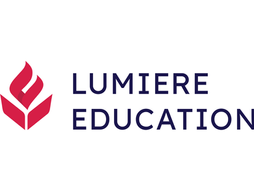
10 Free Summer Programs for Middle School Students in NYC
10 Great Research Topics for Middle School Students
Middle school is the perfect time to start exploring the fascinating world of research, especially if you're passionate about STEM and the humanities. Engaging in research projects now not only feeds your curiosity but also develops critical thinking, problem-solving skills, and a love for learning. Whether you're intrigued by the secrets of the universe, the beauty of numbers, or the complexity of robotics, there's a research project that you can pursue to help you build your knowledge. Let's dive into some advanced yet accessible research topics that will challenge you and enhance your academic journey.
1. Program your own robot
What to do: Start by defining the purpose of your robot. Will it be a pet robot that follows you around, or perhaps a robot that can help carry small items from one room to another? Sketch your design on paper, focusing on what sensors and motors you'll need. For instance, a robot that follows light might need light sensors, while a robot that avoids obstacles will require ultrasonic sensors. Use an Arduino or Raspberry Pi as the brain. You'll need to learn basic programming in Python (for Raspberry Pi) or C++ (for Arduino) to code your robot's behavior.
Tips to get started: The official websites for Arduino and Raspberry Pi offer tutorials for beginners. For more specific projects, such as building a pet robot, search for guides on Instructables that detail each step from hardware assembly to software programming.
2. Design a solar-powered oven
What to do: Investigate how solar ovens work and the science behind solar cooking. Your oven can be as simple as a pizza box solar oven or more complex, like a parabolic solar cooker. Key materials include reflective surfaces (aluminum foil), clear plastic wrap to create a greenhouse effect, and black construction paper to absorb heat. Experiment with different shapes and angles to maximize the heat capture and cooking efficiency. Test your oven by trying to cook different foods and measure the temperature achieved and cooking time required.
Tips to get started: The Solar Cooking wiki is an excellent resource for finding different solar cooker designs and construction plans. YouTube also has numerous DIY solar oven tutorials. Document your process and results in a project journal, noting any changes in design that lead to improvements in efficiency.
3. Assess the health of a local ecosystem
What to do: Choose a local natural area, such as a stream, pond, or forest, and plan a series of observations and tests to assess its health. Key activities could include water quality testing (for pH, nitrates, and phosphates), soil testing (for composition and contaminants), and biodiversity surveys (identifying species of plants and animals present). Compile your data to evaluate the ecosystem's health, looking for signs of pollution, habitat destruction, or invasive species.
Tips to get started: For a comprehensive approach, NOAA’s Global Monitoring Laboratory provides information on atmospheric and environmental monitoring techniques. Tools like iNaturalist can assist in species identification, and water and soil testing kits are available from science education suppliers.
4. Develop an educational app
What to do: Identify a gap in educational resources that your app could fill. Perhaps you noticed that students struggle with a particular math concept, or there's a lack of engaging resources for learning a foreign language. Outline your app’s features, design the user interface, and plan the content it will deliver. Use MIT App Inventor for a drag-and-drop development experience, or Scratch for a game-like educational app. Test your app with classmates or family members, and use their feedback for improvements.
Tips to get started: Both MIT App Inventor and Scratch provide tutorials and community forums where you can learn from others’ projects. Begin with a simple prototype, focusing on one core feature, and expand from there.
5. Model rocketry: design, build, and launch!
What to do: Dive into the basics of rocket science by designing your own model rocket. Understand the principles of thrust, aerodynamics, and stability as you plan your rocket. Materials can range from simple kits available online to homemade components for the body, fins, and nose cone. Educate yourself on the proper engine selection for your design and the recovery system to ensure your rocket returns safely. Conduct a launch in a safe, open area, following all safety guidelines.
Tips to get started: The National Association of Rocketry is a treasure trove of information on model rocket safety, design, and launch procedures. For beginners, consider starting with a kit from Estes Rockets , which includes all necessary components and instructions.
6. Create a wearable electronic device
What to do: Envision a wearable device that solves a problem or enhances an aspect of daily life. It could be a smart bracelet that reminds you to stay hydrated or a hat with integrated LEDs for nighttime visibility. Sketch your design, listing the components you'll need, such as LEDs, sensors, a power source, and a microcontroller like the Adafruit Flora or Gemma. Plan your circuit, sew or assemble your device, and program it to function as intended.
Tips to get started: Adafruit’s Wearables section offers guides and tutorials for numerous wearable projects, including coding and circuit design. Start with a simple project to familiarize yourself with electronics and sewing conductive thread before moving on to more complex designs.
7. Explore the science of slime and non-Newtonian fluids
What to do: Conduct experiments to understand how the composition of slime affects its properties. Create a standard slime recipe using glue, borax (or contact lens solution as a safer alternative), and water. Alter the recipe by varying the amounts of each ingredient or adding additives like cornstarch, shaving cream, or thermochromic pigment. Test how each variation affects the slime’s viscosity, stretchiness, and reaction to pressure.
Tips to get started: The Science Bob website offers a basic slime recipe and the science behind it. Document each experiment carefully, noting the recipe used and the observed properties. This will help you understand the science behind non-Newtonian fluids.
8. Extract DNA at home
What to do: Use common household items to extract DNA from fruits or vegetables, like strawberries or onions. The basic process involves mashing the fruit, adding a mixture of water, salt, and dish soap to break down cell membranes, and then using cold alcohol to precipitate the DNA out of the solution. Observe and analyze the DNA strands.
Tips to get started: Detailed instructions and the science explanation are available at the Genetic Science Learning Center . This project offers a tangible glimpse into the molecular basis of life and can be a springboard to more complex biotechnology experiments.
9. Investigate the efficiency of different types of solar cells
What to do: Compare the efficiency of various solar panels, such as monocrystalline, polycrystalline, and thin-film. Design an experiment to measure the electrical output of each type under identical lighting conditions, using a multimeter to record voltage and current. Analyze how factors like angle of incidence, light intensity, and temperature affect their performance.
Tips to get started: Introductory resources on solar energy and experiments can be found at the Energy.gov website. Consider purchasing small solar panels of different types from electronics stores or online suppliers. Ensure that all tests are conducted under controlled conditions for accurate comparisons.
10. Study ocean acidification and its effects on marine life
What to do: Simulate the effects of ocean acidification on marine organisms in a controlled experiment. Use vinegar to lower the pH of water in a tank and observe its impact on calcium carbonate shells or skeletons, such as seashells or coral fragments. Monitor and record changes over time, researching how acidification affects the ability of these organisms to maintain their shells and skeletons.
Tips to get started: NOAA’s Ocean Acidification Program offers educational materials and experiment ideas. For a simpler version of this experiment, see instructions for observing the effects of acidified water on eggshells, which are similar in composition to marine shells, at educational websites like Science Buddies .
By pursuing these projects, you will not only gain a deeper understanding of STEM principles but also develop invaluable skills in research, design, and critical analysis. These projects will teach you how to question, experiment, and innovate, laying the groundwork for future scientific inquiries and discoveries.
If you’re looking for a competitive mentored research program in subjects like data science, machine learning, political theory, biology, and chemistry, consider applying to Horizon’s Research Seminars and Labs !
This is a selective virtual research program that lets you engage in advanced research and develop a research paper in a subject of your choosing. Horizon has worked with 1000+ high school students so far, and offers 600+ research specializations for you to choose from.
You can find the application link here
One other option – Lumiere’s Junior Explorer Program
The Lumiere Junior Explorer Program is a program for middle school students to work one-on-one with a mentor to explore their academic interests and build a project they are passionate about . Our mentors are scholars from top research universities such as Harvard, MIT, Stanford, Yale, Duke and LSE.
The program was founded by a Harvard & Oxford PhD who met as undergraduates at Harvard. The program is rigorous and fully virtual. We offer need based financial aid for students who qualify. You can find the application in the brochure !
To learn more, you can reach out to our Head of Growth, Khushi Malde, at [email protected] or go to our website .
Multiple rolling deadlines for JEP cohorts across the year, you can apply using this application link ! If you'd like to take a look at the cohorts + deadlines for 2024, you can refer to this page!
Stephen is one of the founders of Lumiere and a Harvard College graduate. He founded Lumiere as a PhD student at Harvard Business School. Lumiere is a selective research program where students work 1-1 with a research mentor to develop an independent research paper.
- middle school students

Breaking News

Crafting The Future: An Inside Look at Marshalls High School in Los Angeles

Inclusive Relationship Meaning: Understanding the Concept

How to Get Out of School Excuses

Best Homeschool Curriculum for Autism: A Comprehensive Guide for Parents and Educators

Exciting Research Topics for Middle Schoolers to Fuel Curiosity

Working on the phonological skills by teaching phonemic awareness to the advanced level

What is the goal when de escalating crisis behavior at school ?

Middle school is a time of burgeoning curiosity and the perfect opportunity for students to engage in research that not only educates them academically but also cultivates skills for the future. By encouraging young learners to explore topics they are passionate about, educators and parents play a pivotal role in their intellectual development and the growth of their intrinsic motivation. This blog post outlines a diverse range of research topics suited to the inquiring minds of middle school students, giving them the freedom to deepen their understanding of various subjects while honing critical thinking and independent study skills.
Uncovering the Mysteries of History
Middle schoolers often find history fascinating, particularly when learning about the past from distinct perspectives. Here are some intriguing historical research topics to consider:
- The Unsung Heroes of the Civil Rights Movement: Apart from the well-known leaders, students can explore the contributions of lesser-known figures who played a significant role in the struggle for equality.
- The Impact of Ancient Civilizations on Modern Society: Researching the ways in which the Greeks, Romans, Egyptians, or other ancient societies have influenced contemporary culture, politics, and technology offers a broad canvas for exploration.
- Everyday Life in Different Historical Periods: Focusing on the routines, customs, and technologies that shaped people’s daily lives in times gone by can provide valuable insights into societal norms and individual experiences.
Science and the Natural World
The sciences are a playground of wonder, with an infinity of topics waiting to be explored. Here are some research ideas that can nurture a love for discovery and experimentation:
- Climate Change: Effects and Solutions: Investigating the causes and potential solutions to this global challenge can make students aware of their role in protecting the planet.
- The Wonders of the Solar System: Encouraging a study of the planets, their moons, and the vast expanse of space they inhabit can ignite dreams of interstellar exploration.
- Biodiversity and Ecosystem Conservation: Researching the variety of life on Earth and strategies to protect and sustain ecosystems can foster a sense of environmental stewardship.
Literature, Language, and Creative Expression
Language and literature are potent forms of human expression, allowing students to explore complex ideas and emotions. Here are some topics that bridge the gap between art and academia:
- Interpreting Classic Literature for Modern Relevance: Encouraging the study of timeless works can lead to discussions on their contemporary significance and the evolution of societal values.
- The Structure and Evolution of Language: Investigating the origins and changes in language over time can be a rich area of study, especially when paired with the examination of cultural shifts.
- The Intersection of Art and Literature: Exploring how visual arts and writing intersect to convey messages and emotions can be a fertile ground for interdisciplinary research.
Mathematics and Logic Puzzles
The precision and patterns found in mathematics can be both satisfying and thought-provoking. Middle school students often enjoy the thrill of solving problems and unraveling puzzles. Here are some mathematical research topics that can engage students’ analytical minds:
- Famous Mathematical Conjectures: Researching unsolved problems, such as the Goldbach conjecture or the Riemann hypothesis, can introduce students to the excitement of open questions in mathematics.
- The Application of Math in Various Industries: Investigating how mathematical principles underpin fields like music, art, sports, and technology can illuminate the subject’s real-world utility.
- The History of Mathematical Discoveries: Tracing the lineage of mathematical concepts through different cultures and periods can showcase the universality and timelessness of mathematics.
Social Sciences and Human Interaction
Studying human behavior and society can help students develop empathy and a deeper understanding of the world around them. Here are some social science research ideas to explore:
- The Impact of Social Media on Friendships and Relationships: Research could focus on positive and negative effects, trends, and the future of social interaction.
- Cultural Traditions and Their Meanings: Investigating the origins and contemporary significance of customs from various cultures can foster respect for diversity and a global perspective.
- The Psychology of Decision Making: Exploring the factors that influence human choices, from cognitive biases to social pressures, can provide insights into individual and collective behavior.
Technology and Innovation

Middle schoolers are often tech-savvy and interested in the latest gadgets and advancements. Here are some technology and innovation research topics to tap into that curiosity:
- The Impact of Gaming on Society: Research could examine how video games influence education, social issues, or even career choices.
- Emerging Technologies and Their Ethical Implications: Encouraging students to study technologies like artificial intelligence, gene editing, or wearable tech can lead to discussions on the ethical considerations of their use and development.
- Inventions That Changed the World: Chronicling the history and influence of significant inventions, from the wheel to the internet, can provide a lens through which to view human progress.
By providing middle schoolers with the opportunity to conduct meaningful research in a topic of their choosing, we not only deepen their education but also equip them with the skills and passion for a lifetime of learning. This list is just the beginning; the key is to foster curiosity and guide young minds toward engaging, challenging, and diverse research experiences. Through such explorations, we empower the next generation to think critically, communicate effectively, and, most importantly, to nurture their innate curiosity about the world.
Implementing Research Projects in the Classroom
Encouraging middle school students to undertake research projects requires a strategic approach to ensure sustained interest and meaningful outcomes. Here are some methods educators can employ:
- Mentorship and Support: Pairing students with teacher mentors who can guide them through the research process, provide feedback, and encourage critical thinking is essential for a fruitful research experience.
- Cross-Curricular Integration: Linking research topics to content from different subjects helps students appreciate the interconnectedness of knowledge and develop versatile learning skills.
- Use of Technology and Media: Incorporating digital tools for research, presentation, and collaboration can enhance engagement and teach essential 21st-century skills.
- Presentation and Reflection: Allocating time for students to present their findings nurtures communication skills and confidence, while self-reflection activities help them internalize their learning journey.
These strategies can create a robust framework within which students can pursue their curiosities, leading to a more personalized and impactful educational experience.
What is a good topic to research for middle school?
A good topic for middle school research could delve into the Role of Robotics in the Future of Society . Students can explore how robotics may transform jobs, healthcare, and everyday life. They can examine the balance between automation and human work, predict how robots could augment human abilities, and discuss the ethical dimensions of a robotic future. This inquiry not only captivates the imagination but also encourages critical thinking about technology’s impact on tomorrow’s world.
What are the 10 research titles examples?
- The Evolution of Renewable Energy and Its Future Prospects
- Investigating the Effects of Microplastics on Marine Ecosystems
- The Influence of Ancient Civilizations on Modern Democracy
- Understanding Black Holes: Unveiling the Mysteries of the Cosmos
- The Impact of Augmented Reality on Education and Training
- Climate Change and Its Consequences on Coastal Cities
- The Psychological Effects of Social Media on Teenagers
- Genetic Engineering: The Possibilities and Pitfalls
- Smart Cities: How Technology is Shaping Urban Living
- The Role of Nanotechnology in Medicine: Current Applications and Future Potential
Fascinating Facts About Middle School Research Topics
- Interdisciplinary Impact : Research projects in middle school often blend subjects, such as the integration of art and mathematics when exploring patterns and symmetry, which helps students discover the interconnectivity of different fields of knowledge.
- Skill Building : Engaging in research equips middle schoolers with advanced skills in critical thinking, problem-solving, and time management, which are beneficial across their academic journey and beyond.
- Diversity in Content : Middle school research topics are notably diverse, ranging from examining the role of robotics in society to exploring the psychological effects of social media, catering to a wide array of student interests and strengths.
- Tech Savvy Learning : Technology-based research topics, such as the influence of smart cities or the impact of augmented reality in education, are deeply relevant to tech-savvy middle school students, making learning more engaging and relatable.
- Cultural Relevance : Researching topics like cultural traditions and their meanings encourages middle schoolers to develop a global perspective and fosters a deeper understanding and appreciation for the diversity within their own school community and the world at large.
You May Also Like

More From Author

+ There are no comments
Cancel reply.
Save my name, email, and website in this browser for the next time I comment.

You May Also Like:


ChatGPT for Teachers
Trauma-informed practices in schools, teacher well-being, cultivating diversity, equity, & inclusion, integrating technology in the classroom, social-emotional development, covid-19 resources, invest in resilience: summer toolkit, civics & resilience, all toolkits, degree programs, trauma-informed professional development, teacher licensure & certification, how to become - career information, classroom management, instructional design, lifestyle & self-care, online higher ed teaching, current events, how to help middle school students develop research skills.
As the research skills you teach middle school students can last them all their lives, it’s essential to help them develop good habits early in their school careers.
Research skills are useful in nearly every subject, whether it’s English, math, social studies or science, and they will continue to pay off for students every day of their schooling. Understanding the most important research skills that middle school students need will help reach these kids and make a long-term difference.
The research process
It is important for every student to understand that research is actually a process rather than something that happens naturally. The best researchers develop a process that allows them to fully comprehend the ideas they are researching and also turn the data into information that is usable for whatever the end purpose may be. Here is an example of a research process that you may consider using when teaching research skills in your middle school classroom:
- Form a question : Research should be targeted; develop a question you want to answer before progressing any further.
- Decide on resources : Not every resource is good for every question/problem. Identify the resources that will work best for you.
- Gather raw data : First, gather information in its rawest form; do not attempt to make sense of it at this point.
- Sort the data : After you have the information in front of you, decide what is important to you and how you will use it. Not all data will be reliable or worthwhile.
- Process information : Turn the data into usable information. This processing step may take longer than the rest combined. This is where you really see your data shape into something exciting.
- Create a final piece : This is where you would write a research paper, create a project or build a graph or other visual piece with your information. This may or may not be a formal document.
- Evaluate : Look back on the process. Where did you experience success and failure? Did you find an answer to your question?
This process can be adjusted to suit the needs of your particular classroom or the project you are working on. Just remember that the goal is not only to find the data for this particular project, but to teach your students research skills that will help them in the long run.
Research is a very important part of the learning process as well as being useful in real-life once the student graduates. Middle school is a great time to develop these skills as many high school teachers expect that students already have this knowledge.
Students who are well-prepared as researchers will be able to handle nearly any assignment that comes their way. Finding new ways to teach research skills to middle school students need will be a challenge, but the results are well worth it as you see your students succeed in your classroom and set the stage for further success throughout their schooling experience.
You may also like to read
- Web Research Skills: Teaching Your Students the Fundamentals
- Building Math Skills in High School Students
- How to Help High School Students with Career Research
- Five Free Websites for Students to Build Research Skills
- Homework in Middle School: Building a Foundation for Study Skills
- 5 Novels for Middle School Students that Celebrate Diversity

Categorized as: Tips for Teachers and Classroom Resources
Tagged as: Engaging Activities , Middle School (Grades: 6-8)
- Math Teaching Resources | Classroom Activitie...
- Online & Campus Doctorate (EdD) in Organizati...
- Master's in Reading and Literacy Education

20 STEM Projects That Are Great for Middle School
Krystal DeVille
February 15, 2024
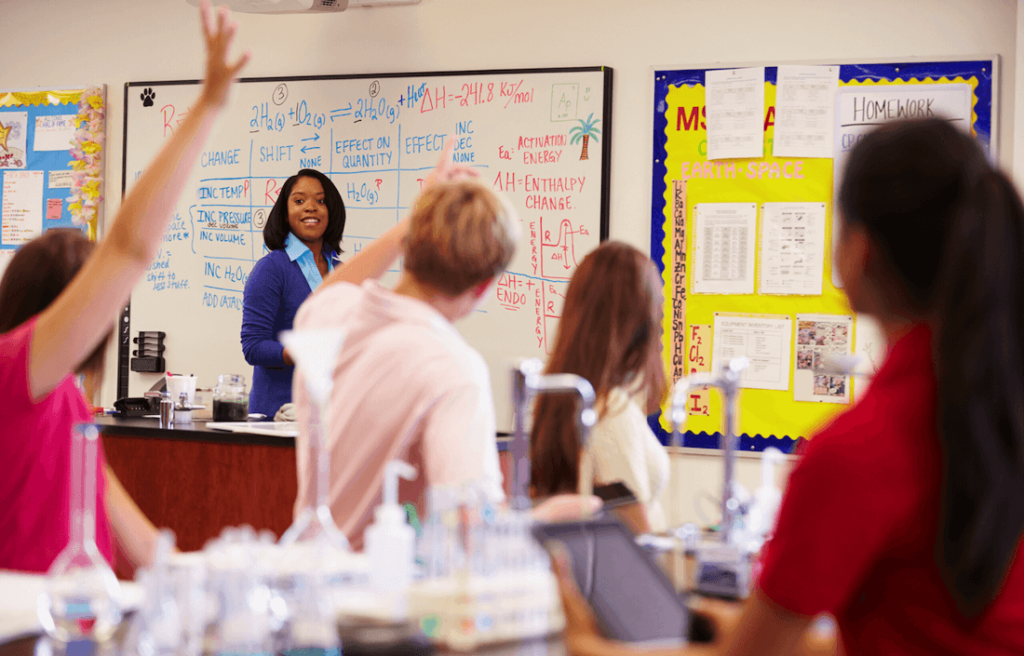
Middle schoolers experience a great time of exploration and learning during these formative years. Explore these middle school STEM projects, designed to enhance STEM education by engaging students in hands-on learning. Pick which ones you want to try first.
Simply click the title of each lesson in the list to get the full lesson plan for these great STEM challenges that align with lessons for middle school science, technology, engineering, and math objectives. Alongside these projects, we also offer a variety of easy STEM challenges that can serve as introductory activities for beginners.
I’ve gone through all the educational subscription boxes for teenagers and put together the best ones in this resource, teenagers’ top STEM subscription boxes.
Table of Contents
STEM Activities for Middle School Students
1. i breathe what.
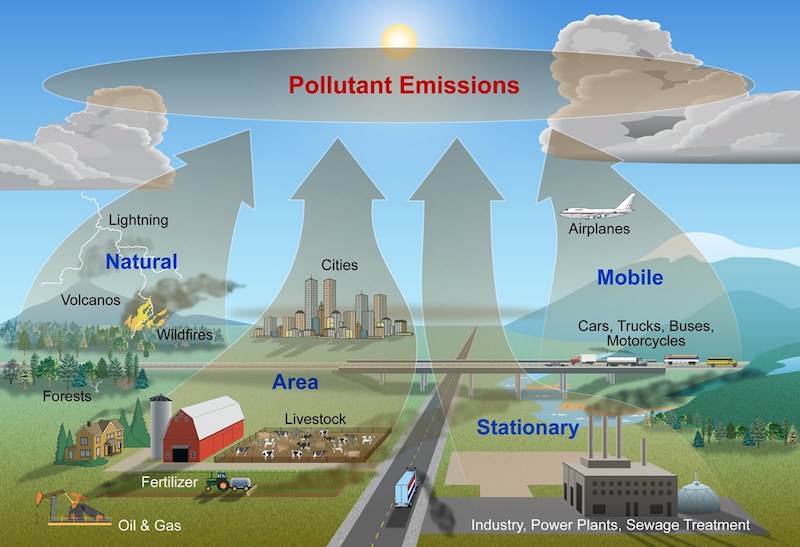
Students enhance their problem-solving skills and understanding of the scientific method by exploring air quality through pollen, dust, and particulates using their homemade ‘pollution detectors.’ They will hypothesize what causes the differences and explain why engineers look at the particulate matter when they observe air quality.
2. Design a Bridge
This is a fun way of using simple machines and various materials, students design bridges that can hold 100 pennies for 30 seconds without collapsing, teaching them fundamental principles of physics. Review engineering concepts such as load and force with your classes before they get started. Consider using craft sticks as one of the materials, which are great for learning about weight distribution and structural integrity.
3. Spaghetti Soapbox Derby
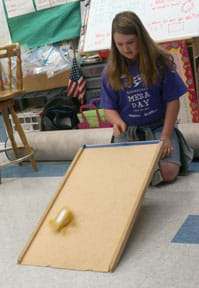
In this science experiment, pairs of students design, build, and test model vehicles made from dry pasta and hot glue, with the goal of rolling along a ramp and coasting as far as possible. This STEM activity focuses on using somewhat challenging materials in the best ways possible.
For an added challenge, students can use rubber bands to enhance the propulsion of their pasta vehicles.
4. Trail Planning Using Topographic Quadrangle Maps
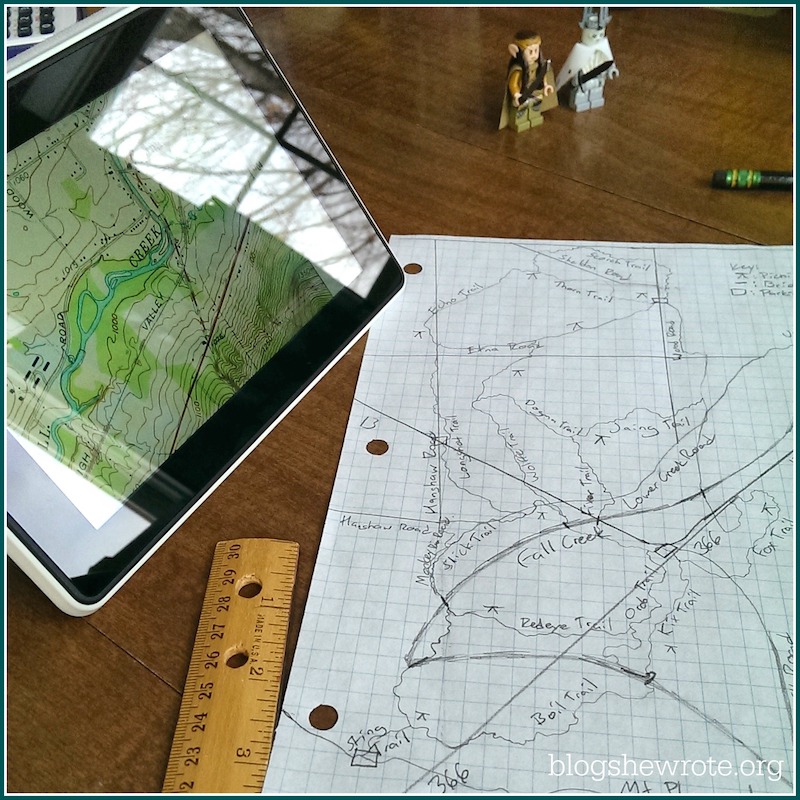
This earth science activity first calls for familiarity with US Geological Survey quadrangle maps. Working within set guideline requirements, students then use these maps to design a good route for a new recreational trail.
5. Bikini Bottom Genetics
Students apply an understanding of genetics in an analysis of sea creature genotypes that live in SpongeBob SquarePants’ neighborhood. They predict traits of offspring with the use of Punnett squares.
6. Design a Wristwatch for the Visually Impaired
Help your students review the engineering design process. They will then research, model, test and evaluate wristwatches for individuals with visual impairments as an exercise in applying engineering skills in the areas of bioengineering and biomedical engineering.
Take a look at our review of Groovy Lab in a Box . It’s hard to convey, but after reviewing about a dozen educational STEM subscription services, Groovy Lab Box has the most well-thought-out lesson plans!
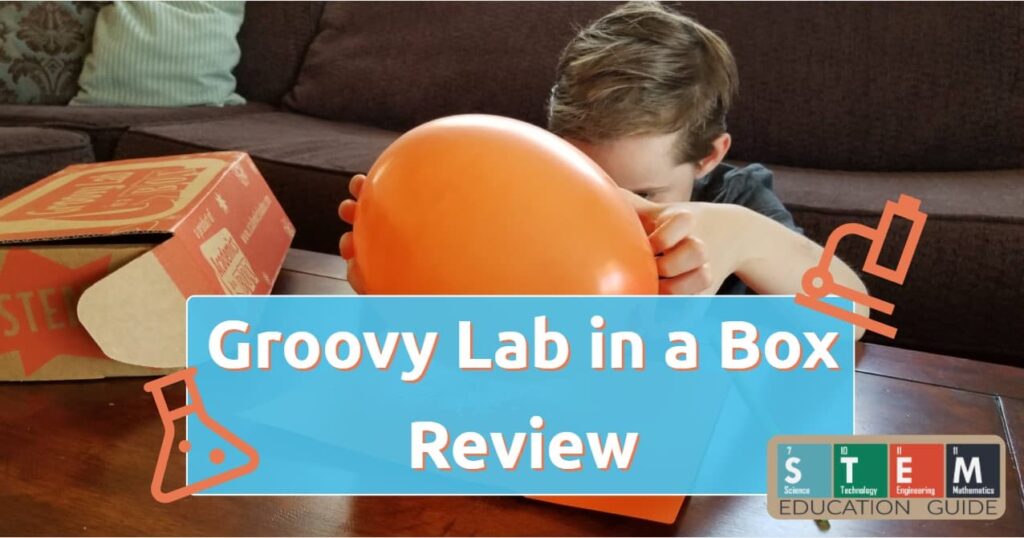
7. Use Your Shoe!
Teachers collect shoe size data from the class. As a group, they use the data to determine the mean, median, and mode. Students then use that information to make inferences about average shoe size and broader populations. This activity provides a review of how to calculate mean, median, and mode, along with methods to make inferences based on the sample.
While this article focuses on middle schoolers, we also recommend fun and educational STEM projects suitable for elementary students .
8. Mission to Mars
Following a storyline, task your students with completing various STEM challenges, including understanding chemical reactions through a Coke and Mentos experiment as part of a Mars emergency. Teamwork, engineering design, and the use of science topics in real life are all addressed.
9. Snack Time!
Using nutritional information labels from various packaged foods, students will organize and describe that info to show the data in a box-and-whisker plot, bar graph, and pie chart. This activity touches on both math and science standards.
10. No Valve in Vain
Teams of students employ the engineering design process to use tape and plastic tubing to create heart valve models. For this activity, the class reviews the engineering design process and the workings of a one-way valve.
For older kids, particularly high school students looking for more advanced challenges, please check out our article, The Best Science Sets for Teens .
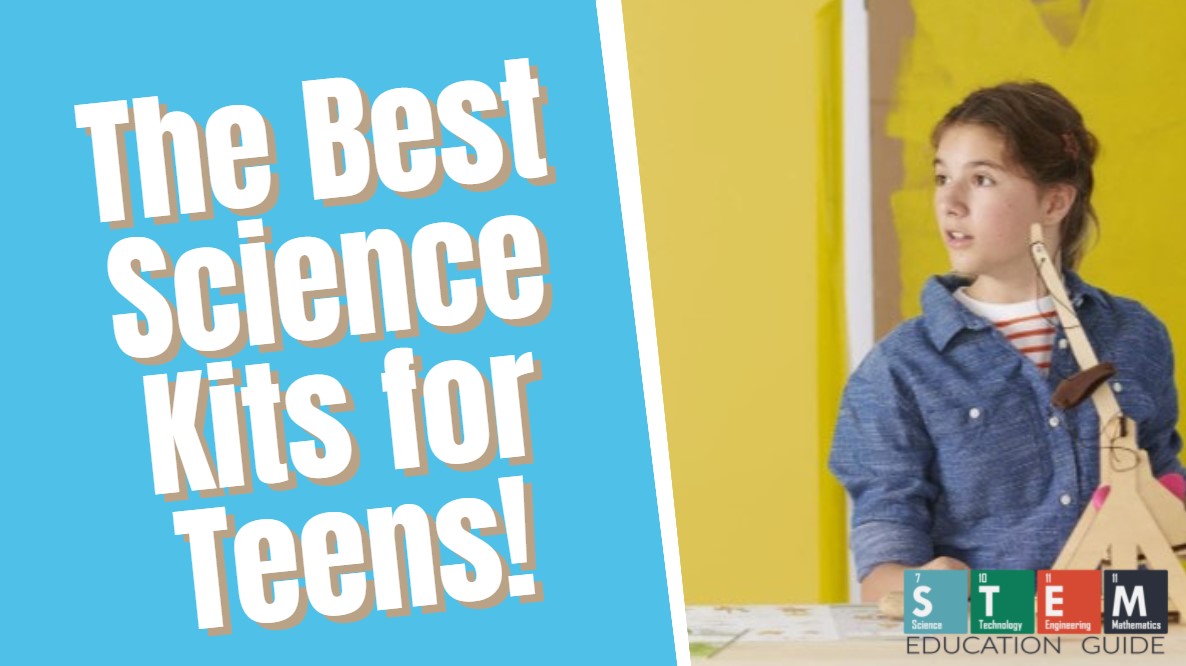
11. Marble Speed Traps with Lego Mindstorms
Students review the formula for velocity . Using drag and drop programming, they code the speed traps to measure the distance between the sensors and time it takes the marble to travel between them. They design the course, write the code, convert units, evaluate, and make changes as needed.
12. The Million Dollar Project
Students imagine inheriting and spending 1 million dollars with specific guidelines of how they may use that money. They research on the internet, record all purchases, learn to write checks, and track all their spending, which reinforces various mathematical concepts.
13. Explore the Law of Inertia using a Fidget Spinner

Review the equations for torque and inertia with students. By removing lights (weight) from spinners, they can explore how the amount of time the device will continue spinning is affected by the mass.
14. Backyard Weather Stations
Working in groups, students describe the current weather and predict future conditions by observing cloud formations. They design backyard weather stations that could gather data for actual forecasting. Technologies for forecasting would be explored, along with weather basics.
15. Leaning Tower of Pasta
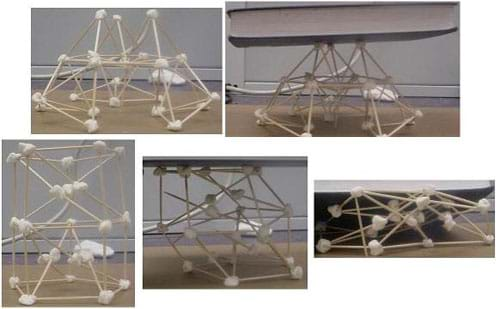
Review compression and tension in structure stability with your class. Students use math and engineering concepts to design and build structures with long, dry spaghetti and marshmallows, to find which ones can withstand the largest amount of load.
16. Cleaning the Great Lakes
What better way to understand environmental science than by having students use limited materials to discover how to filter pollutants from dirty water? Teachers may use this challenge activity along with earth science units about water pollution or those concerning local lakes.
17. Soil Biosolarization: Sustainable Weed Killer
Serving as agricultural engineers, students explore the effectiveness of this sustainable weed control technique that uses organic waste instead of poisons. By using seed starter pots, they plant “weeds” and test the use of organic matter, like oatmeal, to see if it kills the weeds, assessing the impact of products and systems.
18. Renewable Energy: Power Your School
In pairs, students use real data to assess the possible use of solar or wind power generation at their school. Using science, math, and engineering concepts, they explore the differences between these two methods, use maps for an analysis of potential, and look at factors related to the feasibility of renewable energy at their location.
19. Generate Your Own Ocean Currents!
Encourage critical thinking and understanding of real-world applications as students design and construct ocean models to study wind-driven currents. Through this challenge project, they will explore circulation patterns, the Coriolis effect, and the transfer of heat from the global ocean convection cycle.
20. Scaling Up Candy Wrappers
Students bring in their favorite candy bar wrappers, choose a scale factor (larger than 5), and enlarge their wrappers to that scale in a drawing on grid paper. Scaling up candy wrappers is not just educational, but also a lot of fun, teaching kids about the math concept of scale factor. They can then color and display their finished projects!
21. Rube Goldberg Machines
What is a rube goldberg machine.
A Rube Goldberg machine is a deliberately complex contraption in which a series of devices perform simple tasks linked together to produce a domino effect, ultimately accomplishing a simple goal in a highly complex manner. Named after the American cartoonist Rube Goldberg, these machines are fantastic tools for teaching students about physics, engineering, and critical thinking.
Why Include Rube Goldberg Machines in Middle School STEM?
- Encourages Creative Thinking : Building these machines requires students to think outside the box and use their imagination to solve problems.
- Teaches Basic Physics Principles : Concepts like energy transfer, motion, and simple machines come to life in a Rube Goldberg project.
- Enhances Teamwork and Collaboration : Students often work in teams, learning to communicate and collaborate to design and build their machines.
- Develops Problem-Solving Skills : Students learn to troubleshoot and iterate, key skills in any STEM field.
Implementing Rube Goldberg Machine Projects
- Introduce the Concept : Start with a brief history of Rube Goldberg and show examples of Rube Goldberg machines, either through videos or illustrations.
- Define the Project Scope : Set clear goals and parameters. For example, each machine must have a minimum number of steps or complete a specific task.
- Materials : Encourage creativity by allowing a wide range of materials, from household items to recycled materials.
- Documentation : Have students document their design process, challenges, and solutions. This can be in the form of a journal, video, or presentation.
- Presentation and Reflection : Allow students to present their machines to the class. Encourage them to discuss what they learned and how they overcame obstacles.
22. Egg Drop Challenge
What is the Egg Drop Challenge? An engaging physics experiment for middle schoolers, the Egg Drop Challenge involves designing a device to protect a raw egg from breaking when dropped from a height. It’s an excellent way for students to apply concepts of gravity, impact force, and material properties.
Why It’s Beneficial:
- Encourages creative problem-solving.
- Demonstrates physics principles like momentum and shock absorption.
- Promotes teamwork and collaborative skills.
Implementing the Challenge:
- Materials: Offer materials like straws, balloons, and craft sticks.
- Design and Build: Students design and construct their egg-protecting devices.
- The Drop: Test the devices by dropping eggs from a set height.
- Analysis: Discuss the outcomes, focusing on physics concepts and design strategies.
Curriculum Alignment: This challenge complements the middle school physics curriculum, applying theoretical concepts practically.
23. The Index Card Tower Challenge
What is the Index Card Tower Challenge? The Index Card Tower Challenge is a straightforward yet engaging activity that introduces students to basic principles of physical science and engineering. Using only index cards, students are challenged to build the tallest possible tower. This activity is the best way to demonstrate concepts like balance, gravity, and kinetic energy, making it perfect for kids of all ages, including younger kids.
Why It’s Essential in STEM Curriculum:
- Introduces Physical Science Concepts: Focuses on basic principles like stability and kinetic energy.
- Encourages Creative Problem-Solving: Challenges students to think innovatively using simple materials.
- Accessible to All Ages: Easily adaptable for different age groups, making it suitable for both younger kids and older students.
- Prepares for Future Careers: Develops foundational skills useful in various STEM fields.
- Materials: Provide students with a stack of index cards.
- Build the Tower: Students experiment with different construction techniques to build their towers.
- Discussion on Physical Science: After the activity, discuss how forces like gravity and kinetic energy influenced their designs.
- Real-World Connection: Relate the activity to real-world structures and engineering challenges.
How It Fits Into STEM Courses: The Index Card Tower Challenge is a versatile activity that can be integrated into various STEM courses. It encourages students to apply scientific principles and think critically about engineering challenges, making it a valuable addition to any STEM curriculum.
How To Make The Most Of These Fun STEM Activities for Middle School Students
Whether in STEM labs, at home, or in the classroom, engaging students with discussion questions throughout these hands-on activities is vital.
To connect with students’ interests, some of these STEM activities offer different ways, including the design or analysis of simple video games, blending technology with creativity.
We rounded up these projects specifically because they align with learning objectives and lessons for 6th to 8th-grade students. Ask how this applies to what they’re currently learning in class? What did the project demonstrate?
Let us know in the comments what your favorite Middle School STEM projects! We’d love to hear them.
2 thoughts on “20 STEM Projects That Are Great for Middle School”
I taught bridge building to sixth grade students. The only thing I taught them was information and diagrams about trusses. They had to take notes for their own use during construction. Gave them the materials, formed groups and gave them them help without interfering with their own ideas. The amount of enthusiasm I have seldom seen in middle school. They were so excited they told their other teachers about the project. The bridges were beautiful and so strong. It was great to see the application of the trusses! I am all for STEM activities!
These are some great activities thanks for sharing and I’ll use them at my school.
Leave a Comment Cancel reply
Save my name, email, and website in this browser for the next time I comment.
most recent

Activities and Games , Toy Gift Guides
Best stem subscription boxes for kids: hands-on reviews.
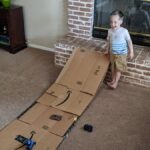
Engineering
6 projects for learning about simple machines.

Amplify Your Outdoor Living Space with Garden Décor

35 Must-Know Stats & Facts About Natural Latex Mattresses

Easy Gardening Shortcuts for Beginners

Why Buying a New Couch is Harder Than You Think

Cat Years to Human Years: Decoding the Aging Process of Your Furry Friend
STEM Education Guide
[email protected] STEM Education Guide 9125 SVL BOX Victorville, CA 92395
Your Compass for STEM Discovery
© 2024 STEM Education Guide
50 Activities for Middle School
Hands-on ideas to engage digital learners in meeting standards and learning goals.
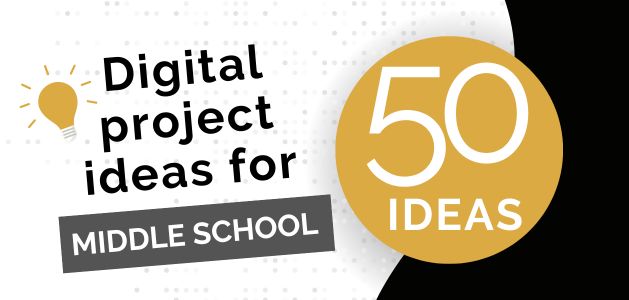
Using a device to fill out a digital worksheet isn't any more compelling than using a pencil to fill out a paper version. Encourage students to show what they know and capitalize on their interest in technology by creating digital projects on classroom topics using media formats that abound in the world around them.
Explore fifty ideas for using a digital approach to help middle school students meet standards and learning goals, divided into sections for:
Language Arts
Social Studies
- Arts & SEL
Use a digital approach to engage middle school students in reading comprehension and provide authentic opportunities for listening, speaking and writing in narrative, informational and argumentative form.
1. Design a new book cover
Have students create a new cover design for a book they are reading to demonstrate comprehension and explore character, plot, setting, symbolism, and conflict.
Explore a Book Cover Design lesson plan
Small, but mindful, changes can move a task beyond remember and retell. For example, replace a typical character trait cluster assignment with the task of developing a coat of arms for a story's protagonist that represents traits of the main character.
Creating a coat of arms provides students with an opportunity to think about objects, colors, symbols, and mottos that reflect a character's personality, passions, strengths, and experiences.
Wixie has a Coat of Arms template that makes it easy to add color, text, and images to show comprehension.
Explore a Character Scrapbook lesson plan
4. Create a Book Trailer
Much like the movie trailers students are familiar with, ask students to create a short, fast-paced book trailer that shares information about characters and events in a way that would motivate others to read the book.
Share the book trailers with the rest of the class or play them on the morning announcements to encourage others to read the books.
Explore a Book Trailer lesson plan
5. Visual Poetry
Blackout Poems
To write a blackout poem, the author covers up words on a page of text until the leftover words form a poem. Digital tools, like Wixie, include blackout poetry templates that contain a page of text from Tom Sawyer ( template ), Shakespeare ( template ), Lewis Carroll ( template ), and more.
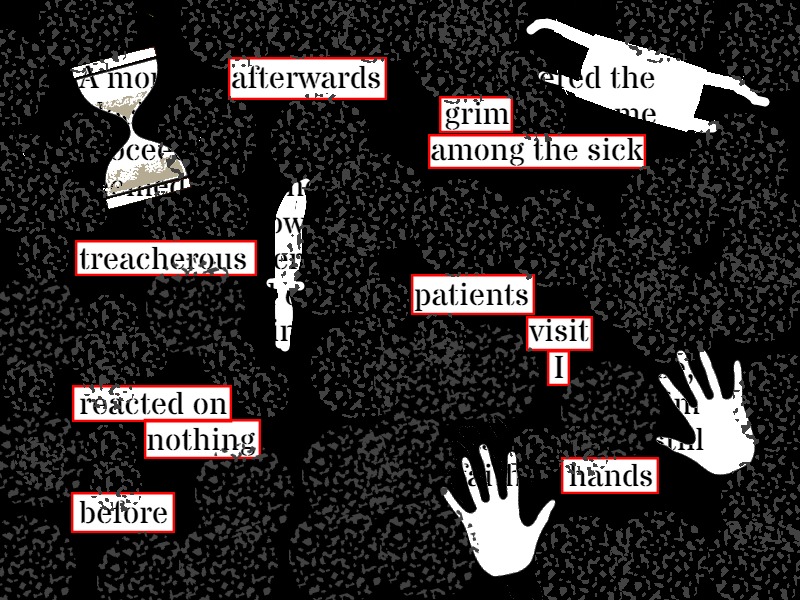
Students read the text and circle words they find interesting, then read them again to hear the resulting poem. Students can circle additional words to fill out the idea and then blackout the rest of the words and add additional decoration.
Video Poetry
Poetry's purposeful word choice encourages close, careful reading. Have students create visual versions of poems to demonstrate their comprehension of the author's word choice and intent.
Ask students to create a project and then type a poem from their favorite poet or one they have written, adding stanzas to each page. Students can add illustrations and record themselves reading it.
Explore a Visual Poetry lesson plan
6. Modernize a Myth or Legend
Rather than merely retelling stories, ask students to adapt, extend, or create new versions of the stories they are reading. Students can modernize an ancient myth to make it more relevant to their lives today, comparing similarities and differences along the way.
7. Cool Word Vocabulary
Visuals help form connections to words and help students better remember the meaning of the word.
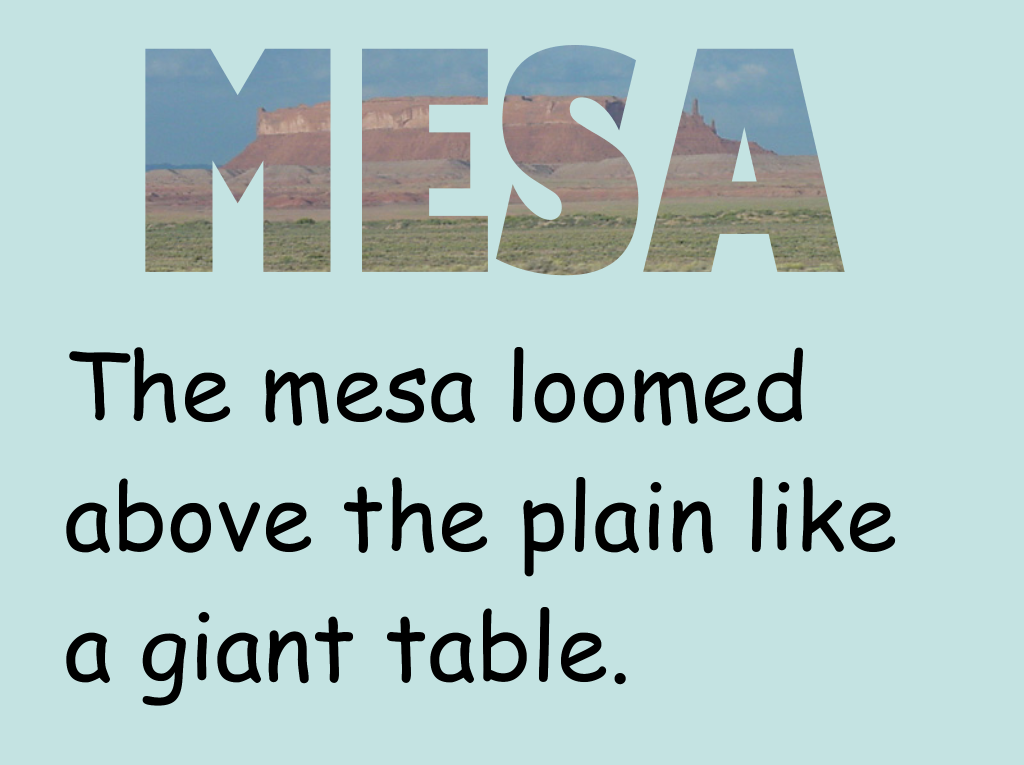
Digital tools make it easy to combine words and pictures and publish flash cards and posters you can use to improve vocabulary.
Explore a Cool Word Vocabulary lesson plan
8. Publish a personification story
Have students personify an object, and then use a digital tool like Wixie to write, illustrate and publish it as an eBook.
Students should brainstorm feelings the object would have to develop the conflict that will drive their story and begin writing. Scaffold their work further by asking them to identify character traits, determine setting, and codify the plot diagram or at a minimum the beginning, middle, and end.
Explore a Personification Stories lesson plan
9. Product: Fictitious Interviews
Creating a digital story in the form of an interview helps you engage students in writing and makes work with informational text come alive. Ask students to craft fictitious interviews between characters in a novel they are reading to demonstrate comprehension of the traits and behaviors.
Fictitious interviews are great ways to summarize and deepen comprehension for informational texts as well, making them perfect for science and social studies classrooms. For example, you can ask students to interview a figure from history, an animal, or even an artifact.
More ideas for conducting interviews
10. Product: Wanted posters
Creating a Wanted poster is a great way to get students thinking about the traits, experiences, and motivations of the characters in the stories they are reading.
It is often the antagonist that makes a story interesting or gives a plot direction. Have students create wanted posters for villains in the stories they are reading to evaluate comprehension and help them consider how they might craft a villain to add impact to their own writing.
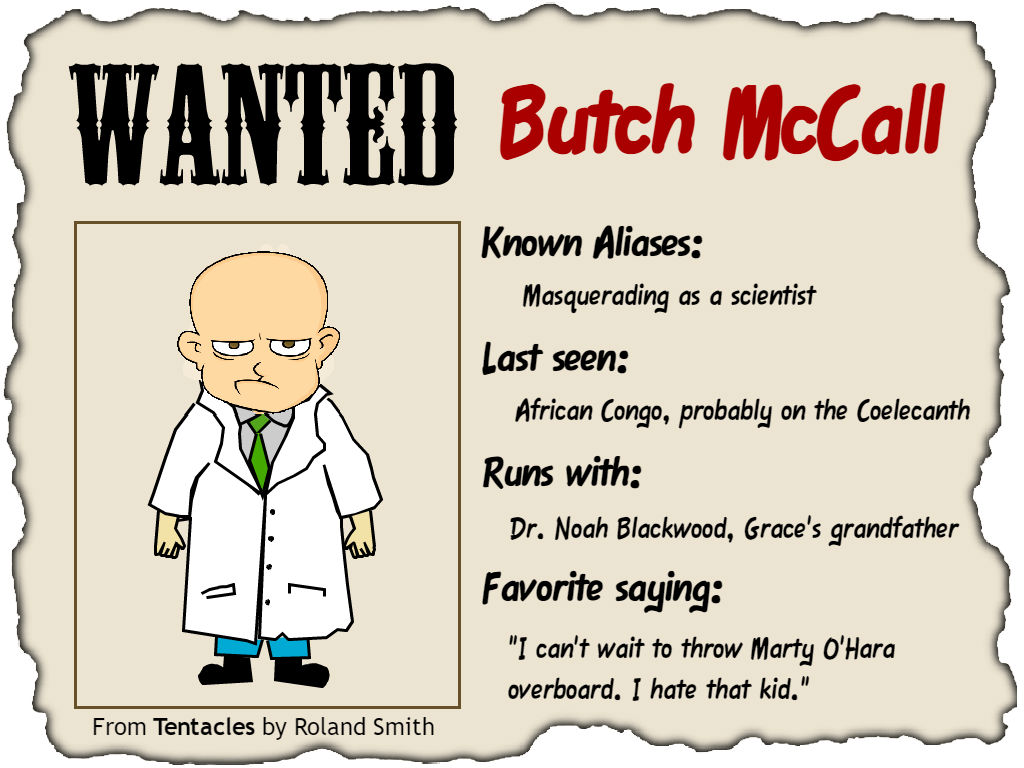
Creating Wanted posters can also help students clarify their thinking about definitions related to math , atomic elements and molecules , and figures from history .
Digital tools can provide a platform for middle school students to apply mathematical thinking and engage in standards of mathematical practice as they practice procedures, create visual models, and solve problems.
11. Work with Ratio and Rate
Use word problems ( ratio and rate ) to give students a sense of the ways that ratio and rate connect to the world around them.
Ask students to extend their understanding by writing their own word problems and challenging peers to solve them using strategies like a double-number line .
12. Putt Putt Polygons
Measuring the perimeter and area of polygons requires knowing and applying formulas like the Pythagorean Theorem. Give students a fun context for practicing by asking them to design a hole for miniature golf!
13. Math Backgrounds
Math can be frustrating for some students, especially when erasing mistakes makes equations or coordinate planes unreadable. This problem only adds to the challenge of tackling complex equations and data.
Use backgrounds like grids , plots , or coordinate planes , and have students use paint tools to write equations, fill areas, or plot lines.
14. Design a Dream Home
Ratio and rate also apply to scale in architectural drawings. Even if they don't want to be an architect, most students would love to dream up a bedroom, a tiny house, or even a mansion design.
Have students use a grid to create architectural designs to scale.
15. Play with Probability
You can teach students the rule of probability, but they will retain the information more if they come up with the mathematical rules on their own.
Have students calculate experimental probability by using dice or a specific spinner to do a task 40 times. Have students tally their results and use the data to calculate the experimental probability.
After establishing experimental probability, challenge students to come up with the theoretical probability for other toys. Bonus if they can generate a mathematical model for predicting probability.
16. Collect, analyze, and showcase data
Using data to make predictions, analyze and communicate information is becoming an essential skill for future success. While there are other steps in the data science process, students need to know how to collect and display data in ways that make it easy to visualize and understand.
Wixie makes this process easy with its design tools and templates, whether students are creating bar graphs (categorical), histograms (numerical), or other data displays.
17. Explore Geometric Transformations Through Tessellations
Tessellations are geometric patterns that repeat forever with no gaps or overlaps. Squares can tessellate easily. The word tessellate comes from the Greek word tesseres, which means four.
Inspire students with the work of M.C. Escher or Islamic tiling, and then have them create their own rotation or reflection tessellations.
Explore a Tessellation lesson plan
18. Online Math Academy
Showcase student expertise by asking them to create tutorials to teach others how to calculate, measure, solve and more.
19. Product: Explainer Video
What can your students teach others? Procedural writing is an excellent way for students to become experts in a topic and feel confident about their ability to share the information with others. This process of deconstructing and reorganizing information helps students cement concepts and provides an opportunity for you to pinpoint misconceptions.
So whether students are sharing content, a process they struggled to understand, or something they are passionate about, a how-to assignment is the perfect task to cement learning and inspire others.
20. Inform with Infographics
Have students research information, conduct surveys, or collect data on a topic. Then, students can create charts and graphs, analyze the information, and develop an infographic to display their findings.
Explore a Creating Infographics lesson plan
Digital tools provide a fun way for students to share ideas and explain scientific understandings for Life, Physical, Earth and Space and Engineering concepts.
21. Body System Beats
Ask students to create a music video to inform others about how a body system works, its functions, and how it interacts with other systems for optimal health.
Explore an It's My Body lesson plan
22. Cell Function Similes
Evaluate student understanding of animal cells by asking them to compare how various cell parts, including the nucleus, cell wall, cell membrane, chloroplast, and mitochondria, function like elements on a farm or parts of a school .
By illustrating these comparisons, students not only gain a deeper understanding of cellular structures and their functions but also develop their ability to make meaningful connections between seemingly unrelated concepts.
23. Model Scientific Processes
Actively engage students in scientific exploration by creating simulations and visual representations that model chemical reactions and scientific processes.
By encouraging them to create visual representations, students can deepen their understanding of complex concepts.
24. Expert Interviews
Students can create expert interview videos that delve into scientific concepts and discoveries. By conducting interviews with scientists or experts in the field, students can explore complex ideas and present their findings in an engaging and accessible format; fostering a deeper understanding of science among their peers.
Don't have access to an expert? Craft a fictitious interview!
25. Write Informational Texts
Ask students to create informational science texts to inform or share learning with others. Through these books, students can convey their understanding of various concepts.
26. Terminology Journals
Students benefit from explicit vocabulary instruction, especially terminology linked to a specific discipline or topic. Collecting, defining and refining are easy with digital terminology journals.
27. Animate a Scientific Process
Labeling and diagramming are great, but modeling a process through animation can help students better understand the macro- and micro- scopic processes. For example, ask students to animate a chemical process or geologic cycle, illustrating the stages and processes involved.
Read more about Animating in Secondary Math and Science
28. Connect Physics to Fun
Help students see physics as more than rules and equations by connecting it to a favorite sport or physical activity.
Explore a Fastballs, Free Throws, and Physics lesson plan
29. Publish Informational Comics
The limited amount of space in a comic's panels requires students to choose key points in a process or important factors in chemical reactions as they work to design and illustrate them.
30. Raise Awareness of Environmental and Health Issues
Students in middle school are starting to have the capabilities and passions to change the world. Have students produce public service announcements (PSAs) to raise awareness, inform, and change behavior.
When developing a public service announcement (PSA), students have a chance to practice and apply persuasive writing skills in a real-world, authentic context. A short PSA targeted at a particular audience also encourages students to focus on writing organization, as well as voice and word choice.
Explore a Here's to Your Health lesson plan
Engaging middle school students in deep thinking about history and community helps to develop citizens who have powerful inquiry and critical thinking skills.
31. Biographies
Using a digital storytelling approach to biographies helps prevent their writing from becoming a list of unrelated facts. Having students combine their research results with imagery, sound, and other media can help them better combine aspects of narrative and informational writing for a more compelling script.
Biographies aren't always books, either. There are even entire cable television channels devoted to biographies. Consider having your students create video biographies, too.
Explore a Video Biography lesson plan
32. Historical Journal
To help students think deeply about how events, circumstances, culture, and leaders in the past affect the lives of human beings, ask students to create a series of fictional journal entries that indicate how events in the past might have affected the life and perspective of a specific person living during that time. ( template )
Explore a Historical Journal lesson plan
33. Make a Map
Have students use paint tools and text labels to create maps to show the geographic features, regions, and/or economy of an area, country, or civilization.
34. Produce the News
Our students have grown up watching shows, but not necessarily the news. Challenge your students to develop a news report they would actually want to watch based on the content they are learning.
Writing a news report requires students to organize and summarize information and use new vocabulary and terminology in context.
Explore a News Broadcast lesson plan
35. Interview a Community Leader
Ask students to interview a community member to expand their knowledge and experience, as well as encourage listening, curiosity, and empathy skills.
Encourage students to change the order of questions or the order of the answers shared so that the story " unfolds a lesson learned ." In other words, what is the moral of this person's story, or what can it teach the rest of us?
36. Explore the Issues
Students in middle school are idealistic and often passionate about current issues. While they may simply want to proclaim their ideas on a billboard , use this opportunity to ask them to back up their opinions with claims and evidence .
37. Develop a Virtual Museum
Have students design an online museum, displaying artifacts and stories to engage others in the heritage of their community or a specific region.
Explore a Virtual Museum lesson plan
38. Host a Tourism (Geography) Trade Show
To help students better understand the unique features of a place, have them develop materials for a virtual tourism trade show where students promote and pitch that location to attract visitors.
Explore a Tourism Tradeshow lesson plan
39. Publish a Historical Newspaper
Have students create a newsletter or newspaper to show what they have learned about the events, politics, and cultures of a different time in history.
Newspaper creation helps students better understand the perspectives of those in different times and cultures.
Explore a Day in the Life lesson plan
40. It's a Postcard Point of View
After learning something new, have students tell someone else using a postcard! They could write a postcard from a specific time in history or a unique geographic or cultural destination.
Arts and Social-Emotional Learning
Wixie provides a canvas for students to set goals, explore emotions, and express themselves through art and music.
41. Set SMART goals
The simple act of writing down your goals makes you more likely to achieve them, so have students take some time to set personal goals to accomplish this school or calendar year. Developing goals that are SMART (specific, measurable, attainable, relevant, and timely) can help even more.
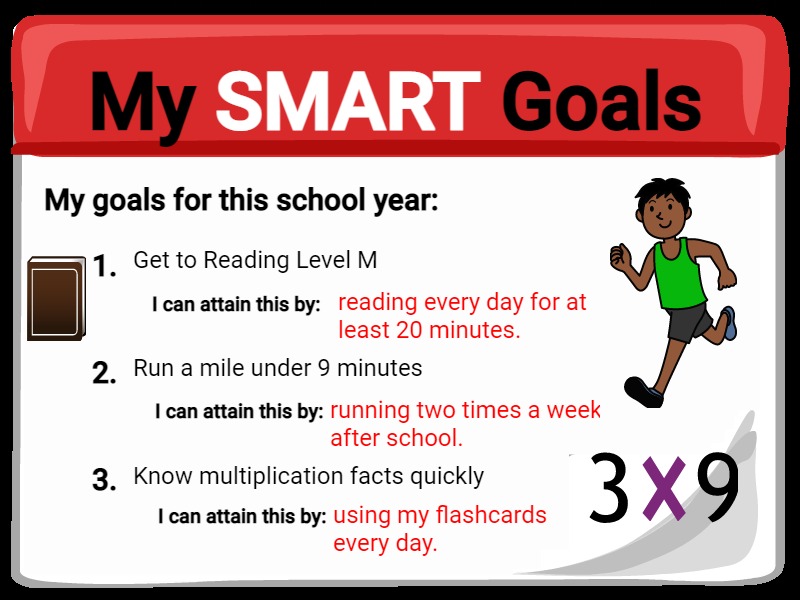
Have students use the goals as a home screen on their devices so they see a daily reminder of what they are working to achieve.
Explore a SMART Goals lesson plan
42. Design a Vision Board
A vision board provides inspiration and motivation to reach dreams and goals. Students can choose a goal and add pictures of what they think achieving them looks and feels like.
Digital tools, like Wixie, make it easy to combine images. When vision boards are complete, print or export an image so you can post to a place you are everyday, like on a desk or phone lock screen, for a daily motivator.
Explore a Vision Boarding lesson plan
43. Create an Arcimboldo-inspired self-portrait
Giuseppe Arcimboldo is an Italian Renaissance painter known for his portraits of people that use objects like fruit and books. Challenge students to create Arcimboldo-style self-portraits by combining clip art images in an imaging tool.
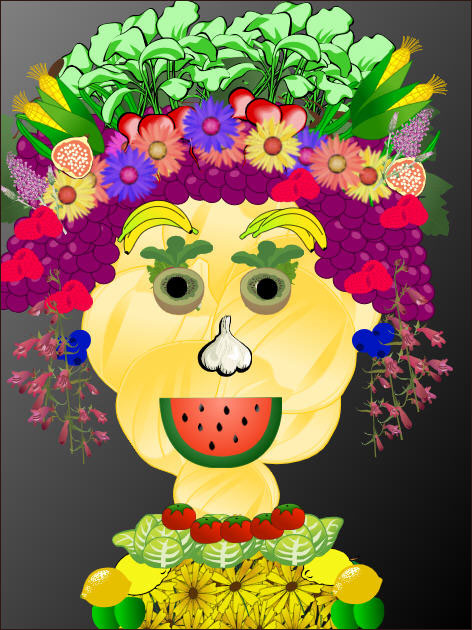
Explore an Arcimboldo-Inspired Self-Portraits lesson plan
44. Play Music
While you may not be teaching music theory, expressing one's feelings and emotions through music is both fun and therapeutic. You can try the online keyboard below or give students options like:
- a xylophone
- percussion tubes
45. Write a Classroom Constitution
Involving students in creating a class constitution makes them part of the process of government, giving them a vested interest and responsibility in following and upholding the laws they have determined.
Explore a Classroom Constitution lesson plan
Inform students about surrealism. You might inspire them by reading a book like Pish, Posh, Hieronymus Bosch .
Have students use paint tools to illustrate bizarre creatures juxtaposed around a normal self-portrait and then write a poem about the way the surrealism makes them feel.

This example takes advantage of the mirror symmetry options for the paint brush in Wixie .
Explore a Surreal Symmetry lesson plan
47. Explore Collaboration Skills
In All in the Same Boat by Wilkie Martin, a greedy rat is shown how no one wins when success is achieved at the expense of others.
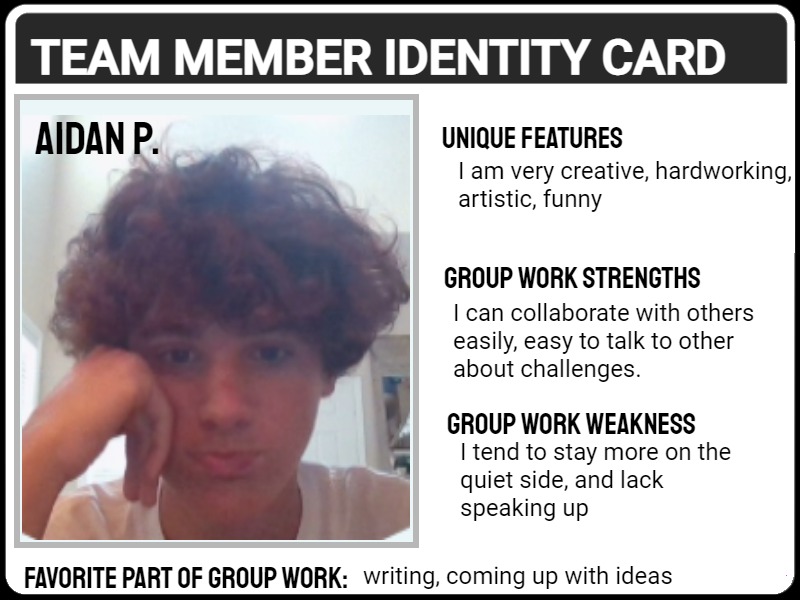
Discuss what makes a great teammate and then ask students to create their own Team Member ID Card to let future group members know a bit about how they work collaboratively.
48. Send a virtual compliment
Show your appreciation for a classmate, family member, or friend with a compliment card. This is a great idea for a random acts of kindness promotion.
Tools like Wixie let you print multiple copies or pages onto a single sheet of paper, making it easy to print, fold, and then drop in a classmate's lunch box or backpack.
49. Make a playlist for your future
Students likely already have playlists for their favorite songs, and many have playlists for different moods. Use this as a jumping-off point to ask them to "audiolize" what their future sounds like by creating a playlist .
Students can add songs they know or create new artists and bands and write descriptions for them.
50. Compose a melody
Use music production or notation software to have students compose their own music.
Have students record themselves singing their melody or playing their compositions on a recorder or keyboard.
Once they have experience with digital projects, let students choose the product or way they will demonstrate understanding… simply make them argue their case before they begin. No matter what you or they choose, transfer as much responsibility as possible to students to motivate and empower them to control their own learning.

by Melinda Kolk
Melinda Kolk ( @melindak ) is the Editor of Creative Educator and the author of Teaching with Clay Animation . She has been helping educators implement project-based learning and creative technologies like clay animation into classroom teaching and learning for the past 15 years.
Get the latest from Creative Educator
Creative classroom ideas delivered straight to your in box once a month.
Create a Graphic Organizer

Need a thought web, timeline, flowchart, or other graphic organizer for a lesson?
Popular Topics
Digital Storytelling
21st Century Classrooms
Project-based Learning
- Hero's Journey Lesson Plan
- Infographics Lesson Plan
- Design a Book Cover Lesson Plan
- Informational text projects that build thinking and creativity
- Classroom constitution Lesson Plan
- Set SMART Goals Lesson Plan
- Create a visual poem Lesson Plan
- Simple surveys and great graphs Lesson Plan
- Embrace action research

Six ways to implement digital storytelling
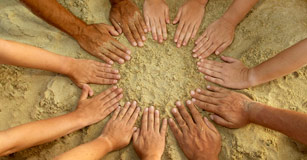
Get the most out of collaboration during student project work

The glorious, wonderful, empty page
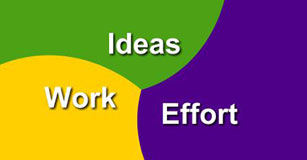
Make It Matter! Move from projects to project-based learning
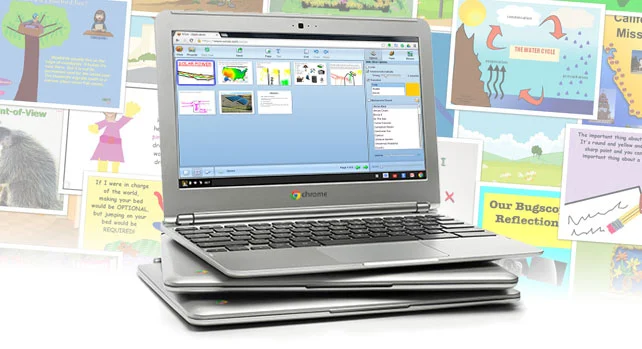
More sites to help you find success in your classroom

Share your ideas, imagination, and understanding through writing, art, voice, and video.

Rubric Maker
Create custom rubrics for your classroom.

Pics4Learning
A curated, copyright-friendly image library that is safe and free for education.

Write, record, and illustrate a sentence.
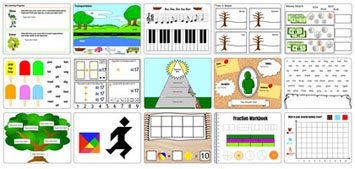
Interactive digital worksheets for grades K-8 to use in Brightspace or Canvas.
Professional Learning

Teaching and Learning
Informational Text
English Language Aquisition
Visual Arts
© 2024 Tech4Learning, Inc | All Rights Reserved | Privacy Policy
© 2024 Tech4Learning, Inc | All Rights Reserved | https://www.thecreativeeducator.com
Add me to the Creative Educator email list!
- Skip to primary navigation
- Skip to main content
- Skip to primary sidebar
- Skip to footer
Teaching ELA with Joy
Middle School ELA Resources
6 Ideas for Teaching Research Skills
By Joy Sexton Leave a Comment
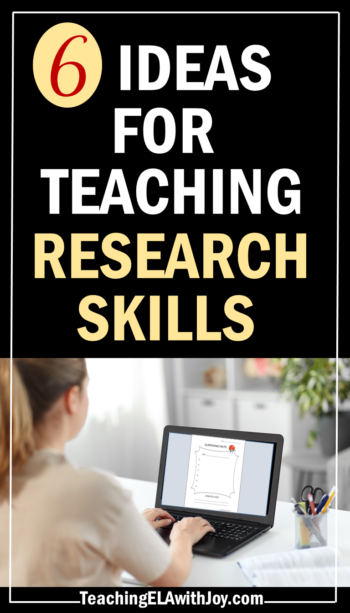
When thinking about ideas for teaching research skills, teachers can easily become overwhelmed. That’s mainly because our standards list so many requirements for students to master! If your school requires a major research paper, you might need to start off with some smaller practice pieces. Do your students know how to paraphrase? Can they judge if a website is credible? Do they know how to compose an open-ended question? How about citing sources? Check out these activities that will help your students gain essential practice with research skills.
Ideas for Teaching Research Skills
1. Say It Your Way – One great place to start is getting students in the habit of paraphrasing. Choose an interesting topic and a short article to demonstrate. An online encyclopedia comes in handy here. We worked with information on a particular dinosaur. Project the article and with class participation, highlight 5 pieces of key information. This is the information students will be “taking notes” on. Then query the students how each piece of information could be stated in bulleted notes (without copying full sentences!). Model the bulleted note-taking as students complete their own copy. When the bulleted notes are complete, engage the class in composing new sentences that are paraphrased. Again, model writing this paragraph as students follow suit. Now the process of note-taking and paraphrasing should seem “doable” in their own research.
2. Surprising Facts – A fun way for students to dive into research is to give them a topic and simply task them with finding facts that are surprising . This activity works great with partners. Topics could tie in with a current class novel or story (such as “elephant” from The Giver) or even an author. Surprising facts about Gary Paulsen, Kwame Alexander, or Edgar Alan Poe make an interesting class discussion! Students enjoy sharing their findings. I devised a free handout where students can record the topic, their surprising facts, and the website(s) they used. Grab it in Google Docs and copy to your drive by clicking the link: https://bit.ly/3Nah9UB
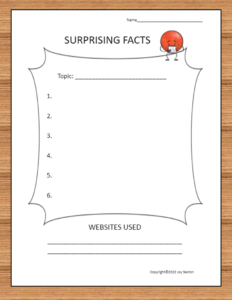
3. Give Credit Where It’s Due – Most students understand that sources need to be cited. However, many remain unclear on the process. A demonstration using a citation generator will help. I like www.bibme.org , but if you google “citation generator” you’ll find a slew of them. I open a few tabs in advance with animal websites. To demonstrate, grab the URLs and insert into the generator. Cut and paste the citations to a blank document. Then you can show students how to indent and alphabetize. For practice, give students a list of several websites. You could also include a magazine article and a book. With a partner, have them construct the works cited using a generator, indenting and alphabetizing correctly.
4. Support an Opinion – Students love to voice their opinions , but need practice supporting them with facts . Lucky for us, there are loads of argument topics available free online. You can offer several topic choices, and students choose one and respond with their opinion. Next, have them locate 2-3 important facts or statistics that specifically support their opinion. Make sure to emphasize that the information will need to be paraphrased. And since sources were used, a Works Cited should also be added.
5. Good Question! – One purpose of research is to answer a question, so students need practice in formulating good questions . An open-ended question, one that requires more than just one answer, is the goal. Start by demonstrating the difference between an open-ended question and a “thin” or “skinny” question (not open-ended). One way is to project an image of a violin on your whiteboard. Then type or write out these questions: 1. How many strings does a violin have? 2. How is a violin made? Ask students which is the open-ended question and why. Then project another image. Ask for volunteers to formulate a thin question, and then an open-ended question. Once they understand this concept, let all students practice composing both thin and open-ended questions. This activity works well in groups. Each student contributes a topic.
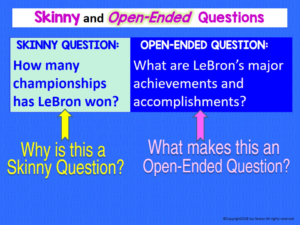
6. Format is Key – A sure-fire way to get students excited about a research project is offering engaging formats for presentation. PowerPoint is well known by most students, but take time to demonstrate some other great options. Canva allows students to create awesome Infographics! Or how about a tri-fold brochure in Publisher? Students can make up a quick template with custom headings. Set a timer for 10-15 minutes and let students experiment with the possibilities. My students have enjoyed a Q & A format, using a template I created with PowerPoint. Even students who prefer typing their report in paragraphs can easily design a poster. Along with the paragraphs, just add images, captions, topic, and headings.
I hope I have broadened your ideas for teaching research skills. I think you’ll agree that students need time and mini-lessons to get comfortable with the procedures we require. A quick graphic organizer coupled with a short activity can help solidify the skills they’ll need.
Here’s another post I wrote that will give you more helpful ideas for teaching research skills: 10 Ideas to Make Teaching Research Easier
Join the Newsletter
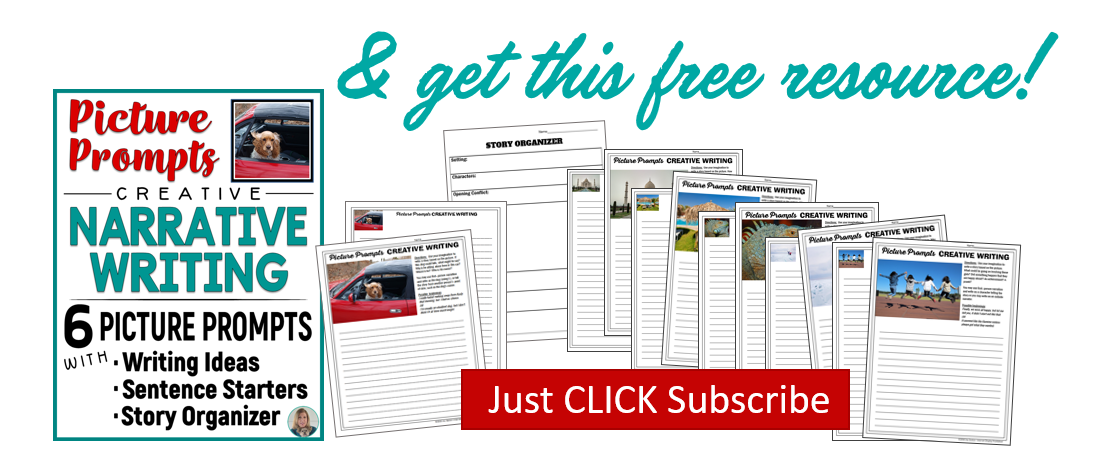
Reader Interactions
Leave a reply cancel reply.
Your email address will not be published. Required fields are marked *
Save my name, email, and website in this browser for the next time I comment.
Notify me of follow-up comments by email.
Notify me of new posts by email.
This site uses Akismet to reduce spam. Learn how your comment data is processed .


Exploring Exciting Research Topics for Middle School Students
Are you searching for the best research topics for middle school? If yes, then your search ends here with the best ever research topics for middle school.
Research is an essential aspect of learning, and it is never too early to introduce it to students. Middle school is an excellent time for students to start learning how to conduct research and develop critical thinking skills. By engaging in research projects, students can explore various topics in-depth and develop a deeper understanding of them.
Additionally, research projects can help students develop crucial skills such as time management, organization, and communication. This guide will provide examples of research topics for middle school students and offer tips on how to identify research topics and access scholarly sources. With this guide, students can discover the exciting world of research and the many benefits it offers.
Importance of research topics for middle school students
Table of Contents
Have a close look at the importance of research topics for middle school students.
Develop critical thinking skills
Research topics encourage students to analyze information, think critically about issues and topics, and make informed decisions. This helps them develop their ability to assess evidence and draw conclusions.
Enhance academic skills
Research projects help students develop essential academic skills such as reading, writing, and critical thinking. These skills are critical for success in high school, college, and beyond.
Prepare for high school and beyond
Research projects prepare students for the more in-depth research assignments they will encounter in high school and beyond. It also prepares them for the rigors of college-level research.
Foster creativity
Research projects can provide students with opportunities to explore creative ways of presenting information and engaging with their topic. This can include using technology, art, or multimedia presentations to showcase their findings.
Encourage curiosity
Research projects can encourage students to ask questions, investigate, and discover new information about topics that interest them. This helps them develop a love of learning and become lifelong learners.
Develop time management skills
Research projects require planning and organization, and can help students develop time management skills. This prepares them for managing their time and workload in high school, college, and beyond.
Promote collaboration
Research projects can be done individually or in groups, allowing students to collaborate, share ideas, and learn from one another. This helps them develop teamwork skills and learn to appreciate diverse perspectives.
Increase engagement
Research topics that are relevant and interesting to students can increase engagement and motivation in learning. This can help students become more invested in their education and develop a deeper understanding of the topic.
Improve communication skills
Research projects can help students develop communication skills, such as presenting findings and participating in discussions. This helps them become better communicators and prepares them for future academic and professional pursuits.
Encourage lifelong learning
Research projects can foster a love of learning and encourage students to continue exploring new topics throughout their lives. It helps them develop a sense of intellectual curiosity and a desire for continued personal growth.
Benefits of engaging in research projects
Have a close look at the benefits of engaging in research projects.
Enhances critical thinking skills
Research projects not only require students to gather information but also to analyze, synthesize, and evaluate it from various sources. These skills are essential for developing critical thinking skills, which are crucial for academic and real-life situations.
Promotes problem-solving skills
By engaging in research projects, students learn to identify problems, develop hypotheses, and test them. Through this process, they acquire problem-solving skills, which are essential for academic success and life beyond school.
Develops creativity
Research projects often require students to think outside the box and come up with innovative solutions. This encourages creativity, which is a valuable skill for success in many areas of life, from science to the arts.
Improves communication skills
Research projects often require students to present their findings in written or oral form, which helps improve their communication skills. The ability to communicate effectively is crucial for academic and professional success.
Boosts confidence
Successfully completing a research project can give students a sense of accomplishment and boost their confidence in their abilities. This, in turn, can lead to greater motivation and engagement in learning.
Provides hands-on learning experiences
Research projects allow students to apply what they have learned in the classroom to real-world situations, providing hands-on learning experiences. This can help students connect what they learn in school to the world around them.
Encourages independent learning
Research projects require students to work independently and take ownership of their learning, which encourages self-directed learning. This is a valuable skill that can help students become lifelong learners.
Builds research skills
Engaging in research projects helps students build research skills, such as conducting literature reviews, designing research studies, and analyzing data. These skills are essential for success in college and many careers.
Prepares for college and career
Research projects provide valuable experience that can prepare students for college and careers that require research and critical thinking skills. These skills are highly valued by colleges and employers.
Fosters a love of learning
Engaging in research projects can foster a love of learning and curiosity about the world around us. This can lead to a lifelong passion for learning and exploration.
Research Topics for Middle School
Have a close look at research topics for middle school.
STEM Research Topics
Here are some STEM research topics that middle school students can explore:
- Renewable energy sources and their impact on the environment
- The effects of pollution on local ecosystems
- Investigating the properties of different types of soils
- Building and testing a simple machine or robot
- The effects of different types of fertilizers on plant growth
- The relationship between exercise and heart rate
- The chemistry of food preservation
- The physics of roller coasters and amusement park rides
- Investigating the efficiency of different types of insulation materials
- The effects of music on the brain and body
How to Identify a STEM Research Topic
Have a close look at how to identify a stem research topic.
Identify your interests
Think about what subjects interest you in STEM, such as biology, chemistry, physics, engineering, or computer science.
Explore current events
Look at recent news articles or scientific journals to see what topics are currently being researched and discussed in STEM fields.
Consider problems and challenges
Think about problems or challenges in the world that could be addressed with STEM research, such as climate change, renewable energy, or medical advancements.
Brainstorm ideas
Write down any ideas that come to mind based on your interests and the topics you have explored. Consider how you could approach these topics from a STEM perspective.
Research existing studies
Look at existing research studies in your area of interest to see what has already been done and what gaps still exist that you could explore.
Consult with experts
Seek guidance from teachers, professors, or professionals in STEM fields to help you identify potential research topics and provide resources.
By following these steps, you can identify a STEM research topic that aligns with your interests and has the potential to contribute to the field.
Benefits of STEM Research Projects
Engaging in STEM research projects can offer a variety of benefits for middle school students, including:
Development of critical thinking skills
STEM research projects require students to analyze data, identify patterns, and draw conclusions, which enhances their critical thinking abilities.
Hands-on learning experiences
STEM research projects provide opportunities for students to apply what they have learned in the classroom to real-world situations, which offers hands-on learning experiences.
Preparation for future careers
STEM research projects can prepare students for careers in science, technology, engineering, and math, as they develop skills relevant to these fields.
Fostering creativity
STEM research projects often require students to think outside the box and come up with innovative solutions, which fosters creativity.
Development of research skills
Engaging in STEM research projects helps students build research skills, such as designing experiments, collecting and analyzing data, and drawing conclusions.
Collaboration
STEM research projects can be done individually or in groups, allowing students to collaborate, share ideas, and learn from one another.
Improvement of communication skills
STEM research projects often require students to present their findings in written or oral form, which helps improve their communication skills.
Boosting self-confidence
Successfully completing a STEM research project can give students a sense of accomplishment and boost their self-confidence in their abilities.
Encouragement of lifelong learning
STEM research projects can foster a love of learning and encourage students to continue exploring new topics throughout their lives.
Social Science Research Topics
Examples of social science research topics for middle school students:
- The impact of social media on mental health.
- Gender inequality in education and the workplace.
- The effects of poverty on child development.
- The relationship between stress and physical health.
- The role of parenting styles in child behavior.
- The effects of bullying on mental health and social relationships.
- The impact of immigration policies on families.
- The influence of media on body image and self-esteem.
- The relationship between personality and academic achievement.
- The effects of technology on social relationships.
How to identify a social science research topic:
To identify a social science research topic, you can follow these steps:
Identify a broad area of interest
Begin by thinking about the general field of social science that interests you the most. This could be psychology, sociology, anthropology, economics, political science, or any other related field.
Narrow down the focus
Once you have identified a broad area of interest, narrow down your focus to a specific topic or issue within that field. For example, if you are interested in psychology, you might focus on a specific mental health condition or treatment.
Consider current events
Look at current events or issues that are receiving a lot of attention in the news or media. Consider how you can apply social science research methods to study these topics in more depth.
Talk to your teachers, professors, or other experts in the field to get ideas for research topics. They may be able to provide you with valuable insights and suggestions.
Conduct a literature review
Conducting a literature review involves reading published research studies, articles, and books related to your topic. This will help you understand what research has already been done in the field and identify any gaps or areas that need further exploration.
Refine your research question
Once you have identified a topic of interest, refine your research question by making it more specific and focused. This will help you to develop a clear research plan and stay on track during your project.
Benefits of social science research projects
Have a close look the benefits of social science research topics.
Improved critical thinking skills
Social science research projects require students to analyze and evaluate information from various sources, which helps develop their critical thinking skills.
Enhance problem-solving skills
Through research, students can identify problems and find solutions by gathering and analyzing data, developing hypotheses, and testing them.
Develop empathy
Social science research projects often require students to explore topics related to human behavior and interactions, which can help them develop empathy and understanding for others.
Foster a love of learning
Engaging in social science research projects can foster a love of learning and curiosity about the world around us.
Develop research skills
Social science research projects allow students to develop important research skills such as conducting literature reviews, designing research studies, and analyzing data.
Enhance communication skills
Social science research projects often require students to present their findings in written or oral form, which can help improve their communication skills.
Promote civic engagement
Social science research projects can encourage students to become active and engaged citizens by exploring issues related to society and government.
Expand cultural awareness
Social science research projects can help students understand and appreciate different cultures, beliefs , and perspectives.
Prepare for college and career
Social science research projects provide valuable experience that can prepare students for college and careers that require research, critical thinking, and communication skills.
Humanities Research Topics
Examples of humanities research topics for middle school students:
- The impact of art and music on society
- The history and cultural significance of traditional dress
- The role of religion in shaping world events
- The influence of ancient civilizations on modern society
- The significance of oral history in preserving cultural traditions
- The portrayal of gender roles in literature and media
- The impact of social media on interpersonal communication
- The role of government in promoting human rights
- The significance of historical landmarks in shaping national identity
- The portrayal of mental health in literature and media.
How to identify a humanities research topic
Have a close look at how to identify a humanities research topics.
Brainstorm topics
Begin by brainstorming ideas that interest you or your students. This can include topics related to literature, history, art, philosophy, or culture.
Narrow down the ideas
Once you have a list of potential topics, start narrowing them down by considering the available resources, the level of complexity, and the relevance to current events or personal interests.
Conduct preliminary research on the narrowed-down topics to ensure that there is enough information available and that the topic is suitable for a research project.
Consider different perspectives
Humanities topics often involve multiple perspectives and interpretations, so it’s essential to consider different viewpoints and debates related to the topic.
Consult with teachers or librarians
Ask for input from teachers or librarians who specialize in humanities subjects. They may have ideas for topics, recommended resources, or can help guide students towards a suitable topic.
Refine the topic
Once a suitable topic has been identified, refine it further by clarifying the research question, determining the scope of the project, and outlining the research methodology.
Benefits of humanities research projects
Have a close look at the benefits of humanities research projects.
Developing critical thinking skills
Humanities research projects require students to analyze information, form opinions, and develop arguments, which helps them to think critically.
Enhancing creativity
Humanities research projects often require students to think creatively about how they present their findings and engage with their topic.
Improving communication skills
Humanities research projects often involve written or oral presentations, which help students to develop their communication skills.
Encouraging curiosity
Humanities research projects can encourage students to ask questions and explore new topics, fostering their curiosity.
Developing empathy
Humanities research projects often involve examining different perspectives and cultures, which can help students to develop empathy and understanding for others.
Preparing for higher education
Humanities research projects provide students with valuable research skills and a foundation for more advanced research projects in high school and college.
Increasing engagement
Research topics that are relevant and interesting to students can increase engagement and motivation in learning.
Encouraging lifelong learning
Humanities research projects can foster a love of learning and encourage students to continue exploring new topics throughout their lives.
| : |
Interdisciplinary Research Topics
Examples of interdisciplinary research topics for middle school students:
- How does climate change affect biodiversity?
- The impact of technology on society and culture.
- The role of music in mental health.
- How do food and nutrition affect brain development and academic performance?
- The history and science of flight.
- How does social media influence body image and self-esteem?
- The connection between art and science in creating visual illusions.
- The impact of sports on physical and mental health.
- The psychology and biology of addiction.
- The history and science of ancient civilizations.
How to identify an interdisciplinary research topic
Have a close look at how to identify an interdisciplinary research topic.
Look for common themes or issues
Think about topics that overlap between different subjects. For example, climate change is a topic that can be explored in science, social studies, and literature.
Identify the questions
Once you have identified a common theme or issue, think about the questions that arise from it. What do you want to learn or investigate about this topic?
When exploring interdisciplinary topics, it’s important to consider different perspectives from different subjects. For example, if you’re researching climate change, you might want to explore the scientific causes and effects, the social and economic impacts, and the ethical and moral considerations.
Brainstorm possible connections
Consider how the different subjects you’re interested in can connect to the topic you want to explore. For example, if you’re interested in exploring the history of music, you might look at how different historical events influenced music and how music, in turn, influenced history.
Refine your topic
Once you have some possible connections, refine your topic by focusing on a specific aspect or question. This will help you narrow your focus and make your research more manageable.
If you’re having trouble identifying an interdisciplinary research topic, consider consulting with your teachers or librarians. They may be able to offer guidance or suggest resources that can help you identify a topic.
Benefits of interdisciplinary research projects
Have a close look at the benefits of interdisciplinary research projects.
Encouraging creativity and innovation
Interdisciplinary research topics often require students to approach problems from different angles and find creative solutions by combining knowledge from different fields.
Enhancing critical thinking and problem-solving skills
Interdisciplinary research requires students to analyze and synthesize information from various sources, think critically, and solve complex problems.

Promoting collaboration and teamwork
Interdisciplinary research often involves working in teams, which fosters collaboration, communication, and teamwork skills.
Providing a broader perspective
Interdisciplinary research allows students to gain a more comprehensive understanding of a topic by examining it from multiple perspectives.
Developing research skills
Interdisciplinary research projects help students develop research skills, such as conducting literature reviews, collecting and analyzing data, and presenting findings.
Preparing for future academic and career opportunities
Interdisciplinary research projects provide students with valuable experience and skills that can prepare them for future academic and career opportunities that require interdisciplinary approaches.
Resources for Conducting Research
There are various resources available for middle school students to conduct research. Here are some examples:
School Library
The school library is a great resource for finding books, academic journals, and other resources on a wide range of topics. Librarians can also provide guidance on how to find and evaluate sources.
Online Databases
There are several online databases that provide access to academic journals, magazines, and other scholarly sources. Examples include JSTOR, Project MUSE, and Academic Search Premier.
Google Scholar
Google Scholar is a search engine that allows you to find scholarly articles, books, and conference papers. It can be a useful tool for finding academic sources on specific topics.
Public Library
Public libraries also offer access to a wide range of resources, including books, databases, and other materials. They may also offer research assistance and guidance.
Government Websites
Government websites can be a great resource for research on topics such as history, social studies, and science. Examples include the Library of Congress, the National Archives, and the National Science Foundation.
Online Archives
Many organizations and institutions maintain online archives of historical documents, images, and other resources. Examples include the Smithsonian Institution, the National Archives, and the Digital Public Library of America.
Interviews and Surveys
Conducting interviews and surveys can be a valuable way to gather information for research projects. This can involve reaching out to experts in a particular field or surveying individuals to gather data.
Online Learning Platforms
Online learning platforms, such as Coursera and edX, offer courses on a wide range of topics. These courses often provide access to readings, videos, and other resources that can be useful for research projects.
How to access scholarly sources
Accessing scholarly sources can be done through various means, including:
Using academic search engines
There are several academic search engines available that provide access to scholarly sources. Some popular examples include Google Scholar, JSTOR, and PubMed. These search engines allow users to search for academic articles, journals, and other research papers.
Using academic databases
Many universities and libraries offer access to academic databases, such as EBSCO and ProQuest, which contain a vast collection of scholarly sources. Students can check with their school or local library to see if they have access to such databases.
Checking library catalogs
Most libraries have a catalog that contains information about the books and other materials they have available. Students can use these catalogs to search for scholarly sources, such as books, journals, and other publications.
Contacting experts
Students can contact experts in their field of study or a related field to ask for recommendations for scholarly sources. Experts may be able to suggest relevant academic articles, books, or other resources.
Using interlibrary loan services
If a student cannot find a specific scholarly source at their own library, they can use interlibrary loan services to request the material from another library. This service allows libraries to share materials with one another, giving students access to a wider range of scholarly sources.
It is important to note that some scholarly sources may require payment or subscription access. However, many sources are available for free or can be accessed through a library’s subscription.
In conclusion, research projects provide middle school students with an opportunity to explore various subjects in depth, develop their critical thinking skills, and gain a better understanding of the world around them.
STEM, social sciences, humanities, and interdisciplinary research topics offer a broad range of options for students to choose from, and there are various resources available for conducting research, including online databases and access to scholarly sources.
By engaging in research projects, students can improve their academic performance, enhance their problem-solving abilities, and gain valuable experience that will benefit them in the future.
Therefore, we encourage all middle school students to take advantage of these opportunities and engage in research projects that interest them.
Frequently Asked Questions
What is the purpose of research topics for middle school students.
The purpose of research topics for middle school students is to encourage students to explore their interests, develop critical thinking skills, and learn how to conduct research. It also helps them to understand the importance of research in various fields and how it can contribute to solving real-world problems.
How do I choose a research topic for middle school?
Choosing a research topic for middle school involves identifying your interests, brainstorming ideas, and considering the resources available to you. You can start by thinking about a subject that you are curious about or passionate about, and then narrowing down your focus to a specific aspect or question you want to investigate.
What are some tips for conducting research as a middle school student?
Some tips for conducting research as a middle school student include developing a research question, finding reliable sources, taking thorough notes, organizing your information, and citing your sources properly. It’s also important to plan your time wisely and seek help from teachers or librarians if you need assistance.
Can middle school students access scholarly sources online?
Yes, many scholarly sources are available online and can be accessed by middle school students through databases provided by their school or public libraries. Some popular databases for middle school students include JSTOR, ProQuest, and EBSCOhost.
How can research projects benefit middle school students in the long term?
Research projects can benefit middle school students in the long term by developing important skills such as critical thinking, problem-solving, communication, and time management. It also prepares them for future academic endeavors, and exposes them to potential career paths or fields of interest.
Similar Articles

13 Best Tips To Write An Assignment
Whenever the new semester starts, you will get a lot of assignment writing tasks. Now you enter the new academic…

How To Do Homework Fast – 11 Tips To Do Homework Fast
Homework is one of the most important parts that have to be done by students. It has been around for…
Leave a Comment Cancel Reply
Your email address will not be published. Required fields are marked *
This site uses Akismet to reduce spam. Learn how your comment data is processed .
JOIN OUR MAILING LIST
| HOME | NEWS | CONTACT

Neuroscience for Middle School Students
- National Geographic offers an interactive feature on brain anatomy . Explore interior and exterior views of the brain, discover the functions of different brain structures and stimulate a neuron.
- In two class periods, the “ Neuroscience 101 ” lesson from Sowing the Seeds of Neuroscience introduces students to the fundamentals of the nervous system. Students will learn the basic anatomy and physiology of the nervous system. Next, students will learn about neurotransmission, the electrochemical process by which neurons send signals. They then participate in several activities that model the functions of neurons. See also these lesson plans connecting medicinal plants and neuroscience .
- Neuroscience for Kids’ Dr. Eric Chudler, who is also one of the leaders at our center, introduces five students to the basics of neuroscience in a video . The show begins with an introduction to the nervous system. The kids then visit laboratories, where they learn about automatic functions of the brain and how the electrical activity of the brain is recorded. They also get to see a real human brain and build their own model nerve cells and brains. The video runs just over 28 minutes.
- For a more detailed look at the parts of the nervous system and structures and functions of the brain, visit “ Divisions of the Nervous System ” on the Neuroscience for Kids website.
- Make your own neuron and brain models using pipe cleaners, clay, beads and more.
- Learn how the nervous system interacts with the skeletal, cardiovascular, muscular and other systems.

Top Research strategies for Students
What are the essential research strategies for students?
Not so long ago, accessing information required legwork. Actual legwork in the form of actually walking to the library and searching through the numerous books organized using an archaic system called the Dewey Decimal System.
Things are much less complicated these days. In this wired age, accessing information is as simple as pressing a few buttons on a laptop or swiping your finger across a cell phone screen.
While this 24/7 online access to information represents impressive progress, we still need to ensure our students develop the necessary research skills and strategies that allow them to access the correct information, evaluate it for accuracy, and then plan for its use in our own work accordingly – whatever the student’s age.
In this article, we will look at solid research skills that will benefit students of all ages. Some of these are evergreen old-school strategies, while others are shiny new. Regardless, each is designed to help students from elementary through to high school make the most of the information to research effectively.
The skills described below represent the essential skills and strategies our students will require. They can begin to develop these in elementary school and build on those foundations as they progress through middle school and high school.
After examining these skills, we provide you with a series of activities organized hierarchically and categorized according to the approximate school stage they correspond to. These can also be dipped into and mixed and matched according to the particular abilities of your specific students.
COMPLETE TEACHING UNIT ON INTERNET RESEARCH SKILLS USING GOOGLE SEARCH

Teach your students ESSENTIAL SKILLS OF THE INFORMATION ERA to become expert DIGITAL RESEARCHERS.
⭐How to correctly ask questions to search engines on all devices.
⭐ How to filter and refine your results to find exactly what you want every time.
⭐ Essential Research and critical thinking skills for students.
⭐ Plagiarism, Citing and acknowledging other people’s work.
⭐ How to query, synthesize and record your findings logically.
Online Research Strategies
Research is essential to the writing process ; students will stumble at the first hurdle without the necessary skills. Research skills help students locate the required relevant information and evaluate its reliability. Developing excellent research skills ultimately enables students to become their teachers.
Let’s now look at the most important of these research skills.
Research Tip # 1. Use Search Engine Shortcuts
Good research begins with asking good questions. This also applies to employing search engines, such as Google , DuckDuckGo , and Yahoo, effectively.
The Internet is an almost inexhaustible collection of information and is constantly growing. Search engines are a tool that helps us filter that information down to the exact piece of knowledge we are seeking. This is achieved primarily through the careful selection of search terms. The specificity of the search terms used is key to successfully navigating the immense ocean of information available on the ’net.
The more refined our search queries are, the more likely the search engine will return relevant information to us and the less time we will waste in the process.
As Google is the most popular search engine out there, here are some quick tips to ensure you and your students are getting the most out of your Google searches. However, note that many of these strategies also work on other search engines.
- Use Quotation Marks
Placing your search terms inside quotation marks (“”) ensures Google searches for the whole phrase, not just occurrences of the individual words in the phrase. This minimizes guesswork on the part of Google and ensures only the most relevant pages are returned to you.
- Exclude Words with a Hyphen
English contains a lot of ambiguity. While this is great for the poets among us, it can make researching some terms problematic. For example, if you search for the term ‘ toast ’ meaning speech, you may also get many results related to the much-loved breakfast staple. Simply type ‘ toast -breakfast’ into the search bar to remove results related to this meaning. This tells Google only to return results including ‘toast’ and to exclude those results also containing the term ‘breakfast.’
- Search a Specific Site
Sometimes we come across a site that is a real treasure trove of information but where information is poorly indexed on the site menus. Luckily, there is a way to search the content on a specific site. To do this, simply type the search terms into the search bar followed by ‘ site: ’ and then the particular site URL. For example, if we wanted to search the Literacy Ideas website for mentions of the term ‘ Visual Literacy ’, we would enter:
visual literacy site:literacyideas.com
We highly recommend this resource for using Google search as a research tool with students. It is very comprehensive.
Research Tip # 2. Check Your Sources
The popular Internet meme quoting Abraham Lincoln states, “Don’t believe everything you read on the Internet.”
In this era of Fake News, we are constantly reminded of the unreliability of much of the information presented as truth on the web . We (and our students) must have some strategies to assess the accuracy and validity of the information we come across.
A good starting point is to ask yourself the following questions when assessing new information:
● Is this information up-to-date?
● Is this information detailed?
● Is the author identified?
● Is the author qualified on the topic?
● Are sources cited?
● Does the information come from a trusted source?
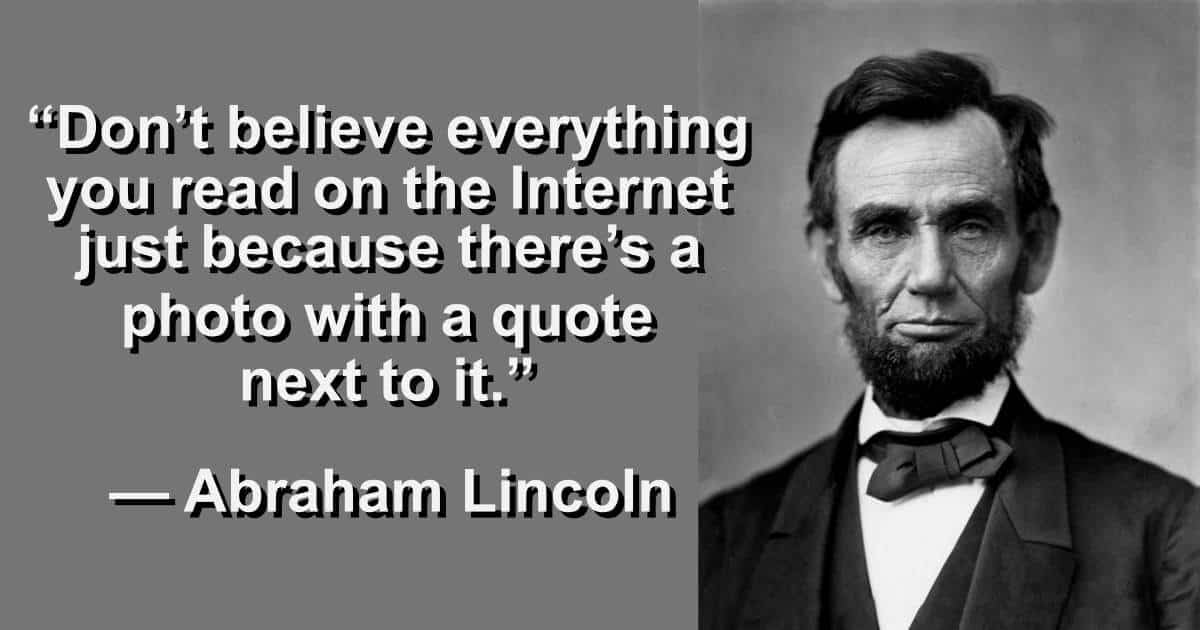
A Complete Teaching Unit on Fake News

Digital and social media have completely redefined the media landscape, making it difficult for students to identify FACTS AND OPINIONS covering:
Teach them to FIGHT FAKE NEWS with this COMPLETE 42 PAGE UNIT. No preparation is required,
Research Tip # 3. Select Domains Wisely
When searching, encourage students to consider the importance of domains, such as .com , .org , . gov , and . edu . These are not all created equally. For example, .com and .org domains are classed as ‘open,’ meaning anyone can register on them. They are usually used for commercial reasons.
Other domains are classed as ‘closed,’ such as .gov and .edu , and registrants must meet specific eligibility requirements to register these. For example, in the case of .edu , registration is limited to accredited post-secondary institutions in the United States.
Depending on the purpose of your search, the domain you choose to search may have implications for the reliability and usefulness of the results returned.
To choose which type of domain to search, type ‘site’, followed by a colon, and then the domain after your chosen search terms.
For example, if you wish to search for the term ‘ American presidents ’ on .edu sites, simply type:
American presidents site:edu
Research Tip # 4. Citation
One downside of the widespread instant and free availability of information on the Internet is the erosion of intellectual property rights and the inevitable increase in plagiarism.
To combat this, we must ensure our students avoid plagiarism and respect copyright rights by adequately citing sources used.
When engaged in writing essays , students should be familiar with how to use quotation marks, compile notes, and structure a bibliography. When citing online sources, they should also be familiar with the conventions related to citing URLs.
Just how detailed citations are will depend mainly on the age and ability of the students in question.
Many excellent free online resources help to format citations correctly, some of which can automatically create formatted citations. For example, Citation Machine and Citation Builder provide this service. Google Docs also has an add-on feature that automatically generates bibliographies and footnotes according to various citation styles, e.g., Chicago, APA, MLA, etc.

Teaching Resources
Use our resources and tools to improve your student’s writing skills through proven teaching strategies.
Research Skills Activities
Elementary School Students
Providing a basic overview of the various research strategies is sufficient for this age group.
Discussions about what research is and why we do it are excellent places to start developing research skills.
These discussions will open up possibilities for students to acquire the necessary vocabulary to develop research skills.
Some topics and areas to focus these discussions on could include:
- How to ask questions about simple research topics
- The concept of keywords – what are they, and how do they work?
- A general overview of search engines, e.g., Google, DuckDuckGo, Bing, Yahoo
- A basic explanation of sources
- Simple note-taking skills
- Researching in the library the “old school” way
Elementary Practice Activities
- Individual Research Project
Ask the students to choose their favorite animal for a class presentation at the end. Students can start by generating research questions to fuel their investigations. Areas they might want to look at could include habitat, life cycle, population numbers, diet, etc.
- Collaborative Hands-On Research
This activity allows the students to engage in basic ‘hands-on’ research on the Internet. This will allow them to practice using keyword search terms to locate helpful information.
Organize the students into ‘research groups’ and provide the groups with a simple topic and a list of questions to research online. For example, the topic might be The Solar System, and some questions they might research could include:
- How many planets are in the solar system?
- What is the name of the closest planet to the sun?
- Which is the most giant planet in the solar system?
- Which is the smallest?
- How many moons does Jupiter have?
- How long does it take for Venus to orbit the sun?
- What is the name of the planet furthest from the sun?
The winning team will be the team to find all the correct answers the quickest.
- Class Project
Another variation of the individual research project is to do a whole class project on a larger scale. For example, students could choose a favorite holiday, such as Christmas, Thanksgiving, Eid, Hanukkah, Chinese New Year, etc., and research multiple aspects of it. For example:
- What are the roots of this festival?
- What is its significance?
- What types of gifts are given?
- What food is associated with this holiday?
- Are certain clothes, customs, or traditions associated with it?
The findings of this research could form classroom displays, presentations, exhibits, etc.
Middle School Students
Students are ready to begin using more sophisticated research skills and strategies at this age. Some things to focus on with middle school-aged students include:
- A more detailed explanation of sources and how to determine their credibility
- Examination of online encyclopedias such as Wikipedia – explore how they may not always be reliable but can be a good resource for locating other more credible sources.
- The use of domains such “edu” “org” “gov” and how they can be used to identify sources
- Practice using simple shortcuts that can be used when searching online
- Discussions on planning and keeping organized notes, e.g., journals, checklists, templates, etc.
Middle School Practice Activities
- Information Recording
As students begin dealing with more complex and larger volumes of information, they’ll need to develop strategies to help them condense and record information for later use in the writing process.
To help them develop this skill, set the students a how-to research task. Choose a task suited to your students’ ages and abilities, for example, anything from How to Bake Cookies to How to Construct a Bridge .
This is an opportunity for your students to develop their note-taking abilities helping them record the important information from their research activities. You may also want them to make visualizations such as diagrams, infographics, and charts, which are valuable techniques for recording the fruits of the research labor.
- Group Project
Organize students into suitably sized groups and provide them with a topic to investigate. Countries work well. Each group will assign a team member to research a specific aspect of their country, and they will pool their findings at the end to develop a presentation or classroom display. Some aspects worthy of research may include:
- Customs and traditions
- Tourist attractions
High School Students
At this stage, the focus moves on from merely finding sources of information to actually processing them. Here, the students should be encouraged to engage more closely with what their research uncovers and begin to dig beneath the surface to evaluate material and sources more critically.
To develop these abilities, students will need to:
- Begin asking more probing questions to initiate their research
- Examine the sources of information more critically
- Become more precise and methodical in choosing search criteria
- Use multiple resources – online, news articles, documentaries, podcasts, youtube
- Keep records of sites visited and books, journals, and articles referred to for citation later
- Cite sources correctly
- quotation marks for searching exact phrases/words
- minus symbol(-) for excluding certain words
- asterisk(*) used to broaden a search by finding words that begin with the same stem
- “site” for site-specific search
- Evaluate sources for reliability, relevance, accuracy, and how current they are
- Develop more organized note-taking methods – focus on quality over quantity
- Plan effectively – utilize strategies to compile information that will help in the final presentation of findings.
High School Practice Activities
- Develop Research Questions
As students learn to deal with the increasing breadth and complexity of research topics, they’ll need to know how to narrow their focus by developing more specific research questions.
This activity provides students with a list of topics to choose from; this can be an excellent opportunity for forging cross-curricular links. For example, you might suggest history or physical education topics, such as The Vietnam War or Cardiovascular Exercise .
Then, ask students to choose a topic and develop research questions on it for aspects they would like to explore further. For example, they might ask questions like How did the Vietnam War start? Or, What effect does cardiovascular exercise have on mood?
Students can then research the answers to their most interesting research questions and share their findings with the class.
- Hold a Debate
Debates are a great way to illustrate the power of research in practical terms – and they are a lot of fun to boot!
In this activity, organize students into debating groups of three. Assign each pair of groups a debate motion and a position. Students will then need to go away and research their topic thoroughly before writing their speeches and delivering their arguments. To learn more about preparing a debate-winning speech, check out our article here .
Research Strategies
“A goal without a plan is just a wish.”
So, what do students do with all these finally-tuned research skills now at their fingertips?
If the boy scouts have taught us anything, it is essential to be prepared. To that end, let’s look at planning strategies to help students get the most from their well-honed research skills.
1. Collaboration
In our rapidly changing world, it is impossible to accurately predict the nature of the jobs our students will undertake in the future.
However, what does seem sure is that the so-called soft skills , which are transferable between jobs, will be much in demand in the working world of tomorrow. Collaboration is one of these important skills.
Collaboration involves working together to achieve a common goal. It promotes high levels of interaction and communication between students and colleagues. Collaboration exposes each individual to diverse perspectives and encourages higher-level thinking. Incorporating collaboration at the planning stage helps ensure the success of teaching and learning projects.
2. The Round Robin
Brainstorming is a tried and tested means of beginning the planning process. There are many variations in brainstorming techniques. The Round Robin , which we will look at here, lends itself well to our previous collaboration strategy.
In the Round Robin , the students sit in a circle to discuss the topic.
One by one, go around the circle, encouraging each student to share one idea until everyone has had a chance to speak. While this happens, an appointed person can keep a record of each shared idea.
Ideas must be shared first without initial discussion or criticism. Evaluation and debate should occur only after each person has had an opportunity to share their ideas.
This is an excellent strategy to ensure each person has had an opportunity to share their ideas. It also avoids any one voice dominating a collaborative planning session.
3. The Mind Map
Mind Maps are simply diagrams that visually represent ideas. They can be done individually or collaboratively using words, pictures, or both.
With much in common with brainstorming, Mind Maps are an excellent way to begin the planning process, as they are a superb means of organizing complex ideas.
Many people use paper and pens to create Mind Maps for their projects. However, people are increasingly turning to technology to help their development. There are now many paid and free options online, providing templates and tools to help you develop your own Mind Maps .
4. Use an Online Calendar
Homework deadlines. Exam timetables. College applications. The demands on students and teachers alike are many and varied. It may, at times, seem impossible to keep track of everything.
Using an online calendar, such as those pre-installed on many cell phones, helps ensure you keep track of your to-do list, and many will even provide regular reminders as those deadlines loom near.
5. Create Checklists
Not only are checklists a great way to ensure you have fulfilled all the criteria of a given task, but they are also an effective means of planning out all the points you need to hit to complete a project successfully.
A good checklist should contain all the essential elements for a successful piece of work. When the descriptions of these items are kept generic rather than detailed and specific, they can serve as templates for a particular genre to be reused each time your students engage in that type of work.
Research Thoroughly. Implement Effectively!
Research skills are the bridge between the idea and its implementation in writing. The more students develop their research skills, the more authoritative their writing will become. With practice, these two sides of the blade will become razor-sharp.
A COMPLETE DIGITAL READING UNIT FOR STUDENTS
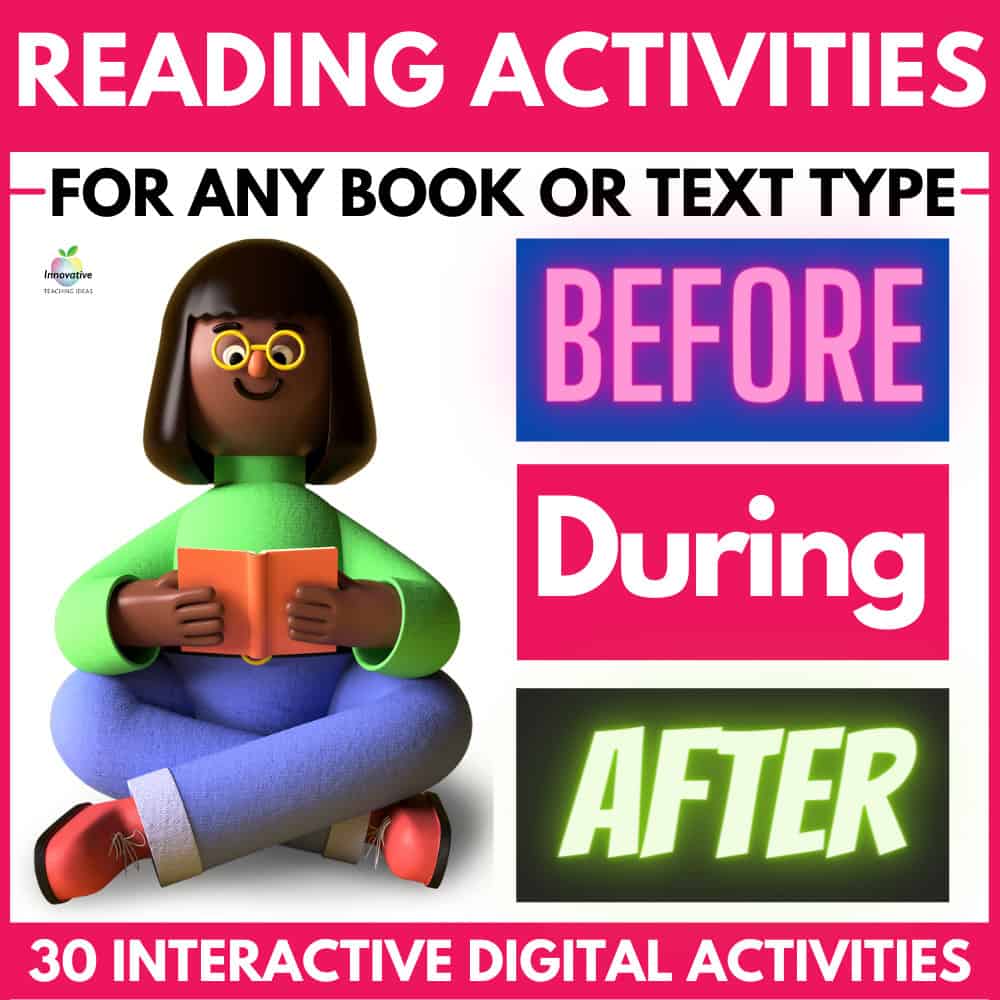
Over 30 engaging activities for students to complete BEFORE, DURING and AFTER reading ANY BOOK
- Compatible with all devices and digital platforms, including GOOGLE CLASSROOM.
- Fun, Engaging, Open-Ended INDEPENDENT tasks.
- 20+ 5-Star Ratings ⭐⭐⭐⭐⭐
Useful research strategIES video TUTORIALS
OTHER GREAT ARTICLES TO SUPPORT RESEARCH SKILLS

6 Ways To Identify Fake News: A Complete Guide for Educators

The Writing Process

How to Write an Article

How to Write a Biography
- Skip to primary navigation
- Skip to main content
- Skip to primary sidebar
Teaching Expertise
- Classroom Ideas
- Teacher’s Life
- Deals & Shopping
- Privacy Policy
50 STEM Projects For Middle School: Structures, Experiments, Discussions, Challenges, DIYs, And Games
April 4, 2024 // by Stephanie Ledford
STEM: Science, Technology, Engineering, and Math! This exciting topic puts your students at the center of learning by encouraging exploration and innovation to solve problems. By doing so, we are creating tomorrow’s cutting-edge leaders, ready to make new discoveries and advances that we couldn’t even dream up! Check out these awesome STEM projects that are perfect for middle school to cultivate the next generation of scientific, technological, engineering, and mathematical innovators!
1. Scaling Up Candy Wrappers
Teach your kids about increasing the scale of an image by using grids. This activity works well with candy wrappers or cartoon characters, as these are things every middle schooler is interested in! You can also use this idea to teach them how to use grids to decrease the size of their drawings.
Learn More: Fast Times Of A Middle School Math Teacher
2. Leaning Tower of Pasta
Have your students practice their engineering skills with this fun activity using pasta and marshmallows! They’ll learn about concepts like compression and tension as they try to build the tallest and strongest structures! Dial up the competitive spirit with a prize for the winning team!
Learn More: Teach Engineering
3. Toothpick Bridge
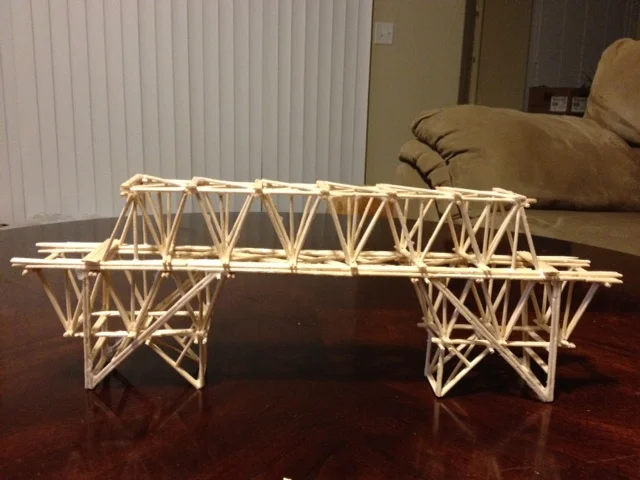
Another creative engineering project for your middle schoolers is this toothpick bridge project. Your kiddos will only need glue and toothpicks to design and build some awesome bridges. They’ll earn extra points if their bridges are strong and can hold a lot of weight!
Learn More: Instructables
4. I Breathe What?
If you are looking for an activity that combines engineering and science then look no further! Your kids will build pollution detectors out of card, string, and sticky tape, to put in different areas. They’ll then collect these and use a magnifying glass to examine all of the different particles that have been caught. The results may be surprising!
Learn More: YouTube
5. Backyard Weather Station
Teach your students about how we’re able to measure and predict weather patterns using weather stations. After making their own predictions about what the weather will do, your budding meteorologists will build their own weather stations complete with a weather vane, barometer, rain gauge, and thermometer!!
Learn More: eGFI
6. One Million Dollar Project
Show your middle school students the value of the dollar with this fun math assignment! They’ll delight in planning how they’d spend one million dollars, but it won’t be all about fun and games! They’ll need to take real-life expenses into consideration, such as paying for college and buying a house. They’re sure to appreciate their weekly allowance that much more!
Learn More: 4mula Fun!
7. Protect Your Body, Filter Your Water!
Having access to clean water is a huge concern for many people around the world, so being able to filter dirty water to make it drinkable is invaluable! Put your kiddies’ engineering skills to the test as they work out the best way to create their own water filters using a sieve and some activated charcoal.
8. Paper Roller Coasters
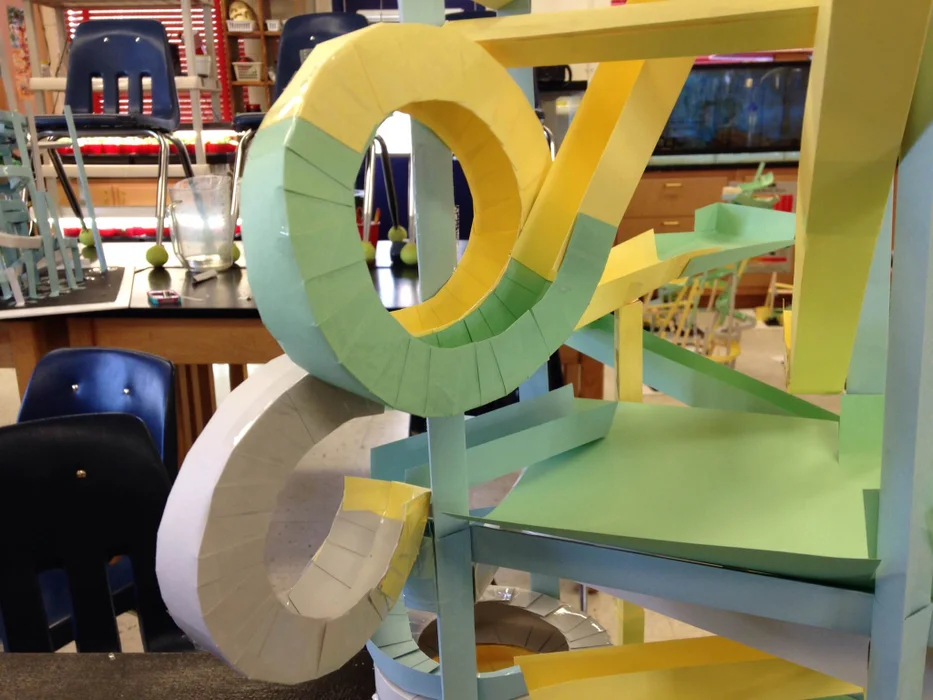
Who doesn’t love a roller coaster? This fun STEM challenge will have your little engineers use paper, card stock, and tape to build their own roller coasters. Next, they’ll roll a marble along the track and see if it makes its way to the end! They’ll be amazed at what kind of thought goes into their local fun park!
9. Fire Snake

This is one of those science experiments your students will remember for many years to come! Set up this experiment by lining a bowl with sand, then add sugar and baking soda on top. Next, saturate the mixture with some lighter fluid, then have your kiddies stand back as you light it up! They’ll be amazed by the interactions of the different elements and love the final product!
Learn More: Surviving a Teacher’s Salary
10. Alka Seltzer Lava Lamp
Add this one to your simple STEM projects folder straight away! Have your kiddos combine food coloring, vegetable oil, and water in a clear jar or bottle, then start the show by adding an Alka Seltzer tablet! The way the different elements interact in this fun, simple experiment will be awe-inspiring for your class.
Learn More: Fun Learning for Kids
11. Ice Cream in a Bag
I scream, you scream, we all scream for ice cream! Who knew there was science involved in making ice cream? Get your learners to combine and seal half and half, sugar, and vanilla in a zip lock bag, then place this into a bigger bag filled with ice and salt. After a good shake, their ice cream is ready for a taste test!
Learn More: The Best Ideas for Kids
12. Paper Airplane Challenge

There are tons of STEM challenges you can do with your students involving paper airplanes. They’re probably bored of seeing whose airplane will fly the furthest, so why not shake things up by seeing whose can carry the most cargo? They’ll be having so much fun that they won’t even realize they’ve become engineers!
Learn More: Kids Activities
13. Fidget Spinner Challenge
While fidget spinners may have momentarily driven teachers crazy, they can actually be a great learning opportunity!! Use them to teach your class about the engineering design process; from having your kids create their own design to using math concepts for budgeting the cost of building one, they’re sure to have fun with this one!
Learn More: Momgineer
14. Comparing Slime And Other Polymers STEM Activity
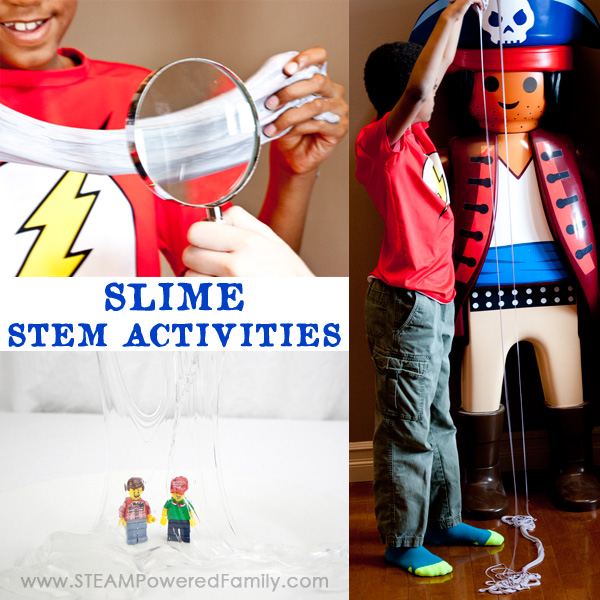
A great STEM activity that’s sure to excite your little scientists is one that involves slime! In this project you can make slime and other polymers and non-Newtonian fluids then compare the properties of each! What a perfect way to get your class talking about and practicing scientific investigative processes!
Learn More: STEAM-Powered Family
15. No Valve in Vain
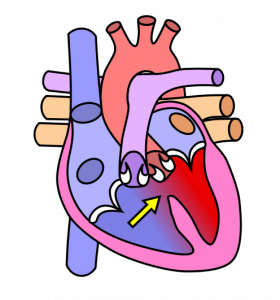
Your kids will be inspired to learn that biomedical engineers design things that not only assist people but also keep them alive! In this STEM activity, you’ll teach your class how to create a one-way valve like the ones found in our hearts. They’ll see how this simple concept ensures that our blood continues to pump around our bodies.
16. Balloon Powered Car
Look no further for your next STEM project than the balloon-powered car! Using various crafting or recycled materials, your kiddies will build their cars and learn how an axle allows the wheels to turn as the balloon propels their cars across the room! There are so many different concepts you can cover in this one STEM challenge!
Learn More: Teaching Science
17. Elephant Toothpaste
Let your kiddos discover how some hydrogen peroxide can turn some everyday materials into elephant toothpaste! They’ll combine dish soap and food coloring with the peroxide, then add yeast to kick things off! This exciting chemical reaction isn’t one they’ll forget in a hurry!
Learn More: Fractus Learning
18. Bath Bombs

In this fun experiment, your kiddos will form hypotheses about how water temperatures will affect the eruptions of bath bombs. After they’ve made their predictions, they can fill up a tub with some water and get to testing! If you have time, you could have them create their own bath bombs for this project!?
Learn More: Argo Food Service
19. Candy Crystals

Creating these gorgeous lollies with your learners is sure to delight! Who knew that growing your own rock candy was so easy? Have your them create a mixture of sugar, water, and food dye, then submerge their prepared sticks and wait for the magic to happen! They’ll be amazed as they watch their candy crystals grow before their eyes!
Learn More: Better Life Blog
20. Marble Speed Trap
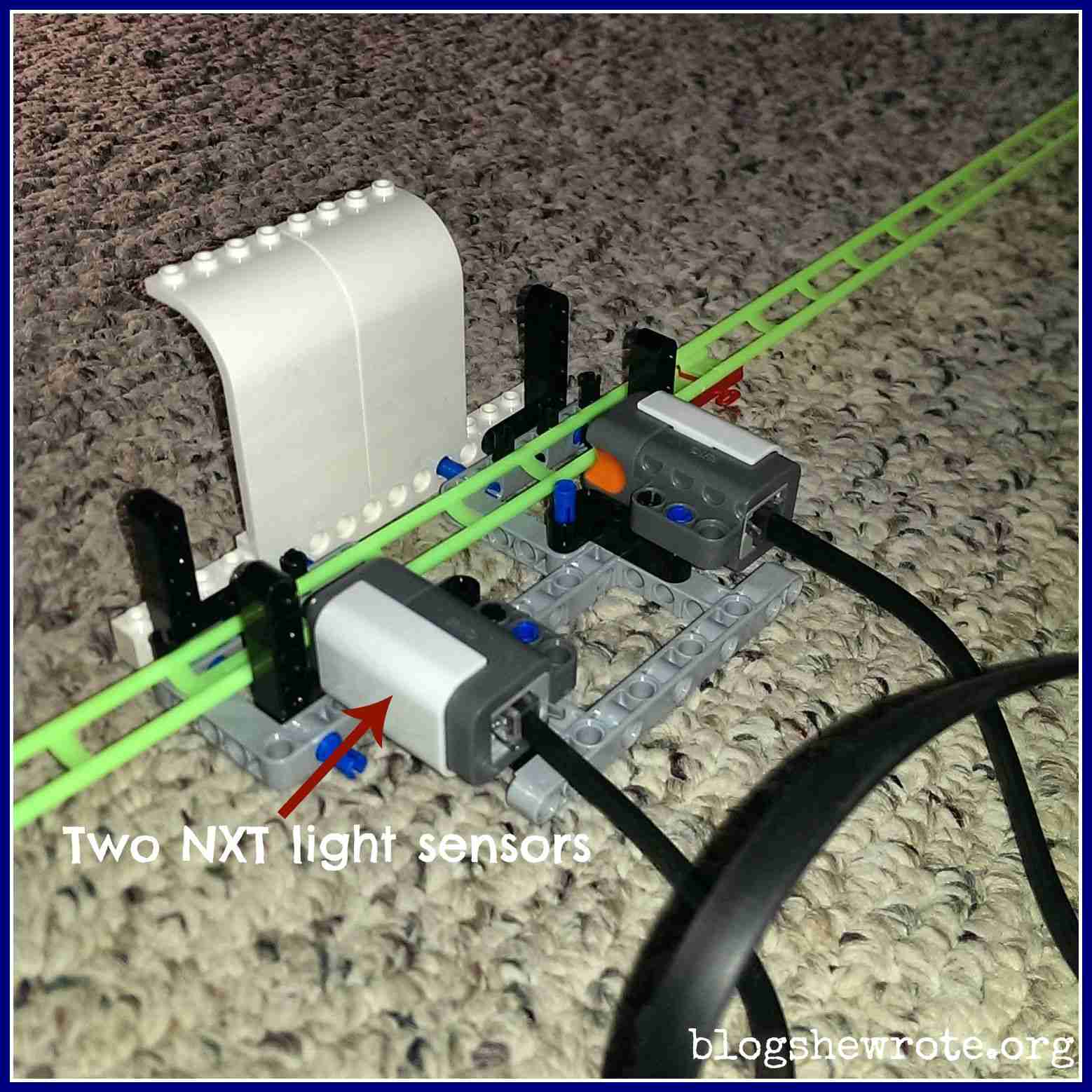
Toys + science = FUN! Use LEGOs and marbles to review and reinforce the concept of velocity with your kiddies. They’ll build their very own speed trap in this engaging activity using some light sensors which will measure the speed that the marble travels down the track! There’ll be no slowing these scientists’ learning down, that’s for sure!
Learn More: Blog She Wrote
21. Cell Phone Stand

One thing we all have in our pockets these days is a cell phone. And why not make it the main attraction in this fun STEM activity? Have your kids use the design process to reimagine a common cell phone stand and then have them bring their visions into reality by using various crafting materials from around the classroom.
Learn More: Scientific American
22. Cloud in a Bottle

Inspire your future meteorologists with this unbelievable experiment! Using just a clear bottle, a few drops of water, and a match they’ll get to see firsthand how water condenses to form a cloud!
Learn More: The Water Project.org
23. Snickers Rock Models
Did you know that a simple Snickers bar can be used to represent three kinds of rock? Have your kiddos explore the layers of this delicious candy bar and experiment with applying pressure and heat to discover the effects these have on sedimentary, igneous, and metamorphic rock.
Learn More: Organized Homeschooler
24. Windmill STEM Challenge
Engage your kids’ engineering mindsets with this windmill construction challenge, based on the story of The Boy Who Harnessed the Wind. They’ll use recyclables to explore, design, test, and refine models of windmills. This is an awesome way for them to explore future careers in STEM.
Learn More: Carly & Adam
25. Layers of The Ocean And Density
STEM activities are a great way to bring abstract scientific concepts, such as the layers of the ocean, to life for your students! This activity uses sand, salt, and water to make a mini-ocean in a glass. Your class will measure the different densities of these materials and discover how this relates to the ocean’s layers.
Learn More: Homeschool Momgineer
26. Bouncy Naked Eggs
Shell-less eggs are sure to fascinate your students, whatever their age! Give your learners an unboiled egg to put in some vinegar for about 24 hours; the result is a shell-less bouncy egg! Take this classic experiment a step further by predicting and testing which egg is the bounciest.
Learn More: Science Sparks
27. Glowing Eggs
Let your kiddies take the “naked egg” experiment to the next level with just one more ingredient–the ink from a highlighter! Add the ink pad from a highlighter to vinegar, then add the egg Once the shell has dissolved, take the egg to a dark room and shine a light on it! Talk about a glow-up!
Learn More: Frugal Coupon Living
28. The Science of Sound Waves
Visualizing scientific concepts like sound waves can be tricky! However, with just a spoon, some string, and a ruler, your students will start to get the idea. First, have them tie a spoon to the end of two lengths of yarn and hold the yarn to their ears. Next, tap the spoon and watch the “Ah ha!” moment in real-time!
Learn More: KC Edventures
29. How Does a Leaf Breathe?
No lungs? No problem! Have your kids put a leaf in a bowl of water, set it in the sun, and watch as the magic of photosynthesis happens. Seeing the oxygen bubbles form on the surface of the leaf will show them this process in real-time!
30. Ping-Pong Ball Launcher
Get your kiddos outside with this fun rocket ball launcher experiment! Using a recycled plastic bottle and some rubber bands, your kiddos will learn about a ton of important STEM concepts such as the transfer of energy, inertia, and velocity. Create your basic prototype then let them tinker with the design to make improvements!
Learn More: Frugal Fun 4 Boys
31. Marble Energy Transfer
Build your kiddos’ understanding of how energy is transferred between objects in this intriguing marble experiment! Using their prior knowledge of potential and kinetic energy, they’ll make predictions about what will happen to the marbles when they collide and how far they will travel.
32. LEGO Wrecking Ball
What’s better than building a LEGO tower? Using it to knock things down! For all your future engineers, it’ll be a hit to build some functional machines during a STEM design challenge! Using just a golf ball, some string, and a few LEGOs, task them with constructing a wrecking ball that’ll knock over anything standing in its way!
Learn More: LEGO Librarian
33. DIY Phone Amplifier
Check, one, two, three! Your music lovers will love this one. They’ll get to have a dance party in class, but must first they’ve got figure out how to amplify the music from a phone. Using only recyclable materials, have them build a device that’ll turn up the tunes!
Learn More: Mum In The Madhouse
34. Catapult Circuit Challenge
Ready, aim, fire! Have your kiddos engineer catapults from simple materials in this classic STEM activity. You can extend this activity by challenging them to complete several tests and get the perfect collapse! They’ll need to truly follow the engineering design process, revisiting and tweaking their machines in the pursuit of efficiency!
Learn More: Vivify STEM
35. Space Lander Challenge
In this incredible activity for your middle school kids, they’ll integrate physical science concepts and their problem-solving skills. They’ll be tasked with the real-world problem of developing a stable spacecraft that protects the “astronauts” inside upon landing. It’ll only take a few simple materials and some marshmallows to prepare!
36. Index Card Challenge
This simple activity is the perfect icebreaker for your middle school kids and also incorporates STEM. First, split your learners into groups and give them a couple of minutes to write things they have in common on index cards. Next, they must race against each other to build the tallest card tower possible!
Learn More: Beakers And Ink
37. Saving Sam
Saving Sam is a STEM challenge for your table groups with a team-building element! Your kiddos have got to work together to save poor Sam, the gummy worm but they’ll only be allowed to use paperclips to flip his capsized boat and get his lifesaver on! This activity highlights the importance of sharing ideas respectfully, as they would in future STEM fields.
38. DIY Smartphone Projector
Your middle school students will explore concepts of projection and magnification as they work to create a functioning movie projector. After creating the projector from just a magnifying lens and box, your students can vote on which movie to watch as they test out their creation!
Learn More: The STEM Laboratory
39. Pinball Machine Challenge
Are there any pinball wizards in the room? Take your kiddies back to the days of arcades with this super fun pinball machine engineering activity. Have them design a functional pinball machine, complete with flippers, a plunger, and score holes, and prompt them to consider STEM concepts like the laws of motion, force, and velocity!
Learn More: Teach Student Savvy
40. Simple Machine Bird
Strengthen your learners’ engineering mindset as they build a mechanical bird complete with levers and gears! All you’ll need is some cardboard, popsicle sticks, and some plastic gear sets to challenge them to construct a bird that is able to flap its wings! This cool STEM activity will build an understanding of how simple machines are built.
41. Water Pipelines
Connect your classroom STEM lessons with future career pathways through this introduction to water pipelines! Your kiddies will use their problem-solving abilities to move water from a reservoir through straw pipelines! Can they get the water from A to B without any leaks?
Learn More: Teachers Are Terrific
42. Earthquake Structures
Can your students build an earthquake-proof structure? Guide them as they investigate the properties of stable structures and then use simple materials to create multi-level buildings that can withstand a Jello earthquake! This fun STEM activity is a super hands-on way to shake things up for your middle schoolers!
43. Thaumatrope
During this STEM lesson, you’ll teach your students the scientific magic behind a classic toy from the old days; the thaumatrope! First, your kiddos will trace or draw designs on the two sides of a cardstock circle. Then, after learning about “persistence of vision,” they’ll add rubber bands and spin their creations to see them in action as the two images blend together.
Learn More: What We Do All Day
44. Pringles Ring
Amaze your kiddos with this feat of friction and gravity as they work to construct rings of only Pringles chips. By carefully placing the chips in the correct pattern, they’ll be able to form a solid ring that stands without support! Amazing, right? The best part is that their creation becomes an edible reward in the end!
45. Light Painting
Light painting may seem like just a fun social media trend, but on a deeper level, it is an exploration of camera exposure and light! Turn out the lights, set your camera on a long exposure mode, and show your kiddos what types of images they can create with just a torch or glow stick!
Learn More: Pink Stripey Socks
46. Video Game Coding
Before delving into your classroom unit on video game engineering, challenge your kids to complete the same type of tasks in a hands-on way. Encourage them to think through their overall layout, familiarize themselves with commands, and figure out what they’ll need to incorporate into a purposeful game design.
Learn More: Teachers Pay Teachers
47. Design a Video Game
Introduce your learners to basic game coding concepts with this super offering! The software is right at their fingertips with Google CS First for them to learn how to create simple racing games. and as it meets ISTE standards! What a fun and practical resource to help your middle schoolers meet the STEM curriculum.
Learn More: Google CS First
48. Lightbot Coding
Lightbot is another fantastic online resource for building your students’ understanding of coding. They will get to practice their skills in relaying commands, making loops, and utilizing their critical thinking skills on this interactive platform. This a great choice for a STEM block or as an activity for your early finishers!
Learn More: Light Bot
49. Printable Debugging Game
Debugging is an important principle of coding that your kiddos should learn early on. Grab this quick and easy debugging practice printable to tap into their critical thinking skills. It’s sure to show your kids the importance of thorough, error-free coding, which is critical for a future career in computer science!
Learn More: iGame Mom
50. Digital Artist
Looking for an awesome online resource that combines art and technology? Code has numerous coding games and activities to teach your students the basics of code and Artist is no exception!! Your class will be totally engaged as they follow the on-screen coding instructions to create increasingly difficult shapes. They’ll be coding pixels to create masterpieces in no time!
Learn More: Code

STEM Career Research Project for Middle School
- December 18, 2022
- Engineering , STEM
- Career Exploration , Engaging Lessons , Real World Connections
How do you inspire future scientists and engineers? Do your students know what careers are STEM careers and what it means to have a career in STEM? You can answer these questions and more with this multi-day STEM career project !
STEM Career Research Project
In this project, students will choose an engineering career to research. They will discover the job roles and responsibilities, possible work environments, education requirements, average salaries, helpful skills and traits, and projected job growth in that field. Then students will imagine a company that is looking to hire a person in that career field. They’ll examine real-world job postings and then design and create a “help wanted” poster for their chosen career. Next, students will present their work and learn about other careers in a gallery walk activity. Finally, they’ll complete an independent reflection activity.
This STEM career research project is independent and low-prep. Grab this resource today! You will save your prep time, and know your students will be engaged and inspired while learning about STEM careers.

What’s included in the STEM Careers Research Project?
This no-prep project includes everything you need for 3-5 days of engaging STEM activities, including:
- Printable PDF, Google, and Easel versions of the student activities and worksheets
- A webquest that guides students to choose and research a STEM career
- Detailed guidelines and templates for the “Help Wanted” job advertisement project
- A graphic organizer for capturing student learning during the Gallery Walk activity
- An independent reflection worksheet to be completed at the end of the project
- Embedded links to quality background research websites
- Detailed teacher notes for easy facilitation
- An easy-to-use grading rubric
What materials do you need?
You only need to provide printed or digital copies of the student worksheets and devices with internet access for research.
How can you use the STEM career project in your classroom?
You can use the research project as a week-long study of STEM careers. You will open your students’ eyes to career options that they may have never before considered. This is a great introductory activity for your STEM class, and it can be used to celebrate National Engineering Week in February.
This STEM career project is also perfect for giving yourself a bit of a break when you are feeling burnt out or feeling frustrated with challenging student behaviors. For example, you could use the project to keep students engaged before a school holiday. You can also use the project to keep students learning when you have unusual schedules or low attendance due to field trips, testing, assemblies, or other interruptions. Or, you can leave the low-prep project as a multi-day STEM sub plan.
Looking for other STEM Career activities?
If you’d like more ideas for inspiring your students and teaching them about STEM careers, check out this blog post on exploring STEM careers !
Leave a Reply Cancel reply
Your email address will not be published. Required fields are marked *
More Blog Posts

How to Create a Water Filter STEM Project
By Trilby Hillenbrand DIY water filters are an impactful STEM project. The learning experience can inspire and empower students to
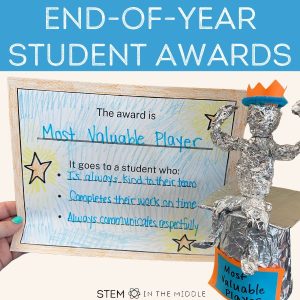
Creative and Unique End-of-Year Student Awards for Middle School
By Trilby Hillenbrand The weather’s getting warmer, and everyone’s counting down the days until summer! End-of-year awards are a great
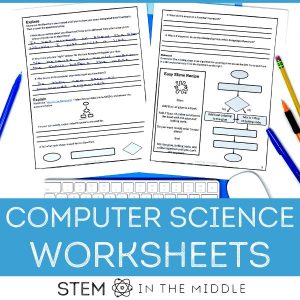
Create Coding Wizards with Our Middle School Computer Science Worksheets
By Trilby Hillenbrand Hello, Middle School STEM Teachers! Unlock the world of computer programming for your students with our computer

Hi, I'm Trilby!
I help middle school educators like you facilitate high quality STEM lessons that engage and challenge students while saving time and energy.
Grab your free STEM lesson!
Shop the store.

Copyright 2024 | STEM in the Middle, LLC. | All Rights Reserved
Scaffolding Methods for Research Paper Writing

- Resources & Preparation
- Instructional Plan
- Related Resources
Students will use scaffolding to research and organize information for writing a research paper. A research paper scaffold provides students with clear support for writing expository papers that include a question (problem), literature review, analysis, methodology for original research, results, conclusion, and references. Students examine informational text, use an inquiry-based approach, and practice genre-specific strategies for expository writing. Depending on the goals of the assignment, students may work collaboratively or as individuals. A student-written paper about color psychology provides an authentic model of a scaffold and the corresponding finished paper. The research paper scaffold is designed to be completed during seven or eight sessions over the course of four to six weeks.
Featured Resources
- Research Paper Scaffold : This handout guides students in researching and organizing the information they need for writing their research paper.
- Inquiry on the Internet: Evaluating Web Pages for a Class Collection : Students use Internet search engines and Web analysis checklists to evaluate online resources then write annotations that explain how and why the resources will be valuable to the class.
From Theory to Practice
- Research paper scaffolding provides a temporary linguistic tool to assist students as they organize their expository writing. Scaffolding assists students in moving to levels of language performance they might be unable to obtain without this support.
- An instructional scaffold essentially changes the role of the teacher from that of giver of knowledge to leader in inquiry. This relationship encourages creative intelligence on the part of both teacher and student, which in turn may broaden the notion of literacy so as to include more learning styles.
- An instructional scaffold is useful for expository writing because of its basis in problem solving, ownership, appropriateness, support, collaboration, and internalization. It allows students to start where they are comfortable, and provides a genre-based structure for organizing creative ideas.
- In order for students to take ownership of knowledge, they must learn to rework raw information, use details and facts, and write.
- Teaching writing should involve direct, explicit comprehension instruction, effective instructional principles embedded in content, motivation and self-directed learning, and text-based collaborative learning to improve middle school and high school literacy.
Common Core Standards
This resource has been aligned to the Common Core State Standards for states in which they have been adopted. If a state does not appear in the drop-down, CCSS alignments are forthcoming.
State Standards
This lesson has been aligned to standards in the following states. If a state does not appear in the drop-down, standard alignments are not currently available for that state.
NCTE/IRA National Standards for the English Language Arts
- 1. Students read a wide range of print and nonprint texts to build an understanding of texts, of themselves, and of the cultures of the United States and the world; to acquire new information; to respond to the needs and demands of society and the workplace; and for personal fulfillment. Among these texts are fiction and nonfiction, classic and contemporary works.
- 2. Students read a wide range of literature from many periods in many genres to build an understanding of the many dimensions (e.g., philosophical, ethical, aesthetic) of human experience.
- 3. Students apply a wide range of strategies to comprehend, interpret, evaluate, and appreciate texts. They draw on their prior experience, their interactions with other readers and writers, their knowledge of word meaning and of other texts, their word identification strategies, and their understanding of textual features (e.g., sound-letter correspondence, sentence structure, context, graphics).
- 4. Students adjust their use of spoken, written, and visual language (e.g., conventions, style, vocabulary) to communicate effectively with a variety of audiences and for different purposes.
- 5. Students employ a wide range of strategies as they write and use different writing process elements appropriately to communicate with different audiences for a variety of purposes.
- 6. Students apply knowledge of language structure, language conventions (e.g., spelling and punctuation), media techniques, figurative language, and genre to create, critique, and discuss print and nonprint texts.
- 7. Students conduct research on issues and interests by generating ideas and questions, and by posing problems. They gather, evaluate, and synthesize data from a variety of sources (e.g., print and nonprint texts, artifacts, people) to communicate their discoveries in ways that suit their purpose and audience.
- 8. Students use a variety of technological and information resources (e.g., libraries, databases, computer networks, video) to gather and synthesize information and to create and communicate knowledge.
- 12. Students use spoken, written, and visual language to accomplish their own purposes (e.g., for learning, enjoyment, persuasion, and the exchange of information).
Materials and Technology
Computers with Internet access and printing capability
- Research Paper Scaffold
- Example Research Paper Scaffold
- Example Student Research Paper
- Internet Citation Checklist
- Research Paper Scoring Rubric
- Permission Form (optional)
Preparation
| 1. | Decide how you will schedule the seven or eight class sessions in the lesson to allow students time for independent research. You may wish to reserve one day each week as the “research project day.” The schedule should provide students time to plan ahead and collect materials for one section of the scaffold at a time, and allow you time to assess each section as students complete it, which is important as each section builds upon the previous one. |
| 2. | Make a copy for each student of the , the , the , the , and the . Also fill out and copy the if you will be getting parents’ permission for the research projects. |
| 3. | If necessary, reserve time in the computer lab for Sessions 2 and 8. Decide which citation website students will use to format reference citations (see Websites) and bookmark it on student computers. |
| 4. | Schedule time for research in the school media center or the computer lab between Sessions 2 and 3. |
Student Objectives
Students will
- Formulate a clear thesis that conveys a perspective on the subject of their research
- Practice research skills, including evaluation of sources, paraphrasing and summarizing relevant information, and citation of sources used
- Logically group and sequence ideas in expository writing
- Organize and display information on charts, maps, and graphs
Session 1: Research Question
| 1. | Distribute copies of the and , and read the model aloud with students. Briefly discuss how this research paper works to answer the question, The example helps students clearly see how a research question leads to a literature review, which in turn leads to analysis, original research, results, and conclusion. |
| 2. | Pass out copies of the . Explain to students that the procedures involved in writing a research paper follow in order, and each section of the scaffold builds upon the previous one. Briefly describe how each section will be completed during subsequent sessions. |
| 3. | Explain that in this session the students’ task is to formulate a research question and write it on the scaffold. The most important strategy in using this model is that students be allowed, within the assigned topic framework, to ask their research questions. Allowing students to choose their own questions gives them control over their own learning, so they are motivated to “solve the case,” to persevere even when the trail runs cold or the detective work seems unexciting. |
| 4. | Introduce the characteristics of a good research question. Explain that in a broad area such as political science, psychology, geography, or economics, a good question needs to focus on a particular controversy or perspective. Some examples include: Explain that students should take care not to formulate a research question so broad that it cannot be answered, or so narrow that it can be answered in a sentence or two. |
| 5. | Note that a good question always leads to more questions. Invite students to suggest additional questions resulting from the examples above and from the Example Research Paper Scaffold. |
| 6. | Emphasize that good research questions are open-ended. Open-ended questions can be solved in more than one way and, depending upon interpretation, often have more than one correct answer, such as the question, Closed questions have only one correct answer, such as, Open-ended questions are implicit and evaluative, while closed questions are explicit. Have students identify possible problems with these research questions |
| 7. | Instruct students to fill in the first section of the Research Paper Scaffold, the Research Question, before Session 2. This task can be completed in a subsequent class session or assigned as homework. Allowing a few days for students to refine and reflect upon their research question is best practice. Explain that the next section, the Hook, should be filled in at this time, as it will be completed using information from the literature search. |
You should approve students’ final research questions before Session 2. You may also wish to send home the Permission Form with students, to make parents aware of their child’s research topic and the project due dates.
Session 2: Literature Review—Search
Prior to this session, you may want to introduce or review Internet search techniques using the lesson Inquiry on the Internet: Evaluating Web Pages for a Class Collection . You may also wish to consult with the school librarian regarding subscription databases designed specifically for student research, which may be available through the school or public library. Using these types of resources will help to ensure that students find relevant and appropriate information. Using Internet search engines such as Google can be overwhelming to beginning researchers.
| 1. | Introduce this session by explaining that students will collect five articles that help to answer their research question. Once they have printed out or photocopied the articles, they will use a highlighter to mark the sections in the articles that specifically address the research question. This strategy helps students focus on the research question rather than on all the other interesting—yet irrelevant—facts that they will find in the course of their research. |
| 2. | Point out that the five different articles may offer similar answers and evidence with regard to the research question, or they may differ. The final paper will be more interesting if it explores different perspectives. |
| 3. | Demonstrate the use of any relevant subscription databases that are available to students through the school, as well as any Web directories or kid-friendly search engines (such as ) that you would like them to use. |
| 4. | Remind students that their research question can provide the keywords for a targeted Internet search. The question should also give focus to the research—without the research question to anchor them, students may go off track. |
| 5. | Explain that information found in the articles may lead students to broaden their research question. A good literature review should be a way of opening doors to new ideas, not simply a search for the data that supports a preconceived notion. |
| 6. | Make students aware that their online search results may include abstracts, which are brief summaries of research articles. In many cases the full text of the articles is available only through subscription to a scholarly database. Provide examples of abstracts and scholarly articles so students can recognize that abstracts do not contain all the information found in the article, and should not be cited unless the full article has been read. |
| 7. | Emphasize that students need to find articles from at least five different reliable sources that provide “clues” to answering their research question. Internet articles need to be printed out, and articles from print sources need to be photocopied. Each article used on the Research Paper Scaffold needs to yield several relevant facts, so students may need to collect more than five articles to have adequate sources. |
| 8. | Remind students to gather complete reference information for each of their sources. They may wish to photocopy the title page of books where they find information, and print out the homepage or contact page of websites. |
| 9. | Allow students at least a week for research. Schedule time in the school media center or the computer lab so you can supervise and assist students as they search for relevant articles. Students can also complete their research as homework. |
Session 3: Literature Review—Notes
Students need to bring their articles to this session. For large classes, have students highlight relevant information (as described below) and submit the articles for assessment before beginning the session.
| 1. | Have students find the specific information in each article that helps answer their research question, and highlight the relevant passages. Check that students have correctly identified and marked relevant information before allowing them to proceed to the Literature Review section on the . |
| 2. | Instruct students to complete the Literature Review section of the Research Paper Scaffold, including the last name of the author and the publication date for each article (to prepare for using APA citation style). |
| 3. | Have students list the important facts they found in each article on the lines numbered 1–5, as shown on the . Additional facts can be listed on the back of the handout. Remind students that if they copy directly from a text they need to put the copied material in quotation marks and note the page number of the source. Students may need more research time following this session to find additional information relevant to their research question. |
| 4. | Explain that interesting facts that are not relevant for the literature review section can be listed in the section labeled Hook. All good writers, whether they are writing narrative, persuasive, or expository text, need to engage or “hook” the reader’s interest. Facts listed in the Hook section can be valuable for introducing the research paper. |
| 5. | Use the Example Research Paper Scaffold to illustrate how to fill in the first and last lines of the Literature Review entry, which represent topic and concluding sentences. These should be filled in only all the relevant facts from the source have been listed, to ensure that students are basing their research on facts that are found in the data, rather than making the facts fit a preconceived idea. |
| 6. | Check students’ scaffolds as they complete their first literature review entry, to make sure they are on track. Then have students complete the other four sections of the Literature Review Section in the same manner. |
Checking Literature Review entries on the same day is best practice, as it gives both you and the student time to plan and address any problems before proceeding. Note that in the finished product this literature review section will be about six paragraphs, so students need to gather enough facts to fit this format.
Session 4: Analysis
| 1. | Explain that in this session students will compare the information they have gathered from various sources to identify themes. |
| 2. | Explain the process of analysis using the . Show how making a numbered list of possible themes, drawn from the different perspectives proposed in the literature, can be useful for analysis. In the Example Research Paper Scaffold, there are four possible explanations given for the effects of color on mood. Remind students that they can refer to the for a model of how the analysis will be used in the final research paper. |
| 3. | Have students identify common themes and possible answers to their own research question by reviewing the topic and concluding sentences in their literature review. Students may identify only one main idea in each source, or they may find several. Instruct students to list the ideas and summarize their similarities and differences in the space provided for Analysis on the scaffold. |
| 4. | Check students’ Analysis section entries to make sure they have included theories that are consistent with their literature review. Return the Research Paper Scaffolds to students with comments and corrections. In the finished research paper, the analysis section will be about one paragraph. |
Session 5: Original Research
Students should design some form of original research appropriate to their topics, but they do not necessarily have to conduct the experiments or surveys they propose. Depending on the appropriateness of the original research proposals, the time involved, and the resources available, you may prefer to omit the actual research or use it as an extension activity.
| 1. | During this session, students formulate one or more possible answers to the research question (based upon their analysis) for possible testing. Invite students to consider and briefly discuss the following questions: |
| 2. | Explain the difference between and research. Quantitative methods involve the collection of numeric data, while qualitative methods focus primarily on the collection of observable data. Quantitative studies have large numbers of participants and produce a large collection of data (such as results from 100 people taking a 10-question survey). Qualitative methods involve few participants and rely upon the researcher to serve as a “reporter” who records direct observations of a specific population. Qualitative methods involve more detailed interviews and artifact collection. |
| 3. | Point out that each student’s research question and analysis will determine which method is more appropriate. Show how the research question in the Example Research Paper Scaffold goes beyond what is reported in a literature review and adds new information to what is already known. |
| 4. | Outline criteria for acceptable research studies, and explain that you will need to approve each student’s plan before the research is done. The following criteria should be included: ). |
| 5. | Inform students of the schedule for submitting their research plans for approval and completing their original research. Students need to conduct their tests and collect all data prior to Session 6. Normally it takes one day to complete research plans and one to two weeks to conduct the test. |
Session 6: Results (optional)
| 1. | If students have conducted original research, instruct them to report the results from their experiments or surveys. Quantitative results can be reported on a chart, graph, or table. Qualitative studies may include data in the form of pictures, artifacts, notes, and interviews. Study results can be displayed in any kind of visual medium, such as a poster, PowerPoint presentation, or brochure. |
| 2. | Check the Results section of the scaffold and any visuals provided for consistency, accuracy, and effectiveness. |
Session 7: Conclusion
| 1. | Explain that the Conclusion to the research paper is the student’s answer to the research question. This section may be one to two paragraphs. Remind students that it should include supporting facts from both the literature review and the test results (if applicable). |
| 2. | Encourage students to use the Conclusion section to point out discrepancies and similarities in their findings, and to propose further studies. Discuss the Conclusion section of the from the standpoint of these guidelines. |
| 3. | Check the Conclusion section after students have completed it, to see that it contains a logical summary and is consistent with the study results. |
Session 8: References and Writing Final Draft
| 1. | Show students how to create a reference list of cited material, using a model such as American Psychological Association (APA) style, on the Reference section of the scaffold. |
| 2. | Distribute copies of the and have students refer to the handout as they list their reference information in the Reference section of the scaffold. Check students’ entries as they are working to make sure they understand the format correctly. |
| 3. | Have students access the citation site you have bookmarked on their computers. Demonstrate how to use the template or follow the guidelines provided, and have students create and print out a reference list to attach to their final research paper. |
| 4. | Explain to students that they will now use the completed scaffold to write the final research paper using the following genre-specific strategies for expository writing: and (unless the research method was qualitative). |
| 5. | Distribute copies of the and go over the criteria so that students understand how their final written work will be evaluated. |
Student Assessment / Reflections
- Observe students’ participation in the initial stages of the Research Paper Scaffold and promptly address any errors or misconceptions about the research process.
- Observe students and provide feedback as they complete each section of the Research Paper Scaffold.
- Provide a safe environment where students will want to take risks in exploring ideas. During collaborative work, offer feedback and guidance to those who need encouragement or require assistance in learning cooperation and tolerance.
- Involve students in using the Research Paper Scoring Rubric for final evaluation of the research paper. Go over this rubric during Session 8, before they write their final drafts.
- Strategy Guides
Add new comment
- Print this resource
Explore Resources by Grade
- Kindergarten K
- Research Skills
How to Teach Online Research Skills to Students in 5 Steps (Free Posters)
Please note, this post was updated in 2020 and I no longer update this website.
How often does this scenario play out in your classroom?
You want your students to go online and do some research for some sort of project, essay, story or presentation. Time ticks away, students are busy searching and clicking, but are they finding the useful and accurate information they need for their project?
We’re very fortunate that many classrooms are now well equipped with devices and the internet, so accessing the wealth of information online should be easier than ever, however, there are many obstacles.
Students (and teachers) need to navigate:
- What search terms to put into Google or other search engines
- What search results to click on and read through (while avoiding inappropriate or irrelevant sites or advertisements)
- How to determine what information is credible, relevant and student friendly
- How to process, synthesize, evaluate , and present the information
- How to compare a range of sources to evaluate their reliability and relevancy
- How to cite sources correctly
Phew! No wonder things often don’t turn out as expected when you tell your students to just “google” their topic. On top of these difficulties some students face other obstacles including: low literacy skills, limited internet access, language barriers, learning difficulties and disabilities.
All of the skills involved in online research can be said to come under the term of information literacy, which tends to fall under a broader umbrella term of digital literacy.
Being literate in this way is an essential life skill.
This post offers tips and suggestions on how to approach this big topic. You’ll learn a 5 step method to break down the research process into manageable chunks in the classroom. Scroll down to find a handy poster for your classroom too.
How to Teach Information Literacy and Online Research Skills
The topic of researching and filtering information can be broken down in so many ways but I believe the best approach involves:
- Starting young and building on skills
- Embedding explicit teaching and mini-lessons regularly (check out my 50 mini-lesson ideas here !)
- Providing lots of opportunity for practice and feedback
- Teachers seeking to improve their own skills — these free courses from Google might help
- Working with your librarian if you have one
💡 While teaching research skills is something that should be worked on throughout the year, I also like the idea of starting the year off strongly with a “Research Day” which is something 7th grade teacher Dan Gallagher wrote about . Dan and his colleagues had their students spend a day rotating around different activities to learn more about researching online. Something to think about!
Google or a Kid-friendly Search Engine?
If you teach young students you might be wondering what the best starting place is.
I’ve only ever used Google with students but I know many teachers like to start with search engines designed for children. If you’ve tried these search engines, I’d love you to add your thoughts in a comment.
💡 If you’re not using a kid-friendly search engine, definitely make sure SafeSearch is activated on Google or Bing. It’s not foolproof but it helps.
Two search engines designed for children that look particularly useful include:
These sites are powered by Google SafeSearch with some extra filtering/moderating.
KidzSearch contains additional features like videos and image sections to browse. While not necessarily a bad thing, I prefer the simple interface of Kiddle for beginners.
Read more about child-friendly search engines
This article from Naked Security provides a helpful overview of using child-friendly search engines like Kiddle.
To summarise their findings, search-engines like Kiddle can be useful but are not perfect.
For younger children who need to be online but are far too young to be left to their own devices, and for parents and educators that want little ones to easily avoid age-inappropriate content, these search engines are quite a handy tool. For older children, however, the results in these search engines may be too restrictive to be useful, and will likely only frustrate children to use other means.
Remember, these sorts of tools are not a replacement for education and supervision.
Maybe start with no search engine?
Another possible starting point for researching with young students is avoiding a search engine altogether.
Students could head straight to a site they’ve used before (or choose from a small number of teacher suggested sites). There’s a lot to be learned just from finding, filtering, and using information found on various websites.
Five Steps to Teaching Students How to Research Online and Filter Information
This five-step model might be a useful starting point for your students to consider every time they embark on some research.
Let’s break down each step. You can find a summary poster at the end.
Students first need to take a moment to consider what information they’re actually looking for in their searches.
It can be a worthwhile exercise to add this extra step in between giving a student a task (or choice of tasks) and sending them off to research.
You could have a class discussion or small group conferences on brainstorming keywords , considering synonyms or alternative phrases , generating questions etc. Mindmapping might help too.
2016 research by Morrison showed that 80% of students rarely or never made a list of possible search words. This may be a fairly easy habit to start with.
Time spent defining the task can lead to a more effective and streamlined research process.

It sounds simple but students need to know that the quality of the search terms they put in the Google search box will determine the quality of their results.
There are a LOT of tips and tricks for Googling but I think it’s best to have students first master the basics of doing a proper Google search.
I recommend consolidating these basics:
- Type in some simple search terms using only the important keywords
- If the initial results aren’t what you want, alter the search terms and get more specific (get clues from the initial search results e.g. you might see synonyms that would work or get ideas from the “People Also Ask” section)
- Use quotation marks if you want your keywords in an exact order, e.g. “raining cats and dogs”
- use your best guess with spelling (Google will often understand)
- don’t worry about punctuation
- understand that everyone’s results will be different , even if they use the same search terms (depending on browser history, location etc.)
📌 Get a free PDF of this poster here.
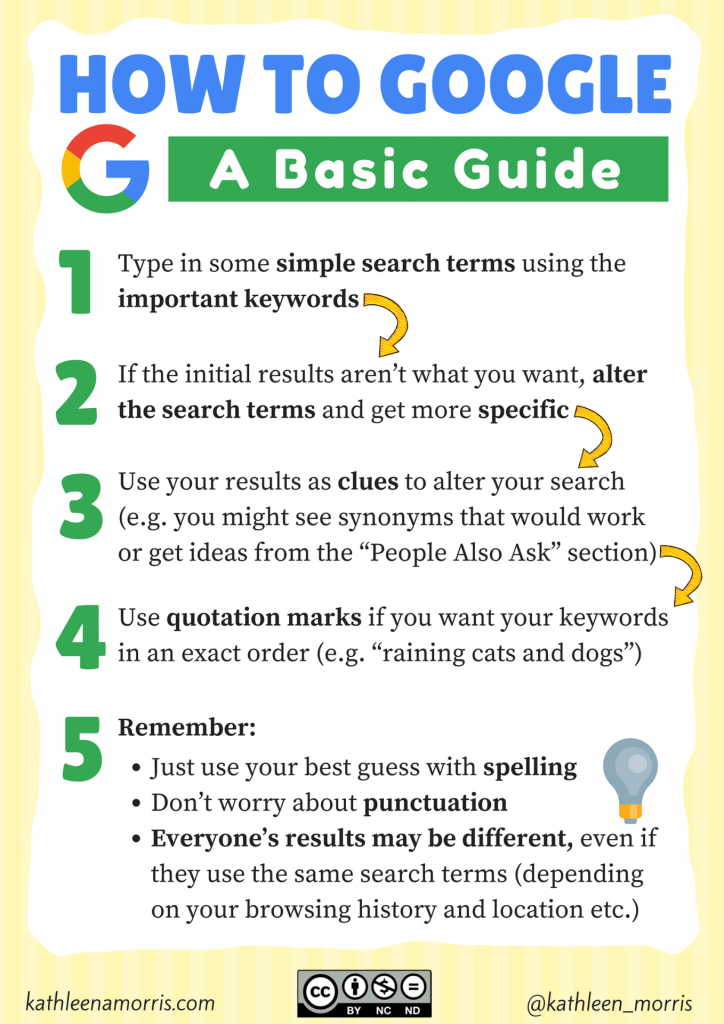
Links to learn more about Google searches
There’s lots you can learn about Google searches.
I highly recommend you take a look at 20 Instant Google Searches your Students Need to Know by Eric Curts to learn about “instant searches”.
Med Kharbach has also shared a simple visual with 12 search tips which would be really handy once students master the basics too.
The Google Search Education website is an amazing resource with lessons for beginner/intermediate/advanced plus slideshows and videos. It’s also home to the A Google A Day classroom challenges. The questions help older students learn about choosing keywords, deconstructing questions, and altering keywords.
Useful videos about Google searches
How search works.
This easy to understand video from Code.org to explains more about how search works.
How Does Google Know Everything About Me?
You might like to share this video with older students that explains how Google knows what you’re typing or thinking. Despite this algorithm, Google can’t necessarily know what you’re looking for if you’re not clear with your search terms.
What about when the answer comes up in Google instantly?
If you’ve been using Google for a while, you know they are tweaking the search formula so that more and more, an answer will show up within the Google search result itself. You won’t even need to click through to any websites.
For example, here I’ve asked when the Titanic sunk. I don’t need to go to any websites to find out. The answer is right there in front of me.
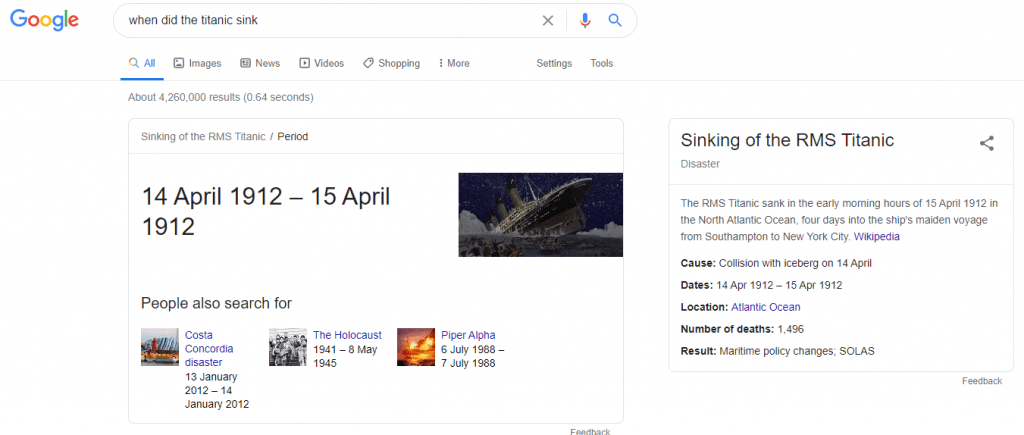
While instant searches and featured snippets are great and mean you can “get an answer” without leaving Google, students often don’t have the background knowledge to know if a result is incorrect or not. So double checking is always a good idea.
As students get older, they’ll be able to know when they can trust an answer and when double checking is needed.
Type in a subject like cats and you’ll be presented with information about the animals, sports teams, the musical along with a lot of advertising. There are a lot of topics where some background knowledge helps. And that can only be developed with time and age.
Entering quality search terms is one thing but knowing what to click on is another.
You might like to encourage students to look beyond the first few results. Let students know that Google’s PageRank algorithm is complex (as per the video above), and many websites use Search Engine Optimisation to improve the visibility of their pages in search results. That doesn’t necessarily mean they’re the most useful or relevant sites for you.
As pointed out in this article by Scientific American ,
Skilled searchers know that the ranking of results from a search engine is not a statement about objective truth, but about the best matching of the search query, term frequency, and the connectedness of web pages. Whether or not those results answer the searchers’ questions is still up for them to determine.
Point out the anatomy of a Google search result and ensure students know what all the components mean. This could be as part of a whole class discussion, or students could create their own annotations.
An important habit to get into is looking at the green URL and specifically the domain . Use some intuition to decide whether it seems reliable. Does the URL look like a well-known site? Is it a forum or opinion site? Is it an educational or government institution? Domains that include .gov or .edu might be more reliable sources.
When looking through possible results, you may want to teach students to open sites in new tabs, leaving their search results in a tab for easy access later (e.g. right-click on the title and click “Open link in new tab” or press Control/Command and click the link).
Searchers are often not skilled at identifying advertising within search results. A famous 2016 Stanford University study revealed that 82% of middle-schoolers couldn’t distinguish between an ad labelled “sponsored content” and a real news story.
Time spent identifying advertising within search results could help students become much more savvy searchers. Looking for the words “ad” and “sponsored” is a great place to start.
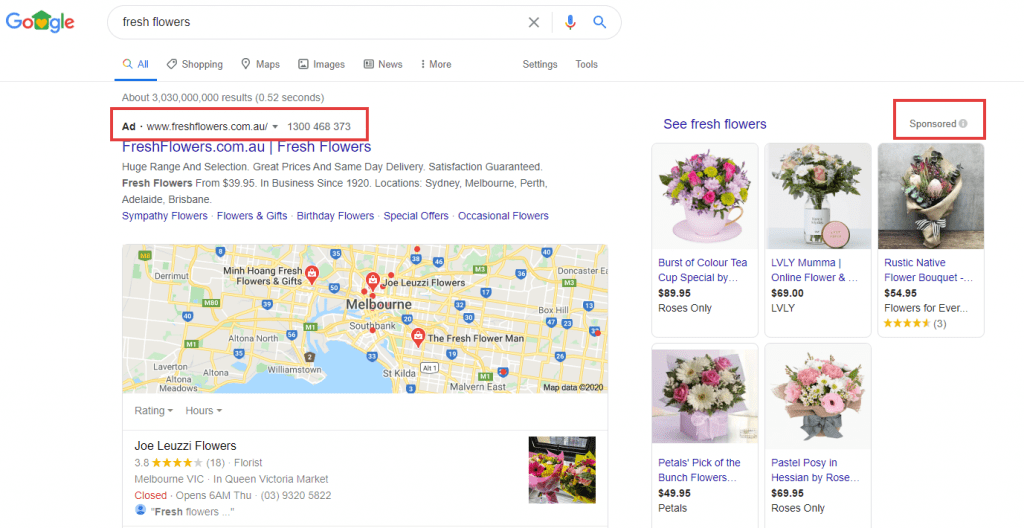
4) Evaluate
Once you click on a link and land on a site, how do you know if it offers the information you need?
Students need to know how to search for the specific information they’re after on a website. Teach students how to look for the search box on a webpage or use Control F (Command F on Mac) to bring up a search box that can scan the page.
Ensure students understand that you cannot believe everything you read . This might involve checking multiple sources. You might set up class guidelines that ask students to cross check their information on two or three different sites before assuming it’s accurate.
I’ve written a post all about teaching students how to evaluate websites . It includes this flowchart which you’re welcome to download and use in your classroom.
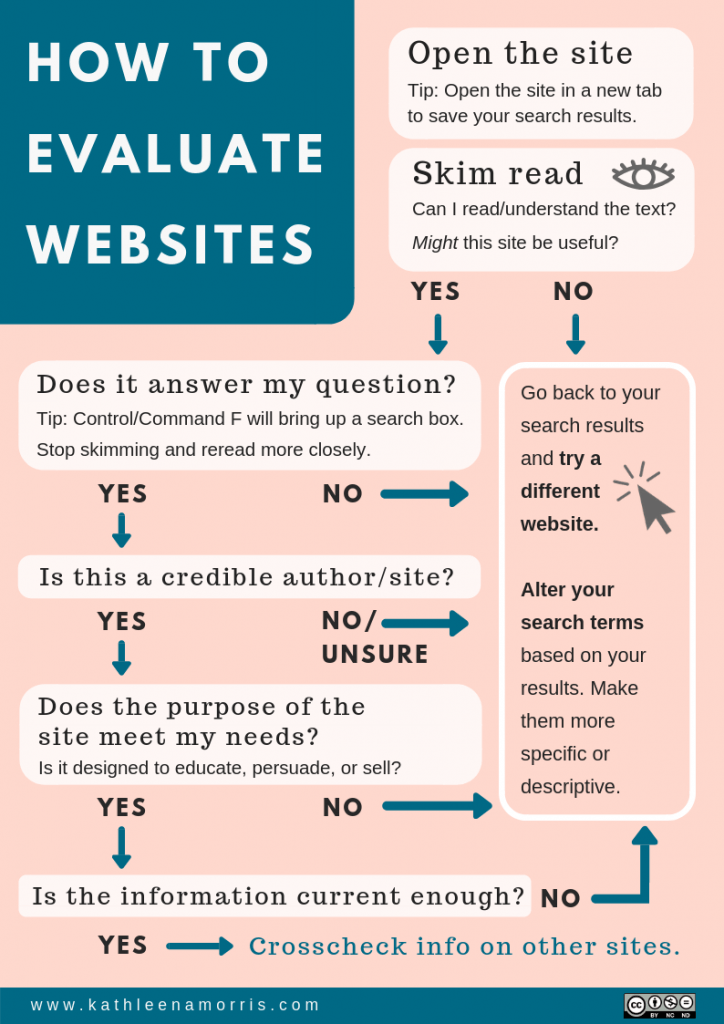
So your students navigated the obstacles of searching and finding information on quality websites. They’ve found what they need! Hooray.
Many students will instinctively want to copy and paste the information they find for their own work.
We need to inform students about plagiarism and copyright infringement while giving them the skills they need to avoid this.
- Students need to know that plagiarism is taking someone’s work and presenting it as your own. You could have a class discussion about the ethics and legalities of this.
- Students also need to be assured that they can use information from other sources and they should. They just need to say who wrote it, where it was from and so on.
All students can benefit from learning about plagiarism, copyright, how to write information in their own words, and how to acknowledge the source. However, the formality of this process will depend on your students’ age and your curriculum guidelines.
Give students lots of practice writing information in their own words. Younger students can benefit from simply putting stories or recounts in their own words. Older students could investigate the difference between paraphrasing and summarising .
There are some free online tools that summarise information for you. These aren’t perfect and aren’t a replacement from learning the skill but they could be handy for students to try out and evaluate. For example, students could try writing their own summary and then comparing it to a computer summary. I like the tool SMMRY as you can enter text or a URL of an article. Eric Curts shares a list of 7 summary tools in this blog post .
Students also need a lot of practice using quotation marks and citing sources .
The internet can offer a confusing web of information at times. Students need to be shown how to look for the primary source of information. For example, if they find information on Wikipedia, they need to cite from the bibliography at the bottom of the Wikipedia article, not Wikipedia itself.
There are many ways you can teach citation:
- I like Kathy Schrock’s PDF document which demonstrates how you can progressively teach citation from grades 1 to 6 (and beyond). It gives some clear examples that you could adapt for your own classroom use.
Staying organised!
You might also like to set up a system for students to organise their information while they’re searching. There are many apps and online tools to curate, annotate, and bookmark information, however, you could just set up a simple system like a Google Doc or Spreadsheet.
The format and function is simple and clear. This means students don’t have to put much thought into using and designing their collections. Instead, they can focus on the important curation process.
Bring These Ideas to Life With Mini-Lessons!
We know how important it is for students to have solid research skills. But how can you fit teaching research skills into a jam-packed curriculum? The answer may be … mini-lessons !
Whether you teach primary or secondary students, I’ve compiled 50 ideas for mini-lessons.
Try one a day or one a week and by the end of the school year, you might just be amazed at how independent your students are becoming with researching.
Become an Internet Search Master with This Google Slides Presentation
In early 2019, I was contacted by Noah King who is a teacher in Northern California.
Noah was teaching his students about my 5 step process outlined in this post and put together a Google Slides Presentation with elaboration and examples.
You’re welcome to use and adapt the Google Slides Presentation yourself. Find out exactly how to do this in this post.
The Presentation was designed for students around 10-11 years old but I think it could easily be adapted for different age groups.
Recap: How To Do Online Research
Despite many students being confident users of technology, they need to be taught how to find information online that’s relevant, factual, student-friendly, and safe.
Keep these six steps in mind whenever you need to do some online research:
- Clarify : What information are you looking for? Consider keywords, questions, synonyms, alternative phrases etc.
- Search : What are the best words you can type into the search engine to get the highest quality results?
- Delve : What search results should you click on and explore further?
- Evaluate : Once you click on a link and land on a site, how do you know if it offers the information you need?
- Cite : How can you write information in your own words (paraphrase or summarise), use direct quotes, and cite sources?
- Staying organised : How can you keep the valuable information you find online organised as you go through the research process?
Don’t forget to ask for help!
Lastly, remember to get help when you need it. If you’re lucky enough to have a teacher-librarian at your school, use them! They’re a wonderful resource.
If not, consult with other staff members, librarians at your local library, or members of your professional learning network. There are lots of people out there who are willing and able to help with research. You just need to ask!
Being able to research effectively is an essential skill for everyone . It’s only becoming more important as our world becomes increasingly information-saturated. Therefore, it’s definitely worth investing some classroom time in this topic.
Developing research skills doesn’t necessarily require a large chunk of time either. Integration is key and remember to fit in your mini-lessons . Model your own searches explicitly and talk out loud as you look things up.
When you’re modelling your research, go to some weak or fake websites and ask students to justify whether they think the site would be useful and reliable. Eric Curts has an excellent article where he shares four fake sites to help teach students about website evaluation. This would be a great place to start!
Introduce students to librarians ; they are a wonderful resource and often underutilised. It pays for students to know how they can collaborate with librarians for personalised help.
Finally, consider investing a little time in brushing up on research skills yourself . Everyone thinks they can “google” but many don’t realise they could do it even better (myself included!).
You Might Also Enjoy
Teaching Digital Citizenship: 10 Internet Safety Tips for Students
Free Images, Copyright, And Creative Commons: A Guide For Teachers And Students
8 Ways Teachers And Schools Can Communicate With Parents
How To Evaluate Websites: A Guide For Teachers And Students

14 Replies to “How to Teach Online Research Skills to Students in 5 Steps (Free Posters)”
Kathleen, I like your point about opening up sites in new tabs. You might be interested in Mike Caulfield’s ‘four moves’ .
What a fabulous resource, Aaron. Thanks so much for sharing. This is definitely one that others should check out too. Even if teachers don’t use it with students (or are teaching young students), it could be a great source of learning for educators too.
This is great information and I found the safe search sites you provided a benefit for my children. I searched for other safe search sites and you may want to know about them. http://www.kids-search.com and http://www.safesearch.tips .
Hi Alice, great finds! Thanks so much for sharing. I like the simple interface. It’s probably a good thing there are ads at the top of the listing too. It’s an important skill for students to learn how to distinguish these. 🙂
Great website! Really useful info 🙂
I really appreciate this blog post! Teaching digital literacy can be a struggle. This topic is great for teachers, like me, who need guidance in effectively scaffolding for scholars who to use the internet to gain information.
So glad to hear it was helpful, Shasta! Good luck teaching digital literacy!
Why teachers stopped investing in themselves! Thanks a lot for the article, but this is the question I’m asking myself after all teachers referring to google as if it has everything you need ! Why it has to come from you and not the whole education system! Why it’s an option? As you said smaller children don’t need search engine in the first place! I totally agree, and I’m soo disappointed how schooling system is careless toward digital harms , the very least it’s waste of the time of my child and the most being exposed to all rubbish on the websites. I’m really disappointed that most teachers are not thinking taking care of their reputation when it comes to digital learning. Ok using you tube at school as material it’s ok , but why can’t you pay little extra to avoid adverts while teaching your children! Saving paper created mountains of electronic-toxic waste all over the world! What a degradation of education.
Thanks for sharing your thoughts, Shohida. I disagree that all schooling systems are careless towards ‘digital harms’, however, I do feel like more digital citizenship education is always important!
Hi Kathleen, I love your How to Evaluate Websites Flow Chart! I was wondering if I could have permission to have it translated into Spanish. I would like to add it to a Digital Research Toolkit that I have created for students.
Thank you! Kristen
Hi Kristen, You’re welcome to translate it! Please just leave the original attribution to my site on there. 🙂 Thanks so much for asking. I really hope it’s useful to your students! Kathleen
[…] matter how old your child is, there are many ways for them to do research into their question. For very young children, you’ll need to do the online research work. Take your time with […]
[…] digs deep into how teachers can guide students through responsible research practices on her blog (2019). She suggests a 5 step model for elementary students on how to do online […]
Writing lesson plans on the fly outside of my usual knowledge base (COVID taken down so many teachers!) and this info is precisely what I needed! Thanks!!!
Comments are closed.
- Rating Count
- Price (Ascending)
- Price (Descending)
- Most Recent
Middle school research projects
Resource type.
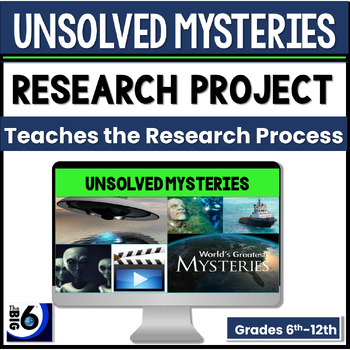
Unsolved Mysteries Research Project Middle School ELA | Teaching Research Skills

MUSICIAN BIOGRAPHY Project a Middle School General Music Research Project
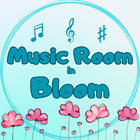
Animal Adaptations Research Project for Middle School

Holidays Around the World Research Project , Upper Elementary & Middle School

Leadership Research Project Middle High School ASB Student Council AVID Google

Introduction to Design: Middle , High School Art & Design Career Research Project

Banned Books Week Banners - Research Project - Middle & High School ELA

STEM Career Exploration and Research Project {Future Guidance Middle School }

MUSIC RESEARCH PROJECT BUNDLE for Middle School General Music
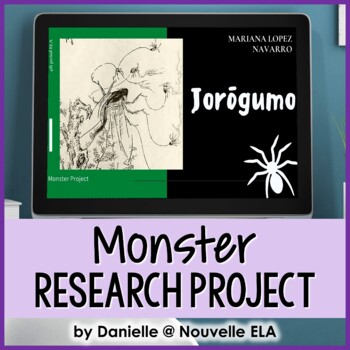
Middle School Research Project - Monsters Through Time - (Paper + Digital)
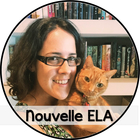
Famous Scientists Research Project - Engineers for Middle School

INTERVIEW with a MUSICIAN RESEARCH PROJECT for Middle School General Music

Career Research Project Avid Middle Junior High School Google Slides Editable!
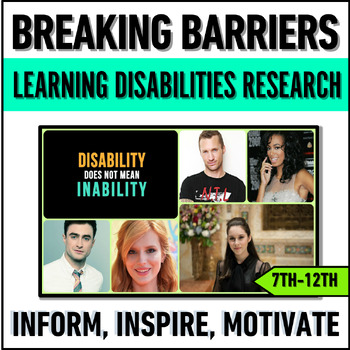
High School and Middle School Learning Disabilities Research Project

End of Year ELA Project - Activities and Research for Middle School
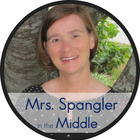
Middle School Research Project - Inventions and Innovations STEM Research
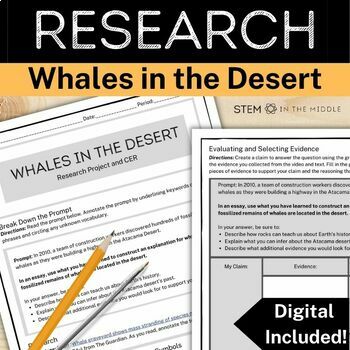
Fossil Record Research Project and CER for Middle School Life Science - MS-LS4-1

Middle School Research Project - Animals - Printable and Digital

Fun Research Project for Middle School , High School , Teens

MUSICAL INSTRUMENT RESEARCH PROJECT for Middle School General Music
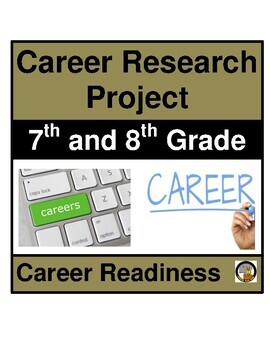
Career Research Project - Middle School -7th & 8th Grade l Distance Learning

WORLD MUSIC RESEARCH PROJECT for Middle School General Music

Middle School Research Project & Skills Bundle - PDF & Digital

Genius Hour Project Workbook for Middle School Research | Inquiry Based Learning

- We're hiring
- Help & FAQ
- Privacy policy
- Student privacy
- Terms of service
- Tell us what you think

40 Best Science Experiments & Projects for Middle School
Welcome to our curated collection of top science fair projects and experiments, perfectly tailored for the inquisitive middle schoolers. Our collection offers hands-on activities that will captivate young minds and ignite their passion for learning.
Science fairs during middle school years are less about competition and more about fostering a love for exploration, experimentation, and the thrill of the “Eureka!” moment. That’s why we have ensured that all the experiments on our list are fun and easy.
Through hands-on experimentation, students can gain a deeper understanding of scientific concepts, build confidence in their abilities, and cultivate a lifelong passion for learning.
1. Crushed Can
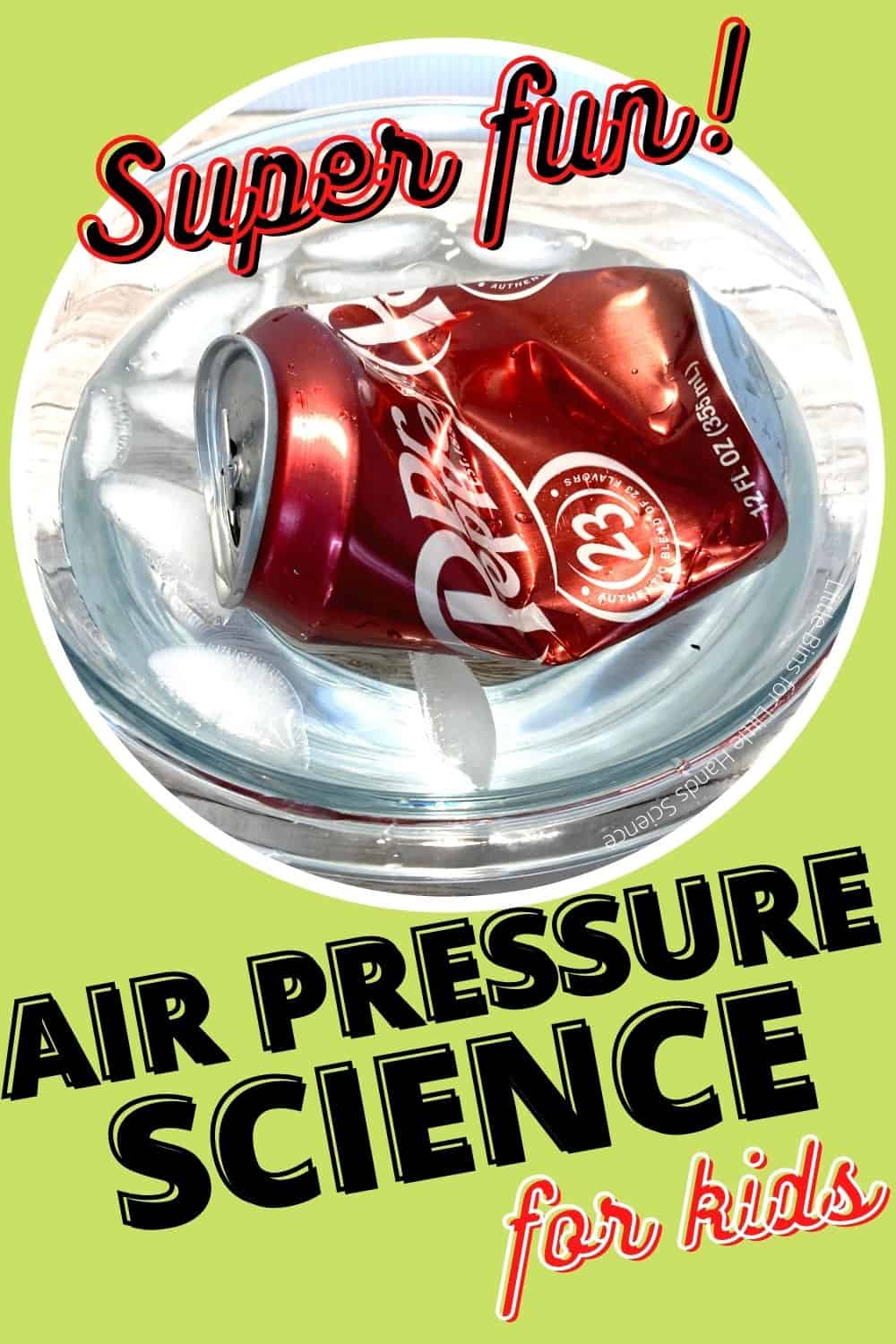
Students will be amazed as they witness an ordinary can being transformed before their very eyes. By simply heating it and then rapidly cooling it, the can will be crushed as if by magic!
Learn more: Little Bins Little Hands
2. Water Bottle Rockets
In this engaging activity, students will have the opportunity to design, build, and launch their very own water-propelled rockets.
By adjusting variables like water level and air pressure, they’ll witness firsthand how these factors impact the rocket’s flight path and distance.
3. Cabbage Ph Indicator
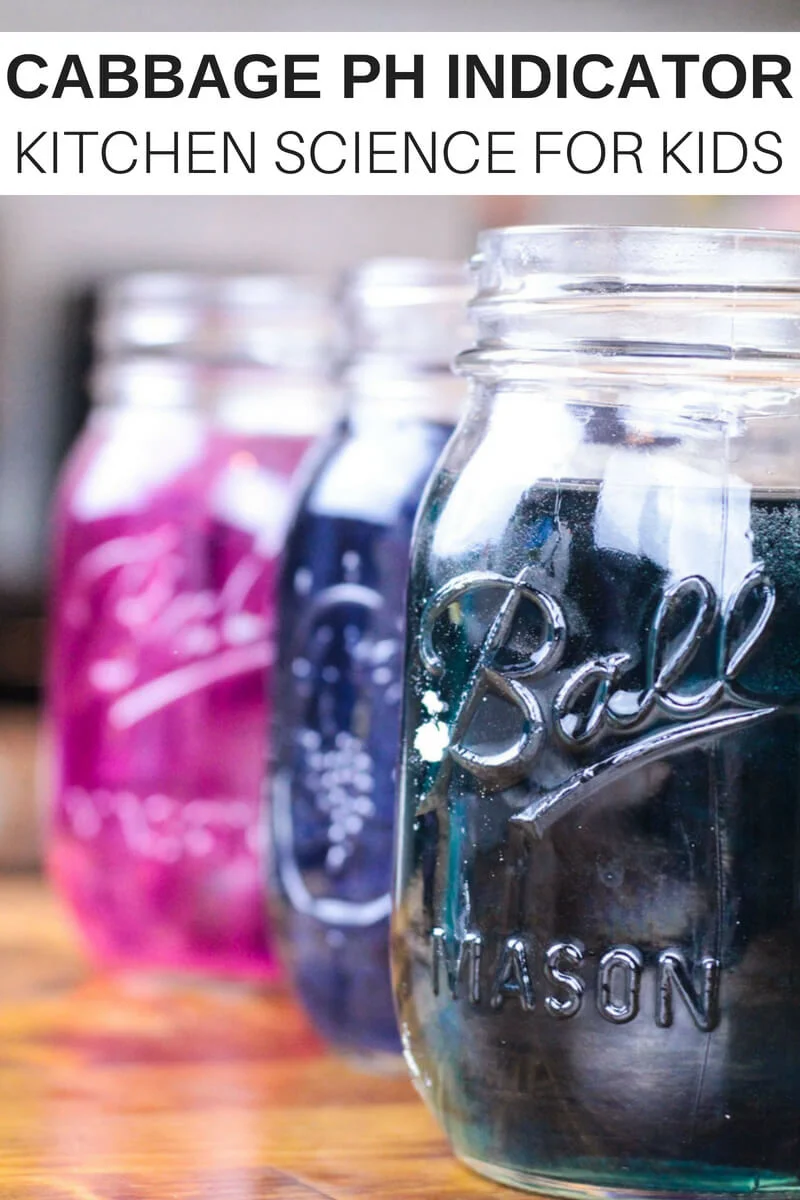
In this middle school science project, students will use red cabbage as a natural pH indicator to test the acidity or alkalinity of various household substances.
Learn more: Cabbage PH Indicator
4. Build a Solar Oven
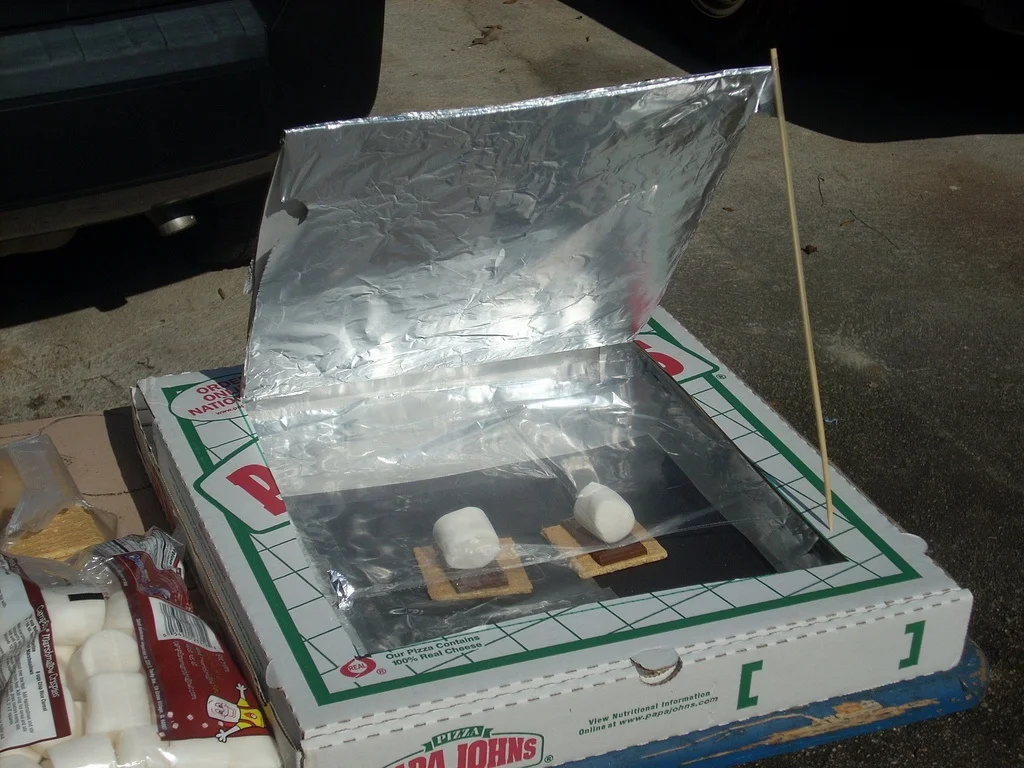
By building these ingenious devices using simple materials, they will discover the incredible potential of renewable energy and its practical applications in everyday life.
Learn more: Solar Oven
5. Build a Helping Hand
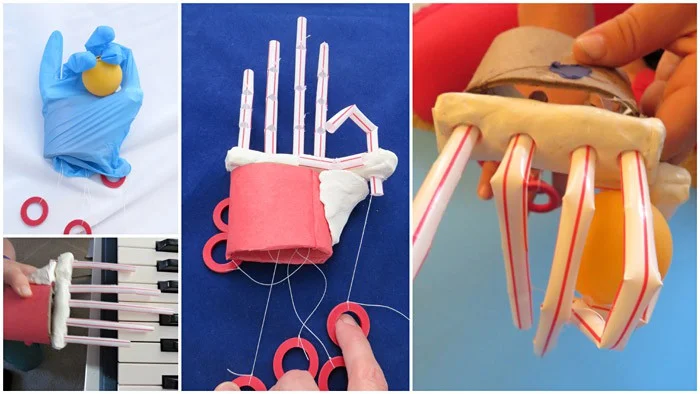
In this captivating middle school science experiment, students will have the opportunity to construct their very own “Helping Hand” device.
Learn more: Science Buddies
6. DIY Lung Model
This captivating middle school project offers an exciting hands-on opportunity to explore the inner workings of our respiratory system.
By creating their own lung models using simple household materials, students will gain a deeper understanding of how our lungs function and the vital role they play in our bodies.
7. Flying Tea Bag

By harnessing the power of convection currents, students will learn about the fascinating relationship between heat and air pressure.
Learn more: Flying Tea Bag
8. Egg Float Experiment
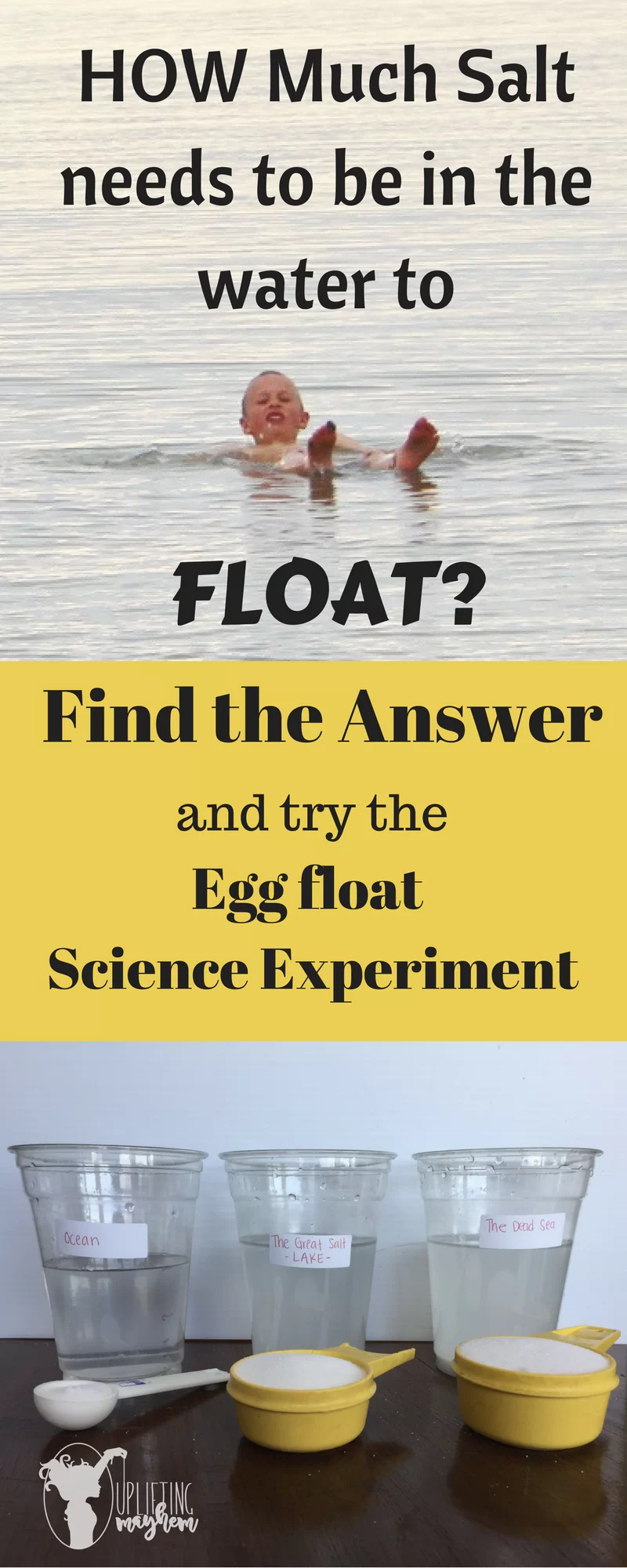
In this captivating middle school science project, students will unlock the mysteries of density and water displacement while discovering the fascinating properties of eggs.
Learn more: Egg Float Experiment
9. Popsicle Stick Chain Reaction
This captivating middle school project is all about the magic of potential energy and kinetic energy. By carefully setting up a series of interlinked popsicle sticks, students will create a mesmerizing chain reaction that ripples through the entire structure.
10. How to See Sound
As they watch sound come to life through colorful visualizations, students will develop a deeper appreciation for the profound impact of sound in our daily lives.
11. Orange Peel Plate Tectonics
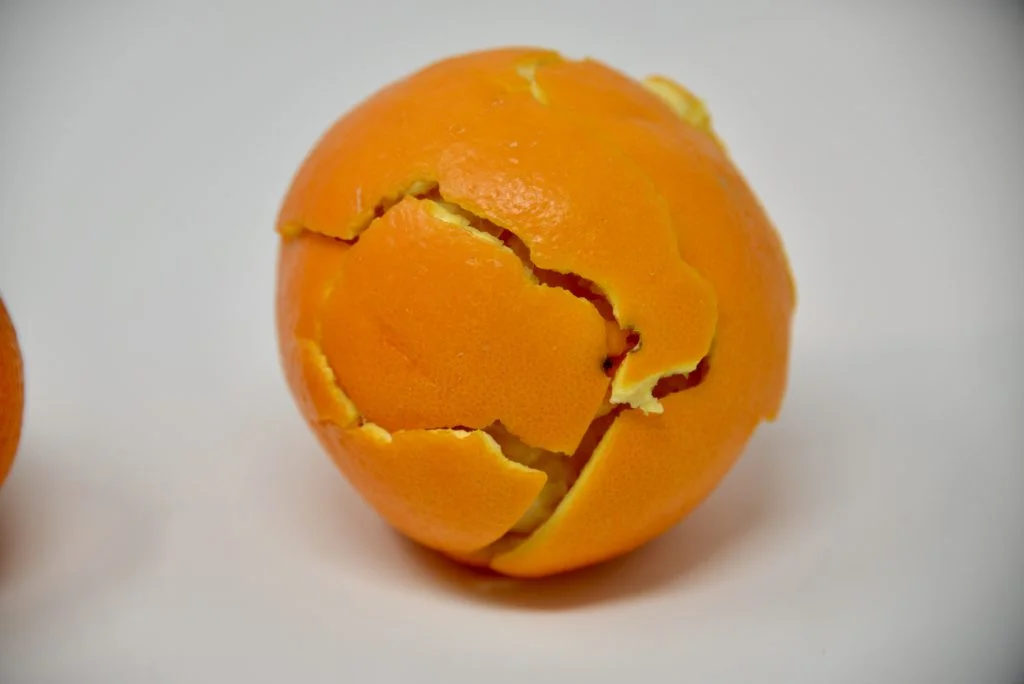
In this captivating middle school project, students will learn about the dynamic of Earth’s crust and explore the powerful forces that shape our planet’s surface.
12. Heart Pump
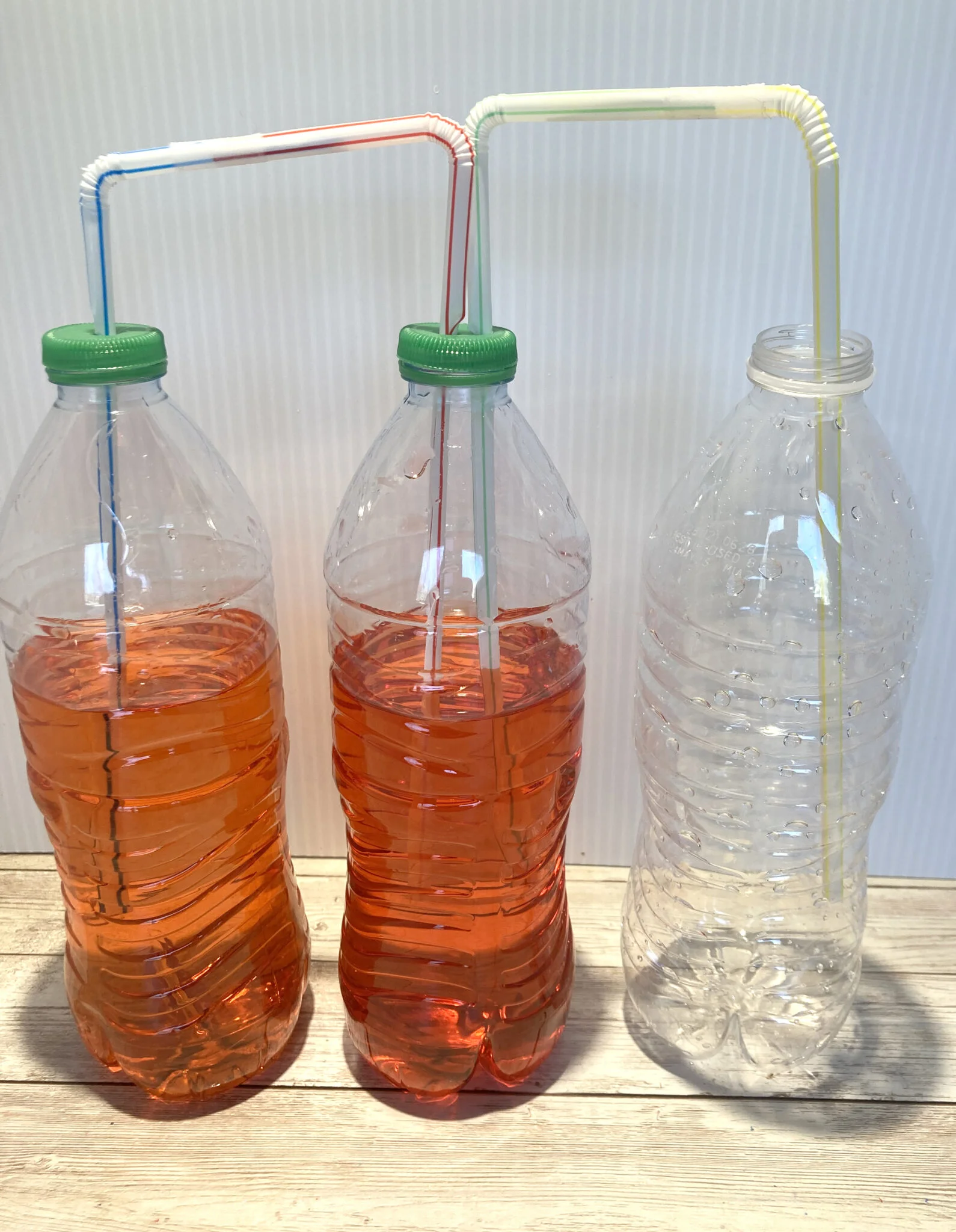
In this captivating middle school project, students will embark on a hands-on exploration of the human circulatory system and discover the marvels of the heart’s pumping mechanism.
Learn more: Heart Pump Model
13. Invisible Ink

By concocting their own invisible ink, students will discover the science behind chemical reactions and learn how certain substances react to reveal hidden text when exposed to heat, light, or other catalysts.
Learn more: Invisible Ink
14. DIY Grow Box
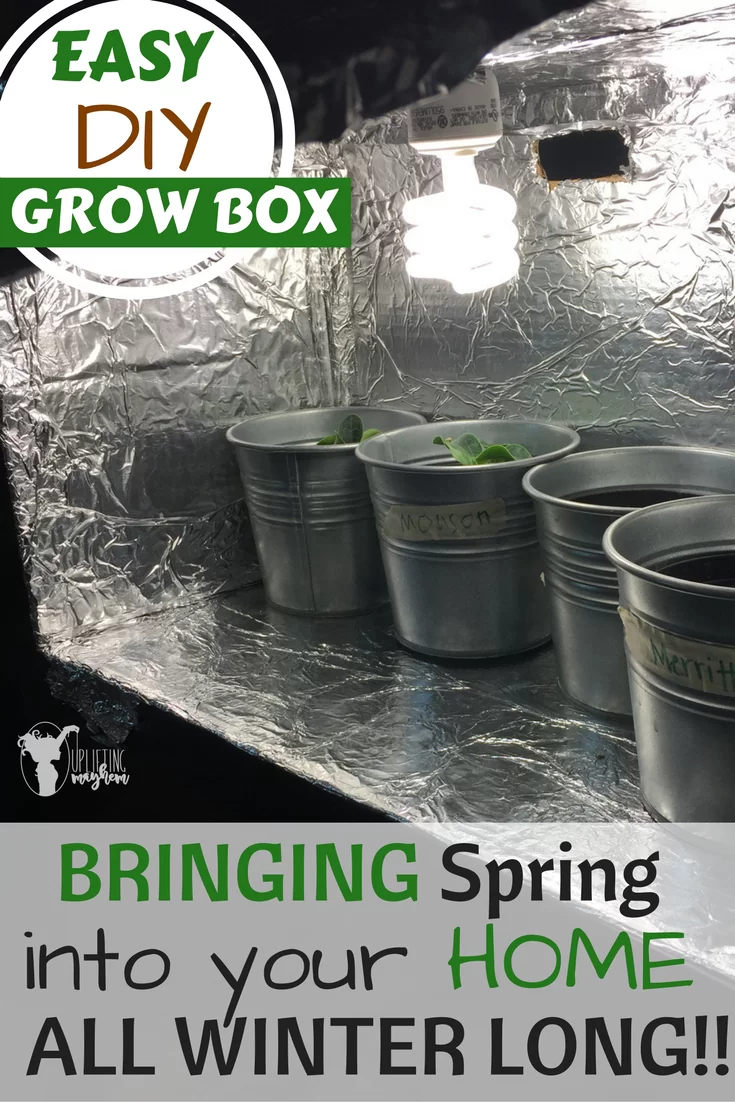
In this captivating middle school project, students will learn the wonders of plant growth and the art of nurturing a thriving garden.
By constructing their own affordable and innovative grow boxes using simple materials, they’ll have the perfect environment to observe the magical transformation from seeds to flourishing plants.
Learn more: Easy DIY Grow Box
15. Creative Ferris Wheel
By encouraging creativity and experimentation, this engaging experiment not only promises an exciting learning experience but also fosters teamwork and critical thinking
16. Alka Seltzer Rockets
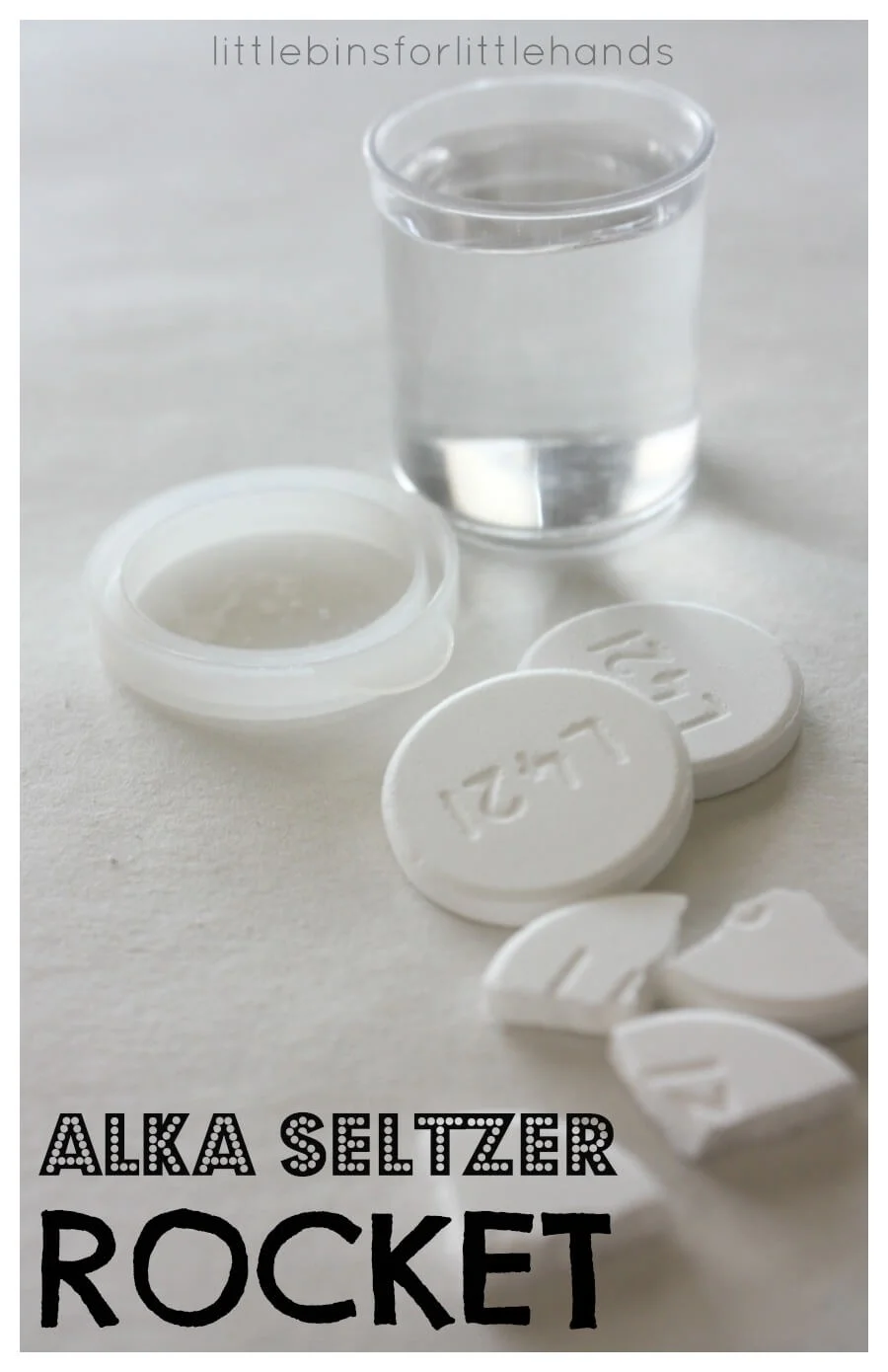
Prepare for a high-flying adventure with the Alka Seltzer Rockets science experiment! This exciting and explosive activity is a perfect choice for middle school students eager to explore the wonders of chemical reactions and rocketry.
17. Why do Apples Turn Brown?
Through hands-on exploration, middle school students will discover the role of enzymes and oxygen in this intriguing transformation.
18. Water Bending Experiment
By understanding the principles of surface tension and cohesion, you’ll be able to create mesmerizing effects, seemingly bending water with just a piece of static material.
19. Water Clock
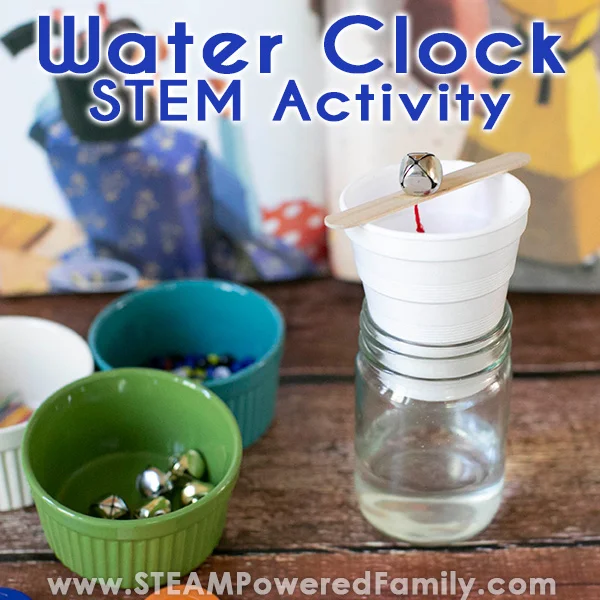
Experience the magic of timekeeping in its most ancient form with the fascinating Water Clock project! In this hands-on experiment, students will learn about history, physics, and engineering as they build their own timekeeping device using just water and a few simple materials.
Learn more: Steam Powered Family
20. Paper Ball Run Challenge
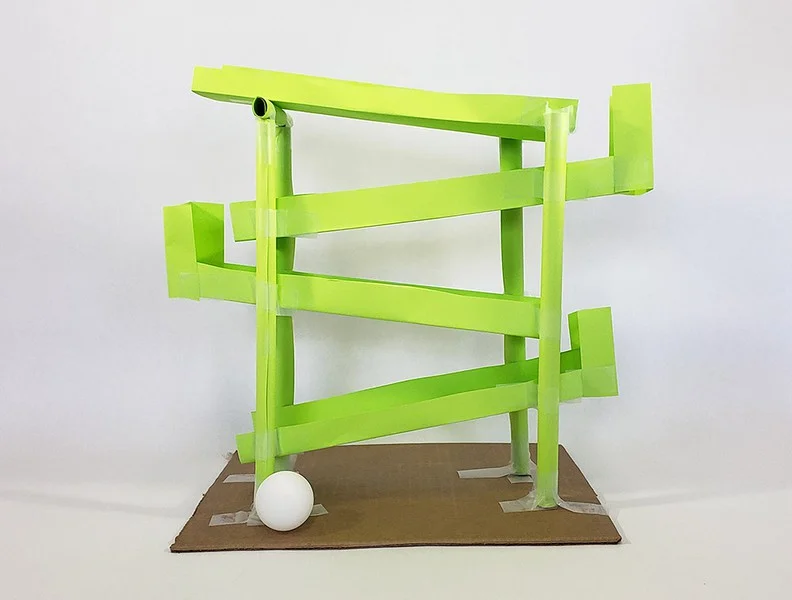
Get ready for a thrilling and creative adventure with the Paper Ball Run Challenge! In this captivating science experiment, you’ll explore the principles of motion, gravity, and engineering as you design and build your very own paper ball run.
21. Flood Barriers
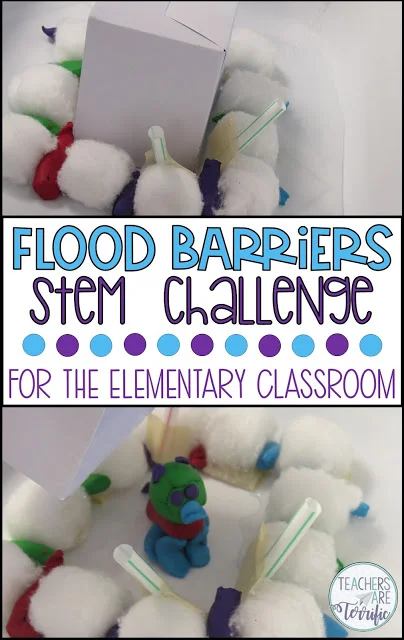
As you construct and evaluate your barriers, you’ll gain a deeper understanding of how floods occur and the importance of finding effective solutions.
Learn more: Teachers are terrific
22. Exploring the Law of Inertia Experiment Using a Fidget Spinner
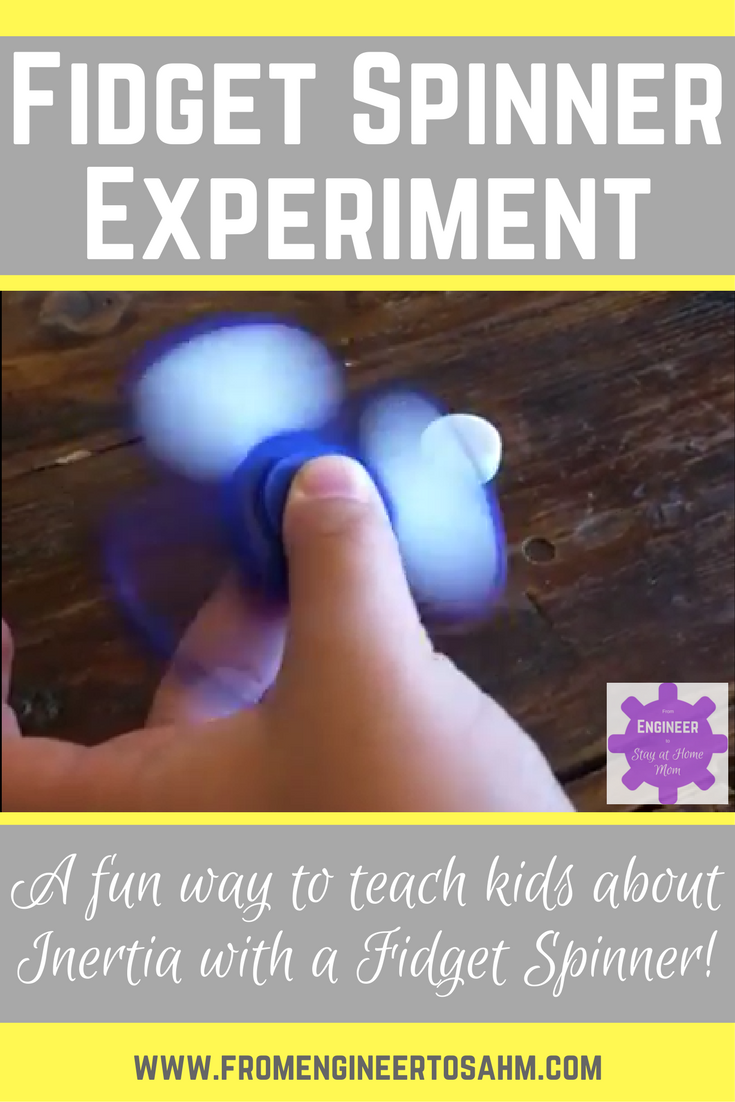
This engaging experiment will help you unravel Sir Isaac Newton’s Law of Inertia in a fun and hands-on way. By using a fidget spinner, you’ll explore how the spinning motion persists due to inertia and how different factors can influence its behavior.
23. Air Pressure Impact on Ping Pong Balls
By investigating the effects of air pressure on these lightweight spheres, you’ll uncover the secrets of flight, aerodynamics, and atmospheric pressure.
24. Rolling Uphill
In this experiment, you’ll witness the baffling phenomenon of a ball seemingly defying gravity by rolling uphill on a specially designed track.
25. Pick Up Ice with a String
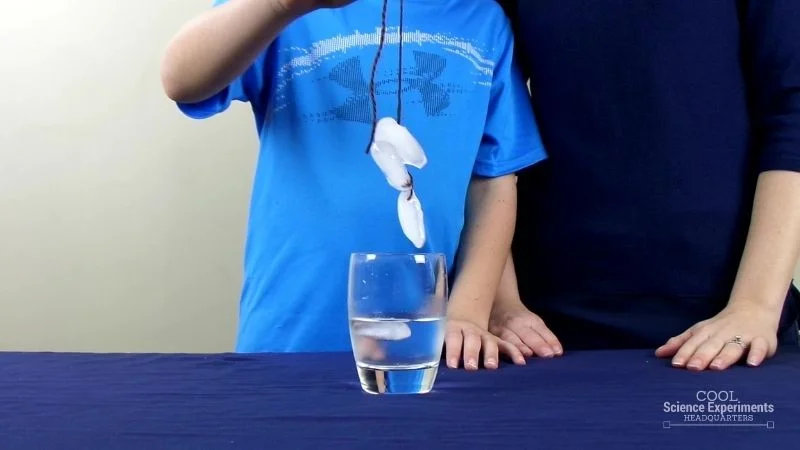
Have you ever wondered if it’s possible to lift ice using just a simple string? In this fascinating experiment, you’ll explore the principles of heat transfer and surface tension as you attempt to defy gravity and lift ice cubes with nothing but a string.
Learn more: Pick Up Ice with a String
26. Keep a Paper Towel Dry Under Water
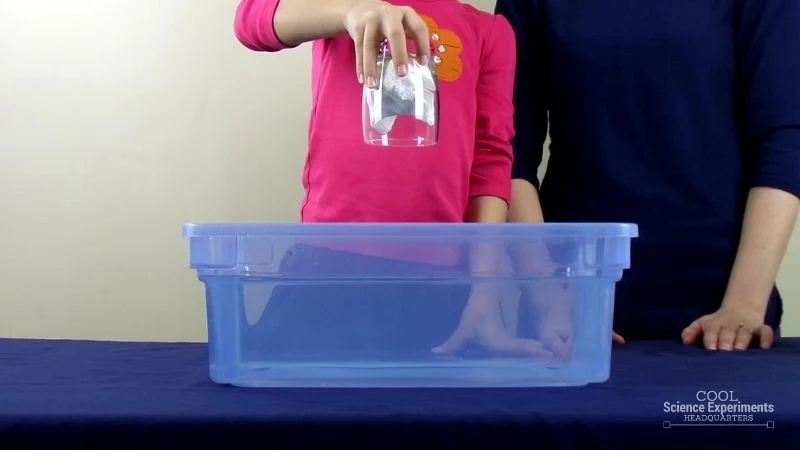
This captivating experiment will unveil the wonders of surface tension and hydrophobicity, as you attempt to create a barrier that defies the conventional wisdom of water soaking through paper.
Learn more: Keep a Paper Towel Dry Under Water
27. Upside Down Glass of Water
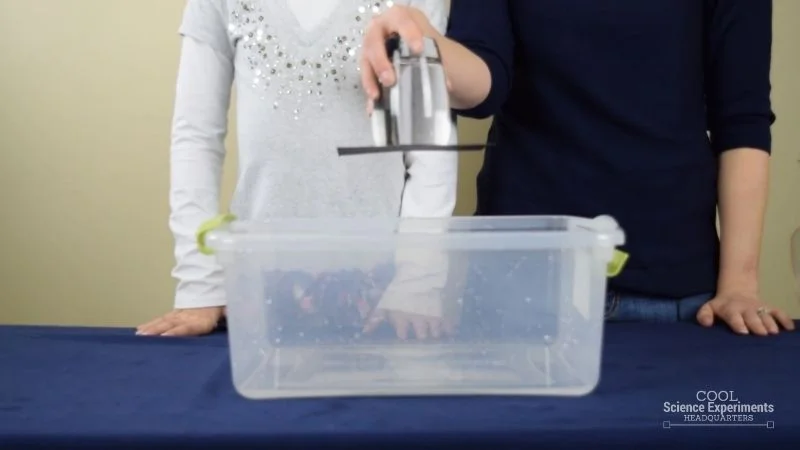
This mesmerizing experiment will unravel the fascinating concept of air pressure and its influence on liquids. As you turn a glass of water upside down and observe the water’s defiance of falling out, you’ll gain insight into the powerful role of air pressure in our everyday lives.
Learn more: Upside Down Glass of Water
28. Make a Wine Glass Sing
Have you ever wondered how to turn a simple glass of wine into a musical instrument? This captivating experiment will introduce you to the fascinating concept of acoustics and how sound waves interact with liquid-filled glasses.
29. Crush a Plastic Bottle
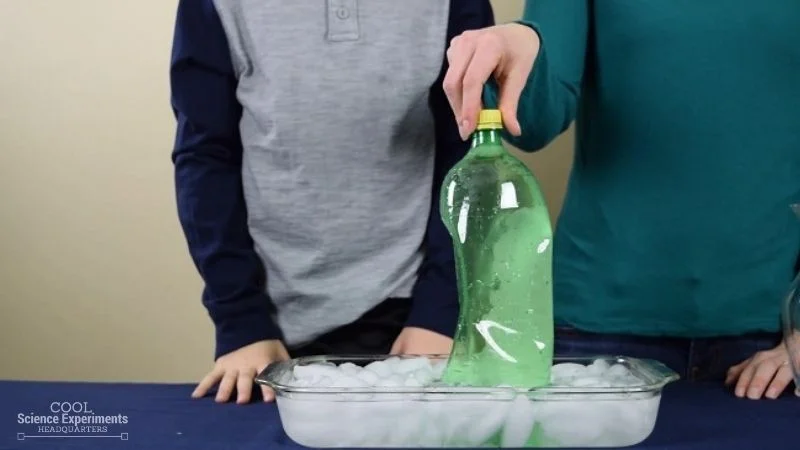
Are you curious about the forces at play when we compress a seemingly indestructible plastic bottle? This captivating experiment will unravel the science behind how pressure and air interact to create this astonishing effect.
Learn more: Crush a Plastic Bottle
30. Ruler Changes Size
Get ready to witness an optical illusion that will challenge your perception of reality. In this captivating experiment, you’ll explore the fascinating phenomenon of light refraction and how it can make objects appear different than they really are.
31. Egg in a Bottle
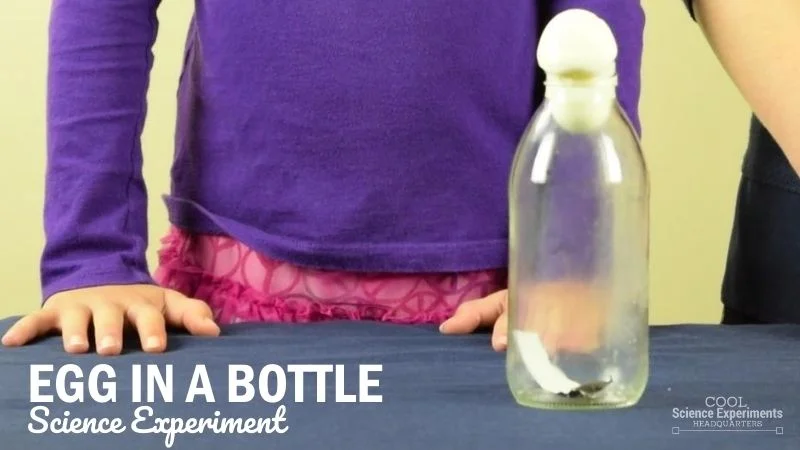
Have you ever wondered how to get an egg into a bottle without breaking it? This mesmerizing experiment will introduce you to the concept of air pressure and how it can be harnessed to achieve the impossible.
Learn more: Egg in a Bottle
32. Water Doesn’t Leak Out Science Experiment
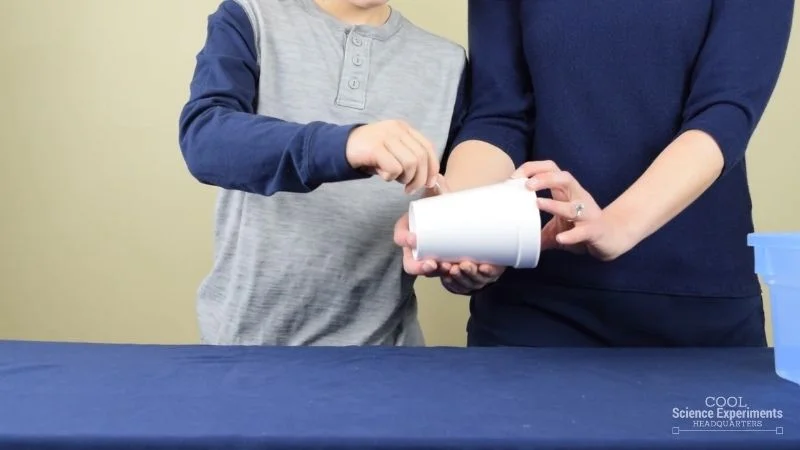
This hands-on activity not only sparks curiosity and amazement but also teaches you about the properties of gases and the laws of physics.
So, get ready to be astounded and dive into the magic of science with the “Water Doesn’t Leak Out” experiment – an entertaining and enlightening adventure that will leave you thirsting for more knowledge!
Learn more: Water Science Experiment
33. Pick Up a Ball with a Jar
This captivating experiment will introduce you to the fascinating concept of air pressure and how it can create a powerful force that defies gravity.
34. Glowing Water Science
This captivating experiment will introduce you to the fascinating properties of fluorescent materials and how they interact with light.
35. Fizzy Cloud Dough
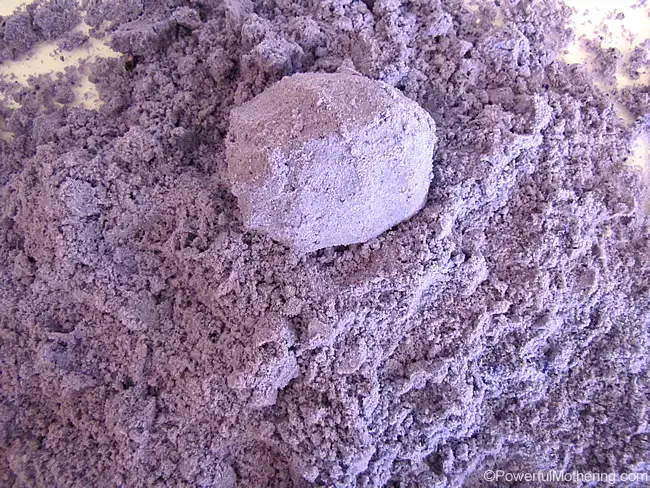
The fizzing reaction not only adds an element of excitement but also provides a great opportunity to explore the science of chemical reactions and the release of carbon dioxide.
Learn more: Fizzy Cloud Dough
36. Underwater Magic Sand
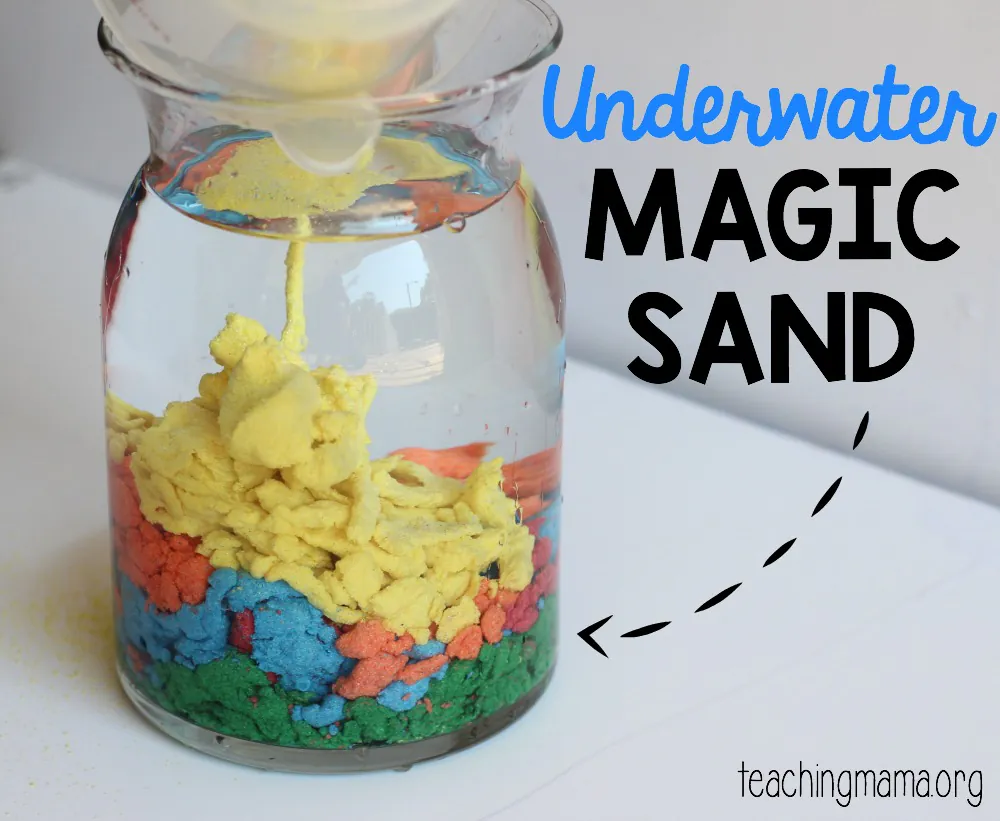
Get ready to witness the marvels of hydrophobic science and explore the secrets of this captivating underwater magic sand experiment.
Learn more: Teaching Mama Org
37. Make Bouncy Polymer Balls
This captivating experiment will take you on an exciting journey into the realm of polymers and chemical reactions.
38. Use a Crayon as a Candle

This hands-on activity not only sparks curiosity and excitement but also offers a safe and educational way to explore the science of combustion and the flammability of materials.
Learn more: Crayon Candle
39. Flame Test Colors

Not only does it spark curiosity and wonder but also deepens your understanding of the emission spectra of elements.
So, get ready to illuminate your scientific knowledge with the “Flame Test Colors” experiment – an educational and visually stunning adventure that will leave you dazzled and eager to discover more about the fascinating world of chemistry!
Learn more: Thought Co
40. Grow A Bean Plant
By planting a simple bean seed and providing it with water, sunlight, and care, you’ll witness the fascinating process of germination and watch as your bean seedling sprouts and grows.
Similar Posts:
- 68 Best Chemistry Experiments: Learn About Chemical Reactions
- 37 Water Science Experiments: Fun & Easy
- Top 100 Fine Motor Skills Activities for Toddlers and Preschoolers
Leave a Comment Cancel reply
Save my name and email in this browser for the next time I comment.
16 Ideas for Student Projects Using Google Docs, Slides, and Forms
July 31, 2016
Can't find what you are looking for? Contact Us
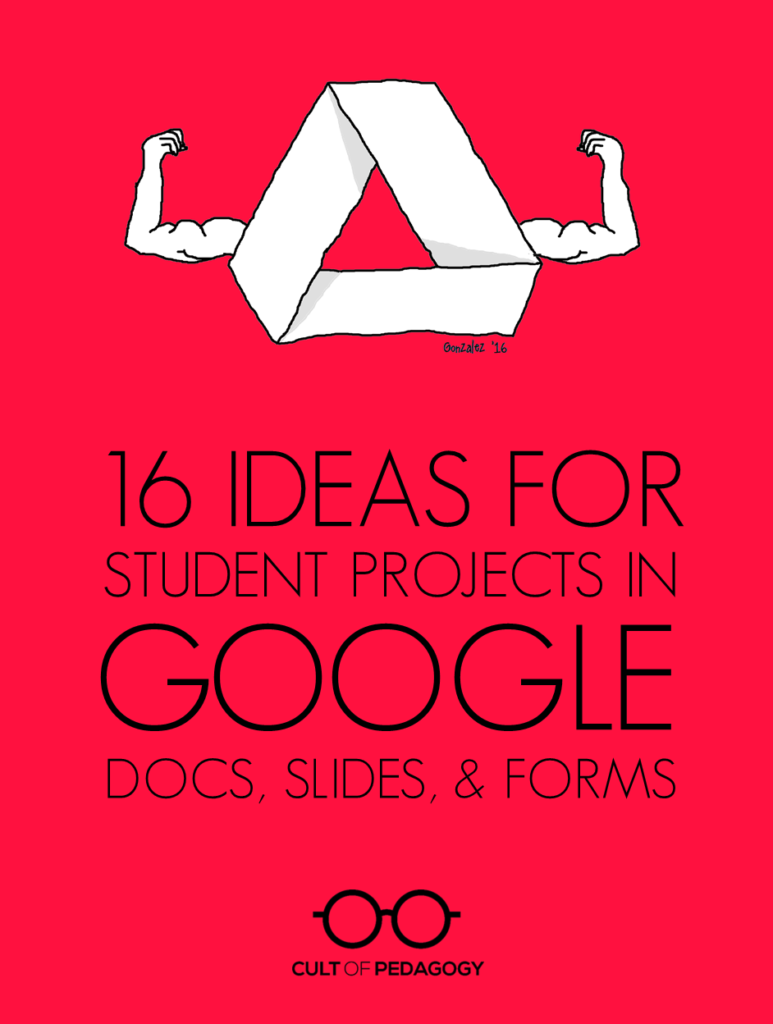
As you probably know, Google Drive is far more than a place to store files online. It also includes a suite of versatile creation tools, many of which perform the same functions as the ones we use in other spaces. These include Google Docs, a word processing program that behaves similarly to Microsoft Word, Google Slides, a presentation program similar to PowerPoint, and Google Forms, a survey-creation tool similar to Survey Monkey. Although Drive also includes other tools, these three are particularly useful for creating rigorous, academically robust projects. If your school uses Google Classroom or at least gives students access to Google Drive, your students are probably already using these tools to write papers or create slideshow presentations, but there are other projects they could be doing that you may not have thought of.
Below I have listed 16 great ideas for projects using Google Docs, Slides, and Forms.
Annotated Bibliography By the time a student reaches the later years of high school, and certainly by the time she’s gotten to college, it’s likely that she’ll be required to write an annotated bibliography, a list of resources that not only includes the bibliographical information of each source, but also a short paragraph summarizing the resource and reflecting on its usefulness for a given project. Usually an annotated bibliography is required as a part of a larger research paper, but it could stand alone as an assignment that tasks students with seeking out and evaluating sources just for the practice of doing so. And the research tools in Google Docs allow students to locate, read, and cite their sources all in one place. To learn more, see this guide from Cornell University Library on How to Prepare an Annotated Bibliography .
Book Review Instead of a book report, have students write a book review instead. This is certainly not a new idea, but publishing the work electronically allows students to enhance the final product with the book’s cover image, a link to the book’s page on Amazon, and even links to other titles the author has written or articles on related topics. For models and inspiration, elementary and middle school students can read student-written reviews on sites like Spaghetti Book Club . Older or advanced students might work toward more sophisticated, nuanced review styles like book reviews written on Oprah.com .
Collaborative Story Because Google Docs is cloud-based, multiple people can work on a Doc at the same time. So students can work together on a story, a script for a play, or any other kind of group writing project. They can use the comments feature to give each other feedback and make decisions together. And because students can work from any location with an Internet connection, collaboration isn’t restricted to school hours; each group member can work on the project from any location whenever they have time.
Media-Rich Research Paper Any kind of research paper can be given a big boost when done in a Google Doc, because students can insert images, drawings, and links to other relevant resources, like articles and videos. Using the research tools built into Docs, students can research their topics and include in-text citations with footnotes.
Super Simple Blog If you don’t want to mess with actual blogging platforms, but want students to be able to experience writing blog posts that contain images and hyperlinks to other websites, this could be accomplished easily in a single running Google Doc.
Table Being able to organize information visually is an important skill, and students who understand how to build a table in Google Docs will have a skill for presenting all kinds of information in the future. They can be used as a compare and contrast exercise, to display data from an experiment, or even put together a schedule. Yes, you could do these things yourself, print them, and have students fill them out, but why not have students practice creating the tables themselves?
Choose-Your-Own-Adventure Story Because slides can contain hyperlinks to other slides, students could build a whole story where the reader chooses different options at key points in the story, leading them down completely different paths. The reader would consume the content as a slideshow, clicking on the links themselves as they go through. This could be a pretty massive undertaking, but we all know students who would be totally up for the challenge.
E-book These could take a variety of forms: mini-textbooks, children’s books, cookbooks or how-to manuals, personal art or writing portfolios, even yearbook-style memory books. To learn more about the possibilities, see my post from earlier this year on Student E-Books .
Magazine Along the same lines as an e-book, students could use a similar template to create a PDF magazine or newsletter that is shared online on a regular schedule. The possibilities here are endless, useful for student clubs or sports teams, classroom or grade-level newsletters, or magazines put out by groups of students who share a common interest, like gaming systems, soccer, or books.
Museum Kiosk Imagine if we could enhance science fair projects with a looping video display that provides the audience with vivid visuals and text about our topic. Or imagine an art show, where a self-running informational slideshow could be placed beside an art display to share the story behind the piece and photos of the work in progress? This is possible and EASY in Google Slides: Simply create a slideshow, then use the “Publish to the Web” feature to create a slideshow that auto-advances and has no need for a presenter. Pop that up on an iPad or laptop and you’re all set. This mock-up of a slideshow on Coral Reefs shows you what it could look like (click the image to open in a new window).
Short Film Students can upload their own images and add text boxes to a slideshow to create an animated story, then record the slideshow with a Google extension called Screencastify . They can either record their own voice as narration, add background music, or both. There are so many different kinds of films students could produce: illustrated stories or poems, final reflections for a 20 Time or Genius Hour project, video textbooks on content-related topics, or news-like feature stories of school or community events. In this quick sample, I added music from YouTube’s library of royalty-free music that anyone can use to enhance their recordings:
Video Tutorial Using the same screencasting software mentioned above, students could also create their own video tutorials by creating a Slides presentation on their topic (such as “How to Open a Combination Lock”), then recording the slideshow with narration. This would make a nice final product for a unit on informational writing or a way for students to demonstrate their learning at the end of a unit in science (“How to Take Care of Lab Equipment”), social studies (“How to Measure Distance on a Map”), or math (“How to Multiply Fractions”). Student-made tutorials could even be created to teach classroom procedures. And any tutorials students make could be stored for later, so other students can also benefit from them. Learn more about how Screencastify works right inside Chrome .
Peer Survey Whenever students need to gather data to support an argumentative essay or speech, let them gather data quickly and easily by creating a survey with Google Forms. Links to the survey can be sent out via email, QR codes , or through a post in a learning management system like Edmodo or Google Classroom. When results come in, students can use them to support whatever claim they are trying to make in their argument, or make adjustments based on what they discover in their research.
Feedback Form Have students provide feedback to each other’s presentations, speeches, even videos using Google Forms. Here’s how it would work: Each student creates her own form, asking for the kind of feedback she wants on the project. As other students view or the project, they can be sent to a form to offer praise or constructive criticism, which the creator would then be able to view privately and use to improve the project. Students could even use their feedback to write a reflection on their process after the project is done.
Quiz One great way to learn material is to create a test or quiz over the content. Have students use Google Forms to create their own multiple-choice, True/False, fill-in-the-blank, or open-ended quizzes on the content they are learning.
Visual Representation of Data Sets Whenever people enter responses to a Form, Google allows the form creator to view responses in charts and graphs. Have students gain a better understanding of how data can be represented visually by accepting responses (or entering their own fake ones) into a Form, then looking at how the numbers are represented in graphs. This could work well as a series of math lessons.
Way Beyond Worksheets
Just this morning on Twitter, someone posted a comment along these lines: “A worksheet on a Google Doc is STILL a worksheet. Students should be using tech to create!” I’ve heard this sentiment over and over, and it’s exactly why I’ve put this list together. Google offers some incredibly powerful tools if we know how to use them. I hope this list has given you a few new ideas to put into your students’ hands. ♦
What to Read Next

Categories: Instruction , Technology
Tags: assessment , content area literacy , English language arts , Grades 3-5 , Grades 6-8 , Grades 9-12 , project-based learning , teaching with tech , tech tools
51 Comments
This is wonderful.
This is my first year teaching in an alternative high school. All students have IEP’s as well as social and emotional disabilities. I really want to focus on literacy as many are well below grade-level, ability wise. Writing of course is a big part of literacy. I’m looking for ideas that they can collaborate on, via Google Docs, Slides, etc. Any thoughts would be appreciated.
Check out Boomwriter: A Fun Twist on Collaborative Writing . Lots of good resources there that you might like. Also take a look at Student-Made E-Books: A Beautiful Way to Demonstrate Learning .
I am an RSP teacher in Anaheim. For summer school I am going to have them build a “Bucket List” in Google slides.
Thanks for compiling these resources. I use many already but haven’t tried Screencastify yet. My district uses Google Classroom, but the forms app is blocked on student accounts- I think because it’s a perfect medium for under-the-radar cyberbullying (“How much do you hate Linda?…A little, a lot, a ton…”). Before teachers plan a lesson using forms, they should make sure the feature is enabled for students in their district. In my district, students can access forms and create them but they cannot send them to other students.
Thanks, Robyn. Good to know!
I love these ideas! You are so creative and now I have GREAT ideas for my SS project! Thanks! XD
this is all true
Our district is allowing extra credit this year and I have always been totally opposed to offering extra credit. These ideas are worth extra credit, and my focus this year is on what the students can teach me and the rest of their peers.
This gave me some good ideas for culminating activities. Thanks!
Thank you so much for sharing these ideas about creating projects by using the Google Drive! The middle school I teach at implemented a 1:1 program last year with Chromebooks, so the students have easy access to all of the Google apps. I had always grown up using Word docs and I was a little hesitant to start using Google docs at first. After just a few weeks, I absolutely fell in love with it! It is amazing how you can access all of your docs, forms, slides that you create from any device you’re using and the fact that everything automatically saves is just the cherry on top. I am grateful for this feature, especially working in a middle school where it is easy for students to forget to save something before exiting out. Although I teach Math, I found a lot of your project ideas to be utilized cross-curriculum and I truly appreciate it. I got my feet wet last year and had my students create google slides presentations in groups. At the beginning of this year, I started with a google form I created where students answered review questions from 6th grade Math. I love that when you get the results from all of the forms, you can easily see which areas students are struggling in and which areas they are proficient in because it is presented the results in graphs and charts. I just learned recently that you can create quizzes now, which is awesome because all of the testing in my district is done on the computers, so this will help prepare my students. I want to borrow your idea of having students create peer surveys that they can post on Google classroom in order to gather information and analyze results. This is a great skill for students to have. Thanks again, I truly enjoy reading your blogs!
Be positive at all time
Great collection of resources! Easy to read and very helpful for teachers who often do not get the tutorials they need to instruct with GAFE. I particular like the Museum Kiosk idea. It will work great will my history classes.
– Kevin
Hi everyone! I also would like to suggest my own (free) templates site. Im designing these presentations using “free” resources from other sites such as FreePik, FlatIcon,… and I think the result is pretty good. I invite you to have a look. The site is https://slidesppt.com
In the section of student blog posts, can you clarify how all the students in one class could be writing and posting a running blog which everyone in the class can read and respond to ?
This is Holly Burcham, a Customer Experience Manager. The idea Jenn laid out here is to simply create a shared Google Doc where each student would basically be responsible for his/her own page (literally page 1, page 2, etc.). Within a shared Doc, everyone with permission can be in and typing at the same time. Once “posts” are written, students can go in and add comments to others’ work. The comments would show up in the margins and would be arranged by corresponding content, not time like a typical blog post.
But, as you can imagine, this could quickly become very convoluted and a bit messy. The thought behind using Docs as a student blog is more for writing practice, getting the feel for writing a blog post without doing the real thing…
So, if you’re interested in your students truly creating a blog, we highly recommend checking out Edublogs and Kidblog . Hope this helps!
How are these good for projects? you said that these are for kid presentations, all I see are essay templates and idea’s for teachers to map out their classroom jobs(other then the coral)
Hi, Isaac! I’m not sure what could be used to map out classroom jobs specifically from this post, and I think the ideas here go way beyond essay outlines–please get back to me to clarify exactly what you’re referring to, because we believe all the ideas here are good for student use. Thanks!
You might update this post. Google Forms now supports branching which would be much easier to create a “choose your own” adventure type experience.
Thanks for the suggestion. I can picture how that would work, yes, but I guess the aesthetic experience might be lacking in a Google Form. With Slides you have complete creative freedom to design the slides like a real book. I guess it would be a matter of personal preference?
Where do I go to find accessibility features of Google docs, slides, and forms? I am a teacher of the blind and visually impaired. This technology is wonderful but without the ability to navigate the site independently, my students are at a lost. Can you direct me?
Hi! A couple of things that may be of help: Go to “Tools” in the menu bar and select Voice Typing (use Google Chrome). You can also click on Add-Ons in the menu bar and add the Speech Recognition Soundwriter extension for free. Here’s a link to find more Google Accessibility features — you just have to spend a bit of time looking through the list to see what may be relevant to your needs. I hope this helps!
You can also combine Google forms and docs to simplify book reports for elementary students: https://electriceducator.blogspot.com/2016/03/elementary-book-report-machine.html?m=1
Is there an available rubric or assessment piece for the museum kiosk activity?
Hi Colleen! No, sorry, I don’t have anything on that!
Hi I am a teacher at a elementary school and I was wondering if you had any ideas for what I could do for an autobiography book report.
Hi Madison,
There really are so many things you can have the kids do — I would first think about what you’re expecting the kids to be able to do in the end. What will actually be assessed and what will they be accountable for? (I suggest checking out Understanding Backward Design if you haven’t already.) From there, they can choose how to present what they learned, meeting the assessment criteria. I think using some of the ideas in the Slides section of the post could work really well, especially Student Made E-Books , or making a short film.
Madison, I love the idea of using Google Slides for autobiography book report. I’m thinking about Jennifer’s Slides suggestions and just tailoring it to your book report criteria/rubric. Thoughts?
thank you very much!!
Thank you! I can’t wait to explore some of these options more. This list is very much appreciated! 🙂
I really appreciate your kindness and your efforts and I’m going to try everything you have mentioned in this wonderful article
Thanks. Higher Ed ESOL Prof -no lesson prep for me… but I DO have my reading list for the next several (10-12) hours! All suggestions added to the original post are appreciated.
I am a huge fan of Google resources, but you have showed me some new ways I can use these. Thank you for sharing!
Thanks for some great ideas! I have another suggestion that I have used before- my students really liked it- a collaborative Google Slides presentation. I did this for types of organic molecules as an intro to organic chemistry. Each pair of students in the class was assigned a specific molecule to research. They had to create 1 slide with some specific information and add to a collaborative google slides presentation that I shared on Google Classroom. When the slideshow was complete, they could all access it, and they used it to take notes.
Great suggestion Susan! Thanks so much for sharing this idea.
I am wondering if I can find similar google instructions to send to my students now that we are teaching remotely and 90% of them probably don’t know how to use Google. This would be a fantastic use of their time. Thank you
Take a look at Jenn’s Google Drive Basics video course ! I think it’s got what you’re looking for – it’s for teachers and students!
I am thinking about doing a Rap Challenge in which they (as teams based on which class period they are in) create lyrics using WWII vocabulary we have used.
I create raps for my students and my though was that I would take parts of ALL of their submissions and create a WWII rap to add to the collection they have heard already.
Which of the Google Drive features would be my best bet for collaboration like that while the students are all working from home?
Hi Jim! I think this could be done in Google Docs pretty easily, as they are just writing a script, correct? If you want to share video or audio, you can just put these files into a shared folder in Drive and give all students access to those files. I hope this helps!
Amazing ideas
An innovative way to eliminate paper.
Hi! I love this site. I am beginning to use technology in my higehr education classroom. Could you help me to suggest some kind of game to use in Communication Skilss? Thanks a lot
Hi! Check out our Gamification Pinterest board and see what might be relevant. Hope this helps!
I’m a college student (who is now a nanny which brought me to this page) and for the screen recording, I highly reccomend Loom over Screencastify. In my experience using both during the remote learning period, the video quality is much higher on Loom, the user interface is easier, and you can’t edit Screencastify videos in an external editor like iMovie. (I had to do a group presentation and since partner lived in Kuwait we used this vs Zoom, etc. to record the presentation since we weren’t recording at the same time. It was very difficult to figure out how to merge our parts of the presentation into a single file.)
Also with screencastify the time limit per video on the free version (5 min I think) was frustrating as my work was longer. May not be a problem for students but for educators using the tool who don’t have the premium, this could be highly inconvenient. With Loom there isn’t a time limit.
What an adventure for me, who’s relatively new to this google drive thing. Mind blowing resources. It’s amazing. I’m excited as to what I can do with and in google drive. I’m definitely taking it one day at a time, will surely enjoy this ‘CRUISE’. Thank you Jennifer.
What does it mean to type I am from Germany?
Hi Flannery! It can mean a few different things depending on the context–either typing on a keyboard or the “kind” of something (“What type of ice cream do you like?”). We’d love to give a specific answer, so please let us know which part of the post or which comment you saw that you’d like more clarification on. Thanks!
Thanks for sharing these ideas. July 2021
I love all the awesome ways to incorporate technology in the classroom. This post had so many options to choose from and some that I personally loved when I was in school. There are so many different ways to make learning fun with technology!
So glad you enjoyed the post!
Leave a Reply
Your email address will not be published.

IMAGES
COMMENTS
Document your process and results in a project journal, noting any changes in design that lead to improvements in efficiency. 3. Assess the health of a local ecosystem. What to do: Choose a local natural area, such as a stream, pond, or forest, and plan a series of observations and tests to assess its health.
It also includes ideas for learning about staying organised throughout the research process. Notes about the 50 research activities: These ideas can be adapted for different age groups from middle primary/elementary to senior high school. Many of these ideas can be repeated throughout the year.
18. Middle School Research Projects Middle School Students Will Love. Here is a list of 30 great research projects for middle schoolers, along with cool examples of each one. It also goes through planning strategies and other so-called soft skills that your middle school-aged students will need in order to complete such projects.
Middle school is a time of burgeoning curiosity and the perfect opportunity for students to engage in research that not only educates them academically but also cultivates skills for the future. By encouraging young learners to explore topics they are passionate about, educators and parents play a pivotal role in their intellectual development ...
Teaching research skills to middle school students is a gigantic task! Here are 10 Ideas to Make Teaching Research Easier! ... Of course, as teachers, we need to be prepared and have our research assignments clearly-designed. But a big key to making the process easier for me and my students, what makes the most impact I think, is modeling. If ...
Here is an example of a research process that you may consider using when teaching research skills in your middle school classroom: Form a question: Research should be targeted; develop a question you want to answer before progressing any further. Decide on resources: Not every resource is good for every question/problem. Identify the resources ...
Since this assignment is an opportunity to explicitly teach research skills to my middle school students, I spend a good deal of time doing just that. I like to start with a Research Search Engine Guide, a worksheet that encourages students to think through their internet search before they head online. By completing this step, students avoid ...
8. Mission to Mars. Following a storyline, task your students with completing various STEM challenges, including understanding chemical reactions through a Coke and Mentos experiment as part of a Mars emergency. Teamwork, engineering design, and the use of science topics in real life are all addressed. 9.
Wixie provides a canvas for students to set goals, explore emotions, and express themselves through art and music. 41. Set SMART goals. The simple act of writing down your goals makes you more likely to achieve them, so have students take some time to set personal goals to accomplish this school or calendar year.
Created by. Oh So Simple ELA. This resource is designed to help middle school students practice their research skills in a fun and engaging way!In this activity, students become a digital tour guide for a city. They research some basic information about the city such as history, population, travel, etc.
2. Surprising Facts - A fun way for students to dive into research is to give them a topic and simply task them with finding facts that are surprising. This activity works great with partners. Topics could tie in with a current class novel or story (such as "elephant" from The Giver) or even an author.
Research Paper Activities and Projects for Middle School. Middle grade students can become involved in several projects based on the themes and units you, as the teacher, are covering in any class ...
Examples of social science research topics for middle school students: The impact of social media on mental health. Gender inequality in education and the workplace. The effects of poverty on child development. The relationship between stress and physical health. The role of parenting styles in child behavior.
Pre-cut some of these visuals for middle school students to help you put stations and create centers together. Learn More: Book Pal. 15. Cootie Catchers Library Jargon . Middle school students love cootie catchers and kids can come to the library and make them, check out books, and play with them during the break.
Students will learn the basic anatomy and physiology of the nervous system. Next, students will learn about neurotransmission, the electrochemical process by which neurons send signals. They then participate in several activities that model the functions of neurons. See also these lesson plans connecting medicinal plants and neuroscience.
Research Tip # 1. Use Search Engine Shortcuts. Good research begins with asking good questions. This also applies to employing search engines, such as Google, DuckDuckGo, and Yahoo, effectively. The Internet is an almost inexhaustible collection of information and is constantly growing.
Show your middle school students the value of the dollar with this fun math assignment! They'll delight in planning how they'd spend one million dollars, but it won't be all about fun and games! They'll need to take real-life expenses into consideration, such as paying for college and buying a house.
This no-prep project includes everything you need for 3-5 days of engaging STEM activities, including: Printable PDF, Google, and Easel versions of the student activities and worksheets. A webquest that guides students to choose and research a STEM career. Detailed guidelines and templates for the "Help Wanted" job advertisement project.
4. Explain to students that they will now use the completed scaffold to write the final research paper using the following genre-specific strategies for expository writing: Use active, present tense verbs when possible. Avoid the use of personal pronouns such as I and my (unless the research method was qualitative).
5 simple steps to teaching Google search tips and internet research skills for students. This updated 2020 post and free eBook shows how to research effectively online for kids in primary school, middle school and high school. These tips are summarized in a free online research skills poster for your classroom.
This mini research project is the PERFECT Black History Month activity for middle school and high school students to learn about influential African American individuals during Black History Month. Take back your time with this LOW PREP project that contains over 30 pages on instructional materials that will help guide teachers and students through this activity.Students will LOVE that they ...
Learn more: Solar Oven. 5. Build a Helping Hand. In this captivating middle school science experiment, students will have the opportunity to construct their very own "Helping Hand" device. Learn more: Science Buddies. 6. DIY Lung Model. Make a Lung Model - STEM activity. Watch on.
Usually an annotated bibliography is required as a part of a larger research paper, but it could stand alone as an assignment that tasks students with seeking out and evaluating sources just for the practice of doing so. ... The middle school I teach at implemented a 1:1 program last year with Chromebooks, so the students have easy access to ...